WHITE HOUSE OVERLOOK
UPDATE UPDATE SEPTEMBER 2024 UPDATE UPDATE
White House Overlook and Trail to reopen in 2025!
After a “temporary closure” that has extended for nearly five years, the National Park Service has announced their intention to reopen the White House Trail and Overlook in 2025. No specific date has been provided, but the announcement stated that these areas would be staffed, with gated access, and a possible entrance fee, to be implemented at a future date. The Navajo Parks and Recreation staff will oversee this area seasonally.
ADDITIONAL DETAILS WILL BE PROVIDED AS THEY BECOME AVAILABLE
THE ORIGINAL NOTICE OF THE CLOSURE, MARCH 12, 2020:
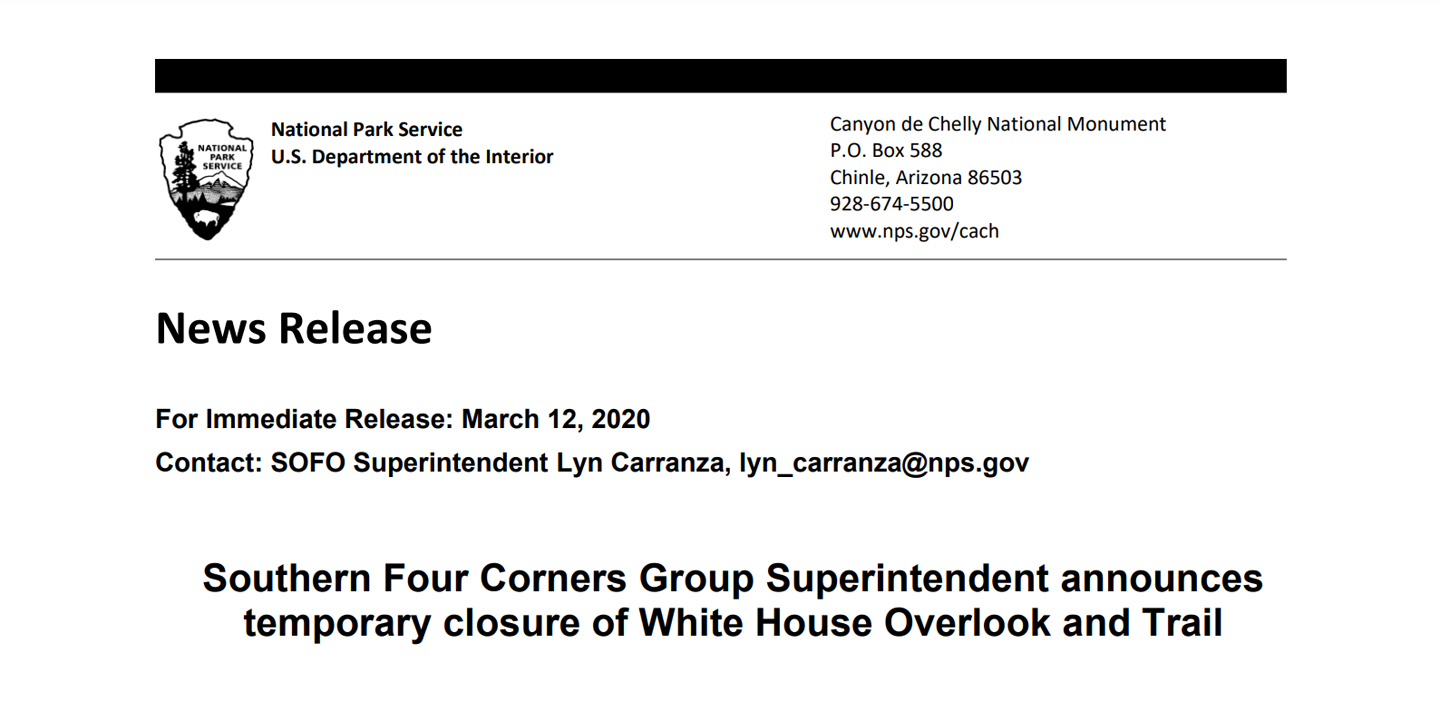
There were law enforcement issues leading up to the closure: cars parked at the overlook by visitors who were hiking the trail had become an easy target for thieves and vandals. After a rash of vehicle break-ins, the National Park Service took drastic steps to put a stop to it, and right about that time, the Coronavirus pandemic exploded into a global catastrophe. Navajo communities were particularly hard hit, leading to the closure of the entire Navajo Nation for more than a year.
The Navajo Nation is open once again, along with all of the Tribal Parks, including Canyon de Chelly National Monument. There was a mask mandate in place during the pandemic and for at least two years afterward, but that has now been lifted, so you may wear masks, or not, at your own discretion.
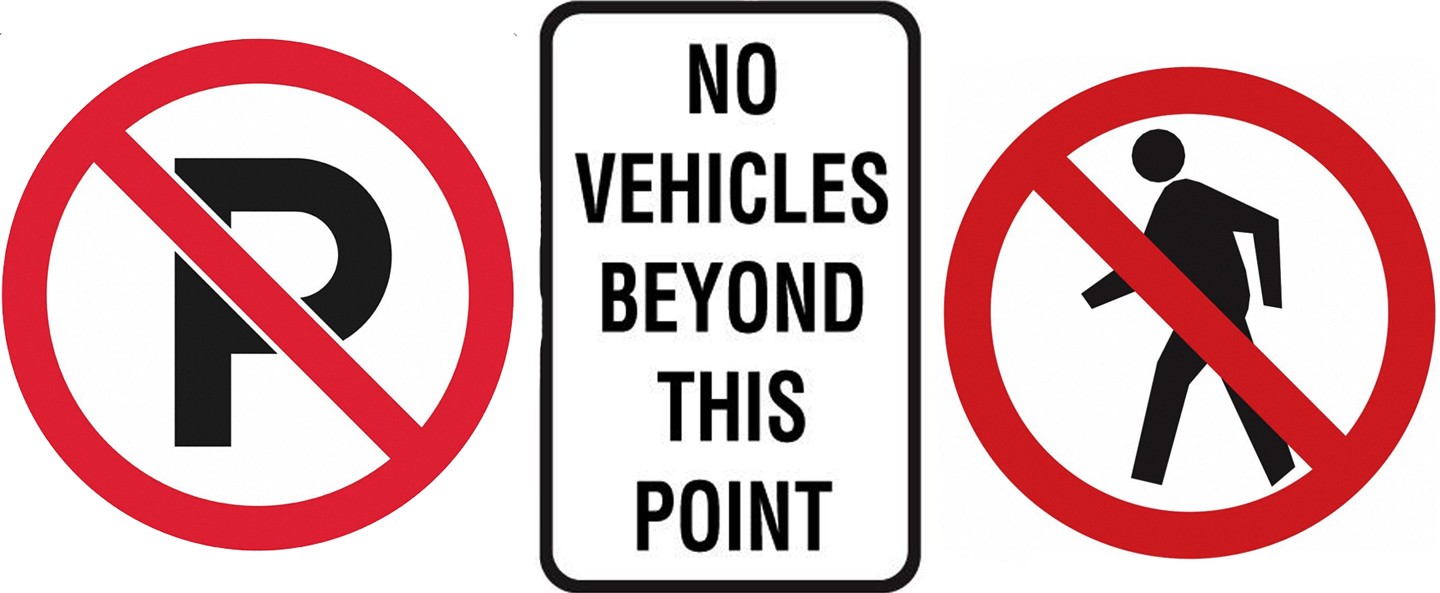
View of the White House Ruin from the Overlook
THE LATEST ANNOUNCEMENT, SEPTEMBER 2024:
UPDATE: SEPTEMBER, 2024:
White House Overlook and Trail to reopen in 2025!
The White House Overlook and Trail are closed until next season. The Navajo Parks and Recreation staff will oversee this area seasonally with staff to open gates and answer questions. This area may require a fee in the future.

A mile and a half beyond the Junction Overlook you’ll reach the turnoff for the White House Overlook, which is at the end of a half-mile long access road. (Note: the access road, the overlook, and the trail to the White House ruin are currently closed to visitors. See above.) The White House Overlook has always been one of the most popular. The vantage point offers a fabulous panorama of the Canyon, along with an unobstructed view of the White House, one of the best preserved ruins in the National Monument. Set into a sheer cliff striped with a natural coating known as desert varnish, the tableau is instantly recognizable as one of the best-known photographs of Ansel Adams, who is arguably the most famous photographer of the 20th century. Adams once described Canyon de Chelly as “the most beautiful place on earth.” He shot some of his favorite images from the canyon rim, including the iconic Canyon de Chelly from White House Overlook, taken in 1942.
Amazing views from the White House Overlook, including several telephoto close-ups of White House Ruin
WHITE HOUSE TRAIL
(Note: the White House Trail is currently CLOSED. See above.)
Quite apart from the extraordinary view, the White House Overlook is known for the trail that begins at the parking lot, and follows a moderate slope down to the canyon floor, 600 feet below.
Just across the (usually) dry wash is the famous White House Ruin, set in a natural alcove 40 feet up in the face of a spectacular sheer cliff. Dark stripes of an iron and manganese coating known as desert varnish look like they were applied with a god-sized, dripping brush.
Most days, there are Navajo vendors set up on the floor of the canyon near the ruin, selling jewelry and other hand made crafts at prices that are likely to be better than in local shops. There are restrooms–Porta-potties–but no other facilities, so those who make the hike are advised to bring plenty of water.
The whole trek weighs in at 2.5 miles, round trip, but it’s the second half that’s toughest, when you have to slog back up that trail that was so easy on the way down. The elevation here is in excess of 6,000 feet, so if you’re not in reasonably good shape, don’t underestimate the challenge!
Swirling sandstone, White House Trail
Prior to the closure in March of 2020, this trail and the area around White House Ruin were the only parts of the canyon accessible to visitors without a Navajo guide. It has yet to be determined whether those privileges will be reinstated when the White House Overlook re-opens. It’s possible that the trail will remain closed to visitors who are not accompanied by a guide.
An easy hike down a moderate slope takes you to the Canyon floor. The hike back up is a good bit tougher!
White House Ruin
WHITE HOUSE RUIN
The White House, which takes its name from a prominent section of upper wall still coated with fading white plaster, was built by the Anasazi, also known as the Ancestral Puebloans, in a natural alcove in a sheer cliff face, some forty feet above the canyon floor. When the dwelling was occupied, from 1060 A.D. until about 1260 A.D., there were as many as 80 rooms, multiple generations of multiple families living in this castle in a cave with a view. The residents used ladders to reach the alcove, and the relative inaccessibility was a natural defense against marauders from other tribes, as well as protection from the flash floods that periodically roar down the canyon.
The spectacular setting of this well preserved ruin, near the base of a soaring sandstone cliff streaked with desert varnish, is a classic, subject of many a famous photograph, and well worth the little bit of exertion required for the hike. At the present time, you need a Navajo guide to visit the White House.
Several views of the iconic White House Ruin
SLIDING HOUSE OVERLOOK
After returning to the main road (Rte 7) drive on another 3.6 miles (8.7 miles from the Welcome Center) to the turnoff for the Sliding House Overlook. The access road takes you another mile and a half to an observation area at the rim, where you’ll be rewarded with great views, in three directions, of soaring cliffs that dwarf the meager works of man.
Stellar views from the Sliding House Overlook
The Sliding House is the crumbling ruin of a mid-sized cliff dwelling, built on a ledge on the face of a cliff that’s in shadow much of the day, making it tough to get a clear view. Remnants of the adobe used in its construction are strewn down the slope below the ledge, as if the whole structure is sliding downhill.
Face Rock, with the surrounding cliffs and canyons
FACE ROCK OVERLOOK
Back to the main road one more time, then another three miles to the turnoff for C460, the road to the Face Rock and Spider Rock Overlooks. You’ll come to Face Rock Overlook first, after about two miles. This will be a quick stop, with a viewing area very near the road. Face Rock is a distinctive wall of sandstone, similar to Blade Rock at the Tsegi Overlook, but Face Rock, located in the deepest part of the canyon, is set among much taller cliffs. There are beautiful sandstone formations spread out below you in every direction, a view into the bowels of the earth that was a billion years in the making.
SPIDER ROCK OVERLOOK
A mile or so beyond the Face Rock Overlook, you’ll reach the parking area for Spider Rock, the last, and many would say the best of the seven overlooks on the South Rim drive. A 1/4 mile long paved walkway leads you through a stand of scrubby piñons and junipers to the edge of of an extremely sheer cliff. Be careful here. The elevation is more than 7,000 feet; if you think the walk left you breathless, wait until you check out the view!
On the other side of the railing, the canyon drops away, revealing a glorious tableau of blocky sandstone formations, threaded by the tree-lined wash, punctuated by the almost supernatural vision of the twin pillars of Spider Rock, 800 feet tall, thrusting out of the earth like cosmic fingers pointing to the sky, reaffirming an elemental connection.
For the Navajo, the formation is the home of Spider Woman, who uses the twin pillars as a part of her loom; according to legend, it was Spider Woman who taught the Navajo the art of weaving. The white color you can see at the tops of the pillars comes from the bones of naughty Navajo children, who were snatched from their beds at night and hauled to the top of the tower, where they were devoured by the Spider. Either that, or it’s bird poop, from the eagle’s nests that are in perennial use.
Spider Rock, as seen from the Overlook
Has anyone been up top to make sure there aren’t any bones–or giant spiders? A few intrepid rock climbers have scaled these sandstone pillars, and there was an infamous incident, when an ad agency hired a helicopter with a crane to set a pickup truck atop the lower spire for a television commercial. But all of that was years ago, before restrictions against climbing were quite so strictly enforced. Any adrenaline junkies out there who might be thinking about sneaking in to try a free climb–don’t do it. Intruding on that space goes beyond mere trespassing. Spider Rock is sacred to the Navajo, and that’s something we should all respect.
Perhaps the most famous misuse of the iconic pillars was in the movie MacKenna’s Gold, released in 1969, and partially filmed in Canyon de Chelly.
The film had A-List stars like Gregory Peck and Omar Sharif, and they used extraordinary shooting locations all over the western United States.
The movie flopped at the box office despite all that, because the screenplay was terrible, the editing was worse, and the special effects, which included the destruction of spider rock by a poorly simulated earthquake, were an embarrassment to the entire industry. (Navajo elders were particularly unhappy with that earthquake scene, considering it sacrilegious.) The poor domestic reception of the film didn’t slow it down internationally. The movie was wildly popular abroad, particularly in Russia and India. Go figure!
Spider Rock across the seasons. In winter, the water in the creek is frozen into a ribbon of ice.
MORE ABOUT CANYON DE CHELLY:
The Most Beautiful Place on Earth:
A Guide to Canyon de Chelly National Monument
This is an interactive Table of Contents. Click the pictures to open the pages.
Canyon de Chelly: Part 1: The Rim Drives
Most of Canyon de Chelly can only be seen by visitors who are accompanied by an authorized guide, but the Rim Drives are free of charge, no reservation required. Two roads, Indian Route 7, and Indian Route 64 diverge at the entrance to Canyon de Chelly National Monument. Route 7 follows the South Rim of the multi-pronged formation, providing access to seven overlooks, all with killer views into Canyon de Chelly. Route 64 follows the North Rim, and provides access to three more overlooks, with excellent views into the branch known as Canyon del Muerto.
The South Rim drive is a 36 mile round trip, from the Welcome Center to the Spider Rock Overlook and back again, making multiple stops in between. You’ll need a couple of hours to do it justice, depending on how much time you spend at each of the different overlooks. The North Rim drive is shorter, just over 26 miles round trip to the Mummy Cave Overlook. That drive requires another hour and a half, bare minimum, so if you’re going to do both, you should play it safe, and set aside half a day. I can guarantee you’ll consider it time well spent! <<CLICK to Read More!>>
The South Rim Drive
Indian Route 7 begins at the turnoff from US 190, and serves as the main road in the Navajo town of Chinle. If you follow it headed east, it will take you directly to the Visitor Center for the Canyon de Chelly National Monument. Stop there to pick up a map of the park, and to get current information about guided tours and other activities, as well as road conditions, and any closures that might affect your visit.
From the Visitors Center, bear right at the fork to stay on Indian Route 7, the South Rim Drive, and follow the signs to the overlooks.
<<CLICK to Read More!>>
Overlooking the White House
A mile and a half beyond the Junction Overlook you’ll reach the turnoff for the White House Overlook, which is at the end of a half-mile long access road. (Note: the access road, the overlook, and the trail to the White House ruin are currently closed to visitors.) The White House Overlook has always been one of the most popular. The vantage point offers a fabulous panorama of the Canyon, along with an unobstructed view of the White House, one of the best preserved ruins in the National Monument.
<<CLICK to Read More!>>
The North Rim Drive
Most visitors to Canyon de Chelly National Monument focus the bulk of their attention on the South Rim Drive, but in my view, your trip simply won’t be complete if you don’t take in the North Rim Drive as well.
Seven miles from the Welcome Center is the turnoff to the Antelope House Overlook, which is two miles further along a paved access road. The payoff is a fabulous bird’s-eye view of a quite wonderful Anasazi ruin known as the Antelope House. You can still see the crumbling foundations of dozens of rooms, a tower, and at least four circular kivas...
<<CLICK to Read More!>>
Canyon de Chelly: Part 2: Chinle Wash
Canyon de Chelly National Monument is a place for the whole world to enjoy and admire, just like all of our national parks and monuments, but at Canyon de Chelly there is an essential difference: the rim drives and most of the overlooks offering views into the beautiful canyon are open to the public all year around. The canyon itself, including all hiking trails and Jeep tracks, all the ruins and the rock art, in essence, anything below the canyon rim, all of that is private property, off limits to everyone save the handful of Navajo families who own the land on the canyon floor.
The rest of us can go in, but only to certain areas, and only if we’re accompanied by an authorized guide. A Navajo guide can take you into the canyon in their SUV, or, if you prefer, you can join a guided hike, or a trail ride on horseback. The standard Jeep tours, which are the most popular, range from three to six hours in length. The longer tours cover the highlights of both of the primary gorges, Canyon De Chelly, and Canyon del Muerto.
The series that follows is a detailed account of my own experience in this remarkable place. <<CLICK to Read More!>>
A Timeless Journey into the Heart of the Navajo Nation
At the beginning of our trip, we asked Sylvia to show us her favorite petroglyphs, along with the usual ruins and rock formations, and she did not disappoint. Our first stop, very near the mouth of the canyon was a prehistoric bulletin board she called Newspaper Rock. A smooth segment of cliff face coated with dark desert varnish, featuring an area at least forty feet wide filled hundreds of petroglyphs. The symbols weren’t carved into the rock, and they are not painted. These artists pecked away the dark varnish, creating their pictures by exposing the lighter colored rock underneath: antelope, birds, hunters, and a multitude of intriguing symbols.
<<CLICK to Read More!>>
Ancient Stories Etched in Stone
A short distance from Newspaper Rock, just a few steps away along the base of the cliff, we came to another set of petroglyphs featuring riders on horseback. These were most certainly Navajo, and likely date back to the 1800’s. They shared this shady space with other images that were obviously much older. There were hunters, deer, birds, handprints, and more. We crowded in close for a better look.
<<CLICK to Read More!>>
Kokopelli and the Lightning Spear
“When you look at this, there’s a man holding a staff; out of the staff there’s this energy that’s coming out. The figure in black is the patient. The one in yellow is the shaman. The important men of the village are up on the side here, so this was a very sacred ceremony that they were doing. And there are some other drawings on the side; this one here is like a figure of the holy people, because it’s way up there, and it only has the head, and not the arms or the legs. You see a lot of people drawn, and there’s a bird there. And these are drawings of, like, clan systems. The bear, the turtle, and the antelope down here.”
I was probably getting a bit starry-eyed at that point. Barely three miles into the canyon, we’d traveled a thousand years in just under a hundred minutes, and we were barely even underway!
<<CLICK to Read More!>>
Where Canyons Collide
Just around the bend the canyon opened up into an area wider than any other we’d seen, and right in the middle was a monolithic block of sandstone known as Dog Rock. To the left was the north fork of the canyon, Canyon del Muerto, and to the right, the south fork, Canyon de Chelly itself. The cliffs soared at least 200 feet above our heads, and halfway up the sheer face opposite was another alcove filled with crumbling adobe, a site called Junction Ruin. A bit smaller than First Ruin, and a bit less well preserved, this is an Anasazi structure dating to the same approximate era. The ruin is clearly visible from above at the Junction Overlook on the South Rim Drive; it looks a bit different when viewed from below...
<<CLICK to Read More!>>
Canyon de Chelly: Part 3: Canyon del Muerto
The left hand fork is the spectacular work of nature known as Canyon del Muerto. The star attraction of this route is the Mummy Cave Ruin, the largest in the area, built on a ledge between a pair of deep caves, high on the face of a cliff in an extraordinary natural amphitheater. It’s a 24 mile round-trip from the Junction, twelve miles of rough road in each direction, with enough twists and turns to qualify as a carnival ride–along with plenty of mud! Along the way you pass the Ledge Ruin, Antelope House Ruin, Navajo Fortress, and Standing Cow Ruin, along with some extraordinary rock art.
The most popular tours last between 3 and 4 hours. Most of them travel into both canyons, but don’t go all the way to the end of either road. Only the longer tours include Spider Rock or Mummy Cave, and only the all day tours include both. Private tours offer the most flexibility, and in most cases, a more comfortable ride.
<<CLICK to Read More!>>
Ruins and Rock Art
In this pictographic sequence, the Utes are on the left, mounted on horseback, with shields and lances, while the Navajos are on the right, on foot, and clearly outnumbered. In one version of the story, just as in Sylvia’s account, the attack took place during a Night Way healing ceremony, in the winter, catching the Navajo by surprise, and at a deadly disadvantage.
The drawings are charcoal, except for the shields, which were painted with pigment made from the bee weed plant. The sandstone overhang provides some protection, but after 150 years or more, the panel is weathering, starting to fade and flake away. Many of the rock art panels in these canyons are in danger of irreversible deterioration from exposure to the elements. Pictographs such as these, done with charcoal and other natural pigments, are particularly vulnerable to the ravages of time.
<<CLICK to Read More!>>
Antelope House
Antelope House was formally excavated in the early 1970’s, by archaeologists working with the National Park Service. Each new culture that occupied this site built atop the remains of their predecessors, so as researchers dug into the stratified foundations, they found the pit houses of the Basket Makers at the bottom, and layers of increasingly sophisticated cultural remains, from the Ancestral Pueblo to the Pueblo people, the Hopi, and the Navajo, each of these groups contributing to the timeline of an area that is exceptionally rich in history.
Of all the ruins and other archaeological sites in Canyon de Chelly, Antelope House is the most thoroughly investigated. That’s at least partially due to simple ease of access: unlike most of the ruins in the canyon, all the primary structures at this site are at ground level.
<<CLICK to Read More!>>
Standing Cow: A Home Among the Ruins
The hogan, much newer than the other structures, was built using sandstone bricks recycled from the surrounding ruins. That would never have been allowed today, but at the time, before the National Monument was established, there weren’t any rules against it, so Sylvia’s great grandfather was simply being practical, using what was available. Today, Standing Cow is on all the maps, as much a part of the human landscape of Canyon de Chelly as the White House and the Mummy Cave. We felt quite privileged to be there with someone who was so directly connected to all of it.
<<CLICK to Read More!>>
Blue Bull and Mummy Cave
300 feet above the canyon floor, there are two deep alcoves filled with ruins, and on a wide ledge between them, a large, multi-story pueblo, partially reconstructed, and quite impressive. The setting is a natural amphitheater, and the overall aspect of the place is simply stunning.
Occupied for a thousand years, from around 300 A.D. until 1300 A.D. The whole complex, including the main building and the structures in the two flanking alcoves had as many as 70 rooms, including living quarters, ceremonial spaces, and storage.
<<CLICK to Read More!>>
Canyon de Chelly: Part 4: The Road to Spider Rock
Today, only authorized Navajo owned vehicles are allowed inside Canyon de Chelly, but this was in 2013, when it was still possible to drive yourself in your own 4×4, as long as your Navajo guide rode along with you. That arrangement was Sylvia’s specialty, and driving through that canyon, with her ongoing expert narrative providing background on all the points of interest, was some of the best fun I’ve ever had.
The first part of the route was aleady familiar to me. We entered Chinle Wash from that same dirt road, just past the Visitor’s Center, and I took off down the sandy creek bed, keeping up a steady speed and zig-zagging diagonally across the deepest ruts, to avoid getting trapped.
We passed by all the places where we’d stopped the day before, and made it all the way to the junction in just over half an hour. This time, we took the right hand fork, and we hadn’t gone far when we ran into our first big challenge of the day: a steep downslope that crossed a wash, with deep mud at the bottom of the hill.
<<CLICK to Read More!>>
Riding the Rainbow to the Universe
Viewing Spider Rock from below provides a dramatically different perspective on this extraordinary formation. From above, you’re looking down on the whole tableau, and Spider Rock, shorter than the soaring canyon walls, appears as one small part of the larger scene. From below, from the floor of the canyon looking up at it, you can see just how BIG the danged thing is. At 800 feet in height, it’s a good bit taller than your average 50 story sky scraper, and it completely dominates the landscape.
<<CLICK to Read More!>>
The Oldest White House
At the center of the upper section is a large room, 12 by 20 feet, with a front wall that is 12 feet high and made of stone that is two feet thick. This wall was coated in white plaster, decorated with a yellow band, and it is this white wall, which can still be seen, that inspired the name La Casa Blanca, the White House, to this ancient dwelling that has endured in this place for nearly a thousand years.
<<CLICK to Read More!>>
YOU MIGHT ALSO ENJOY:
San Xavier del Bac: The White Dove of the Desert
San Xavier has all of the traditional elements of a Spanish Colonial church, along with many others that are quite unique. The craftsmanship of the original building is superb, and features many fascinating details.
<<CLICK to Read More!>>
A Serendipitous Sunset at Shiprock
I noticed an odd rock formation coming up fast on the left side of the road, almost like a wall built of angular blocks. Shiprock was close, but hidden from view by the wall as I zoomed toward it. After I passed the odd formation, I stole a quick glance in my rearview mirror, and what I saw was a scene so other-wordly, it literally stopped me in my tracks!
<<CLICK to Read More!>>
There's nothing like a good road trip. Whether you're flying solo or with your family, on a motorcycle or in an RV, across your state or across the country, the important thing is that you're out there, away from your town, your work, your routine, meeting new people, seeing new sights, building the best kind of memories while living your life to the fullest.
Are you a veteran road tripper who loves grand vistas, or someone who's never done it, but would love to give it a try? Either way, you should consider making the Southwestern U.S. the scene of your own next adventure.
ALASKA ROAD TRIP:
MEXICAN ROAD TRIP (IN THE LAND OF THE MAYA):
ARIZONA AND NEW MEXICO:
SOUTH AMERICA:
PHOTOGRAPHY:
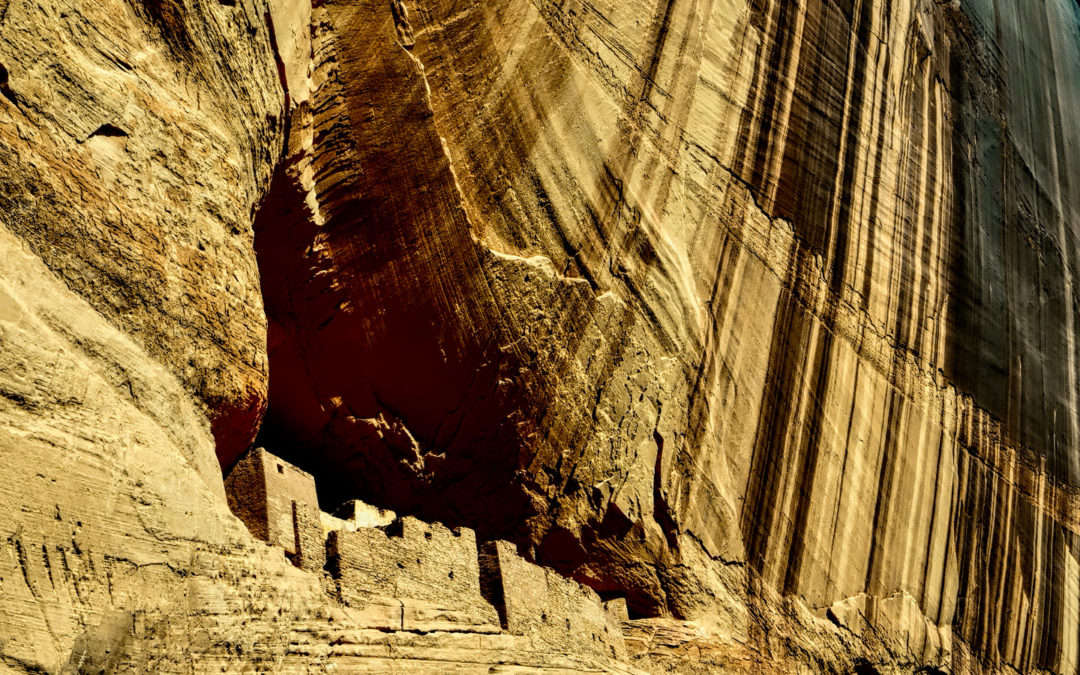
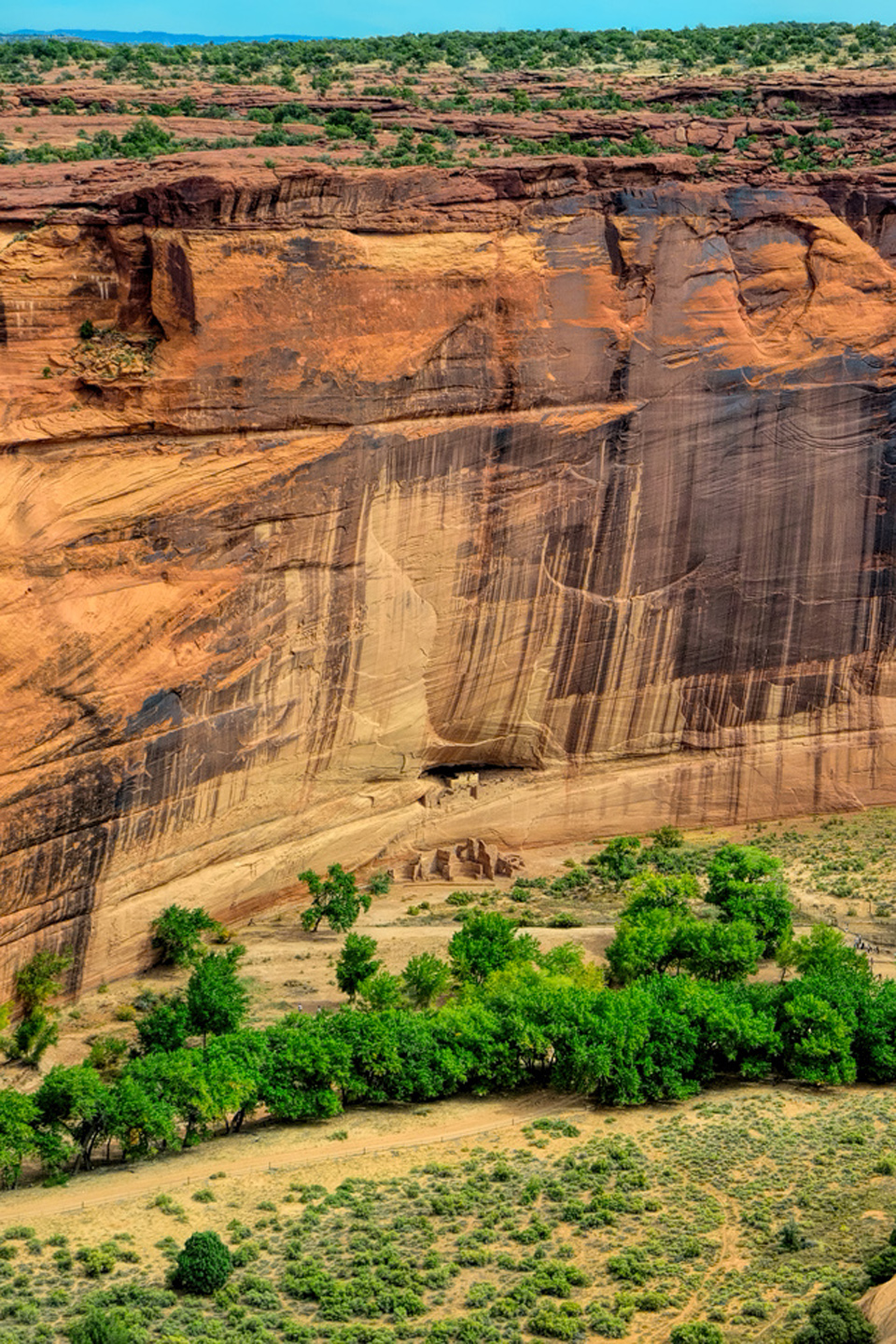
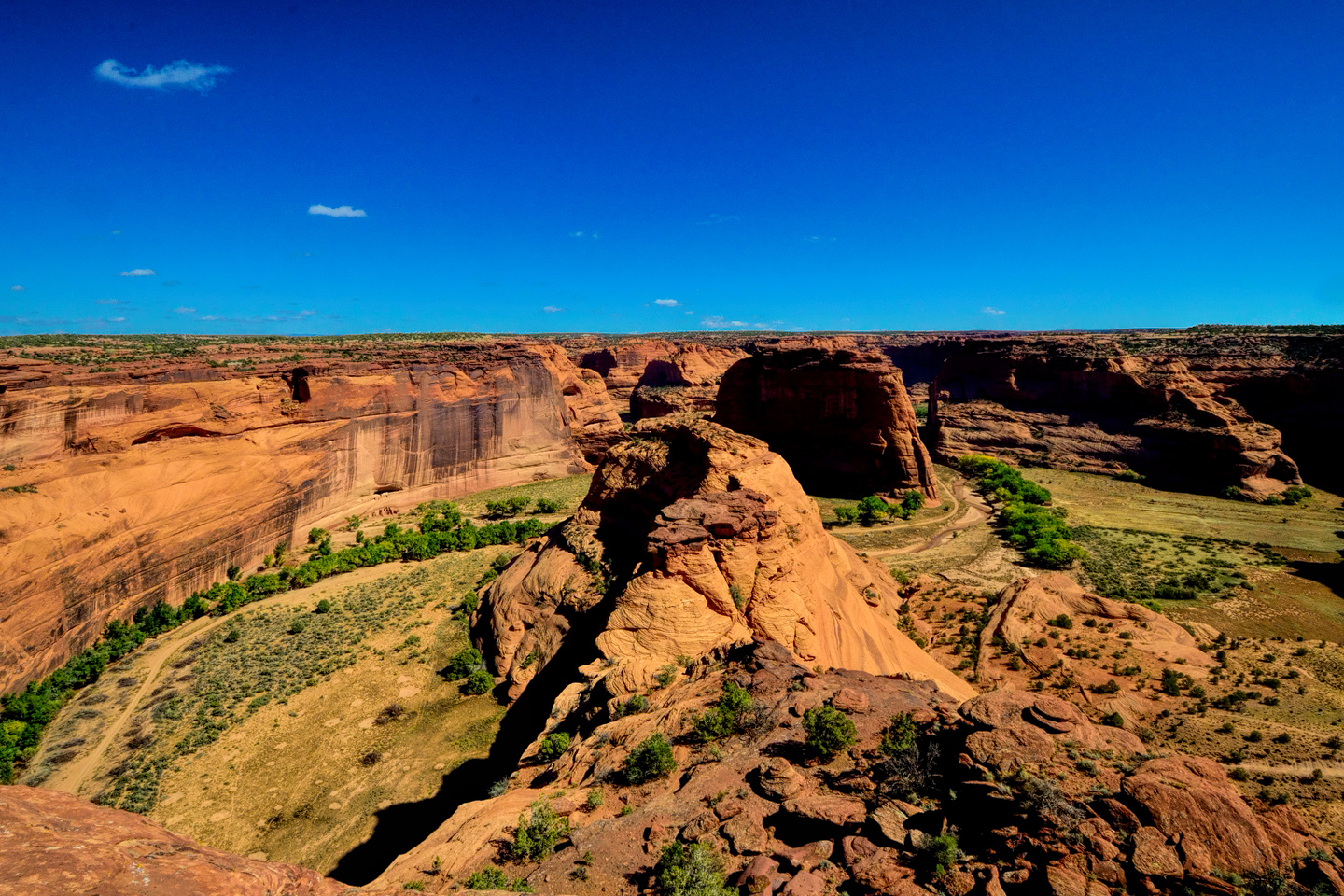
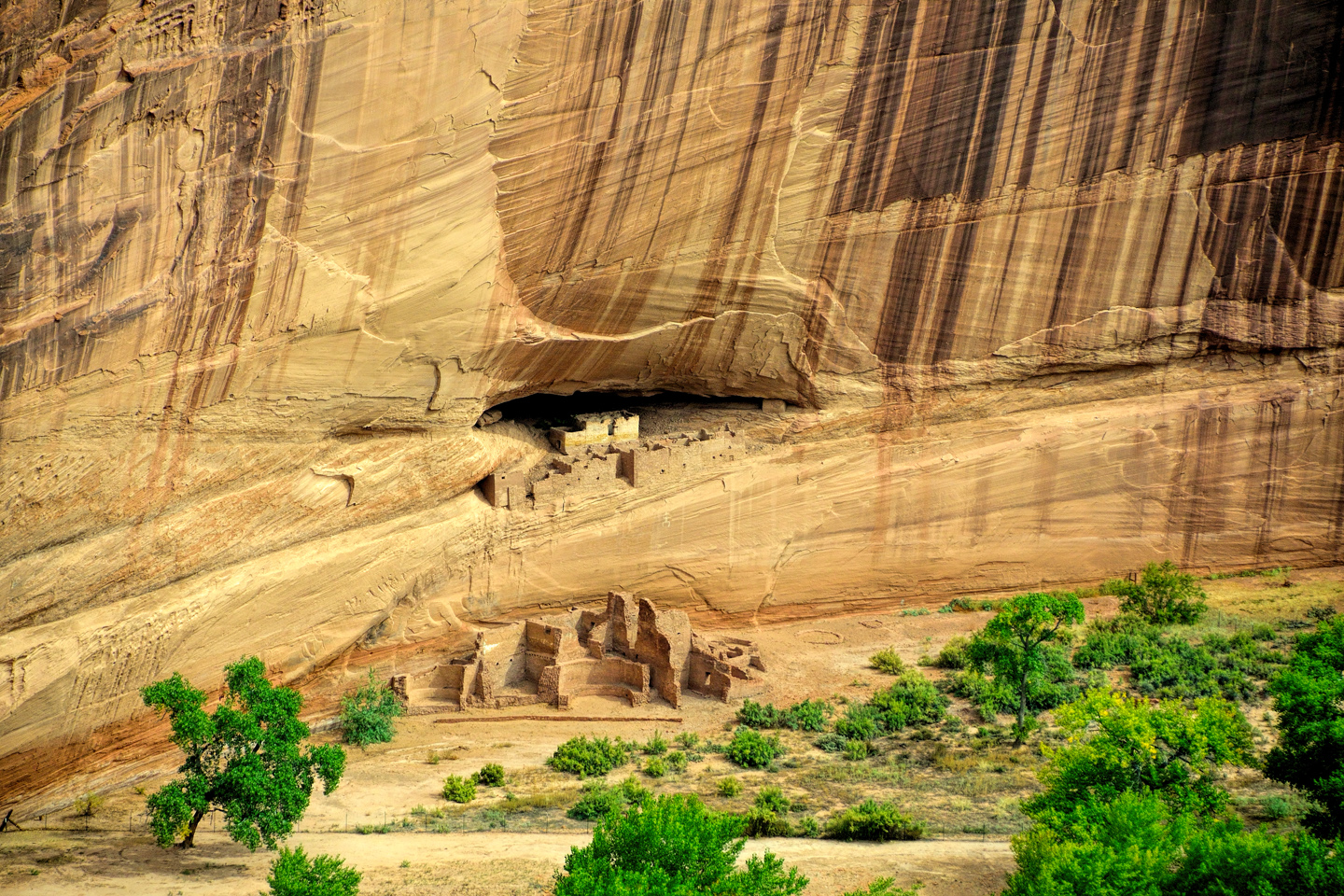
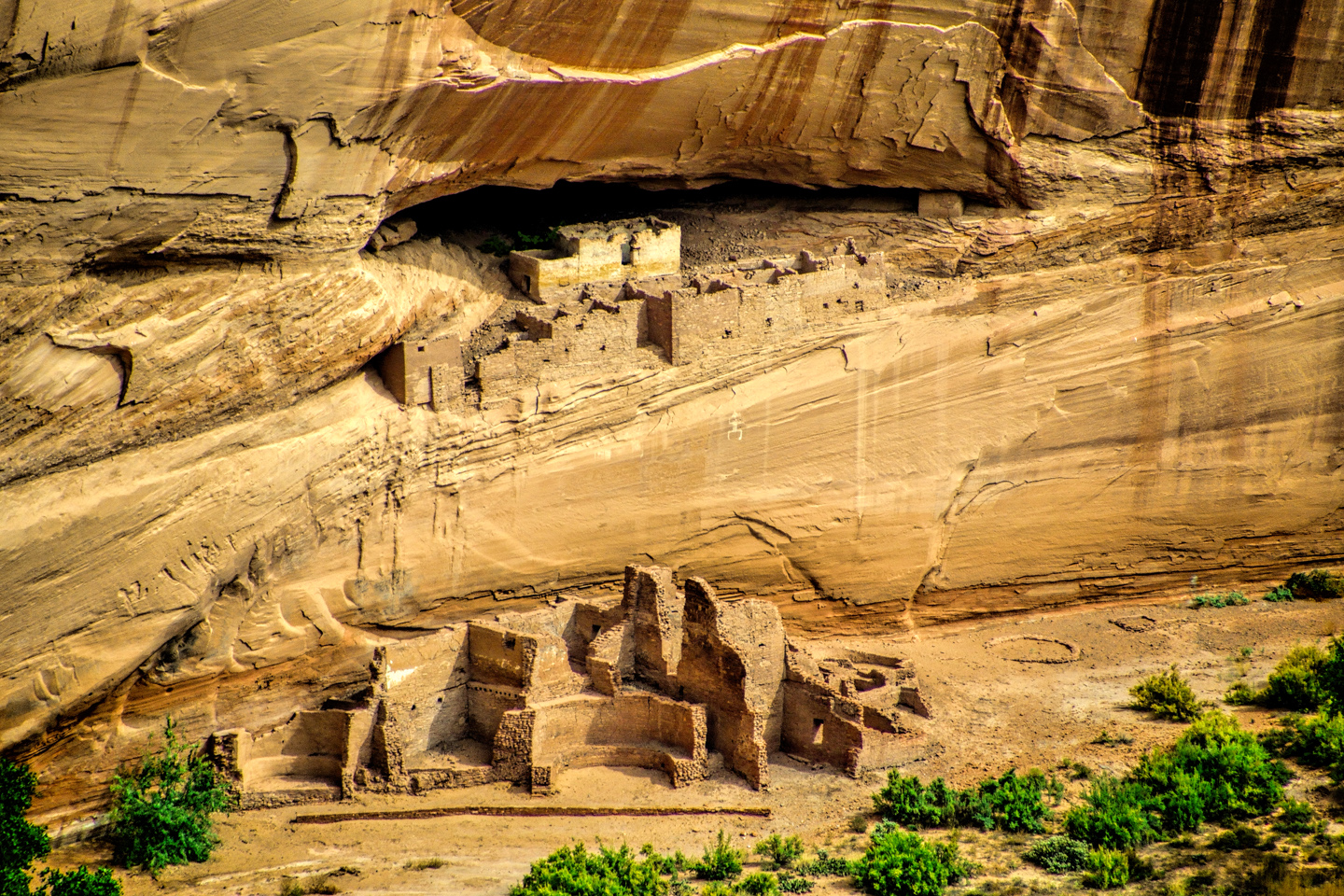
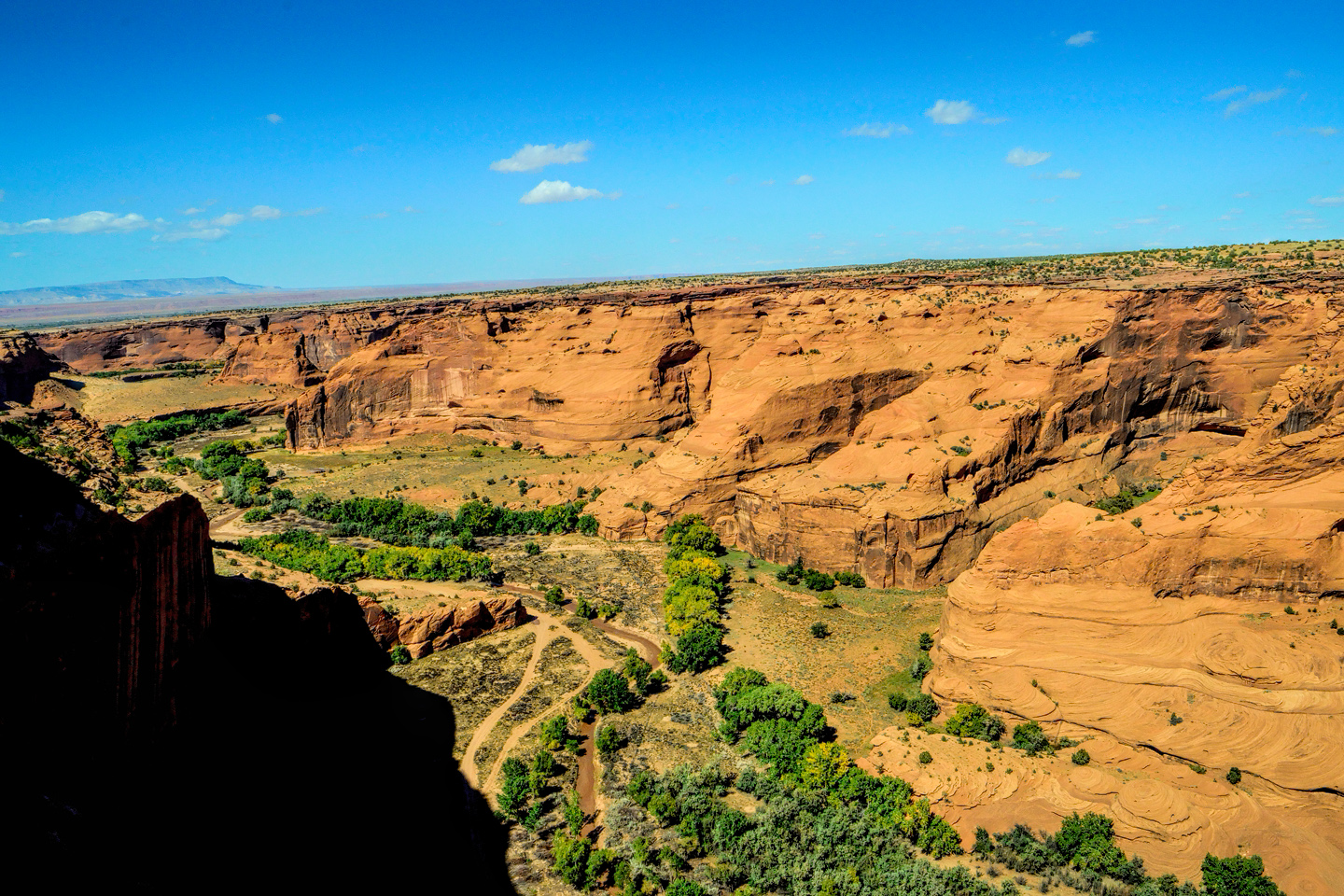
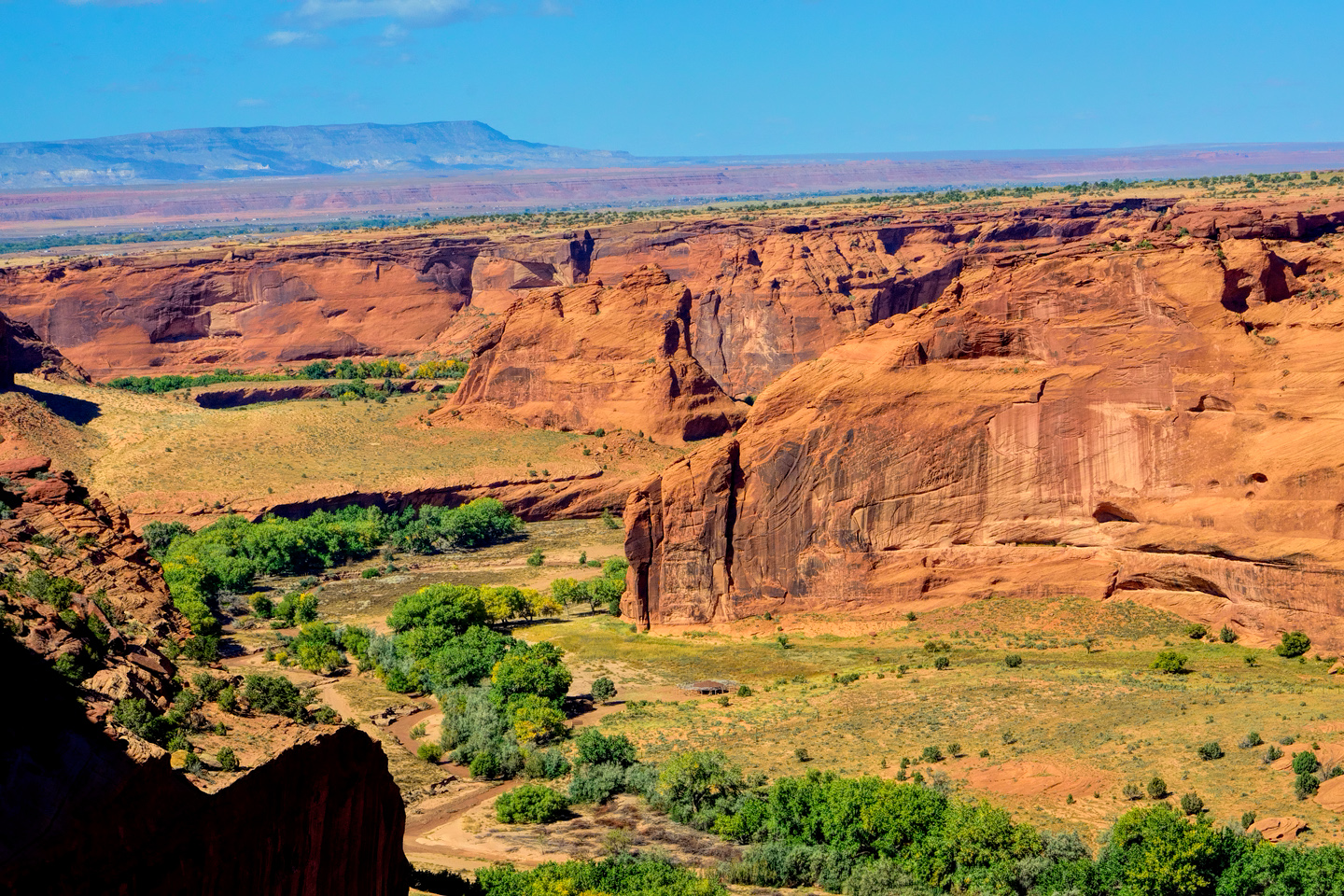
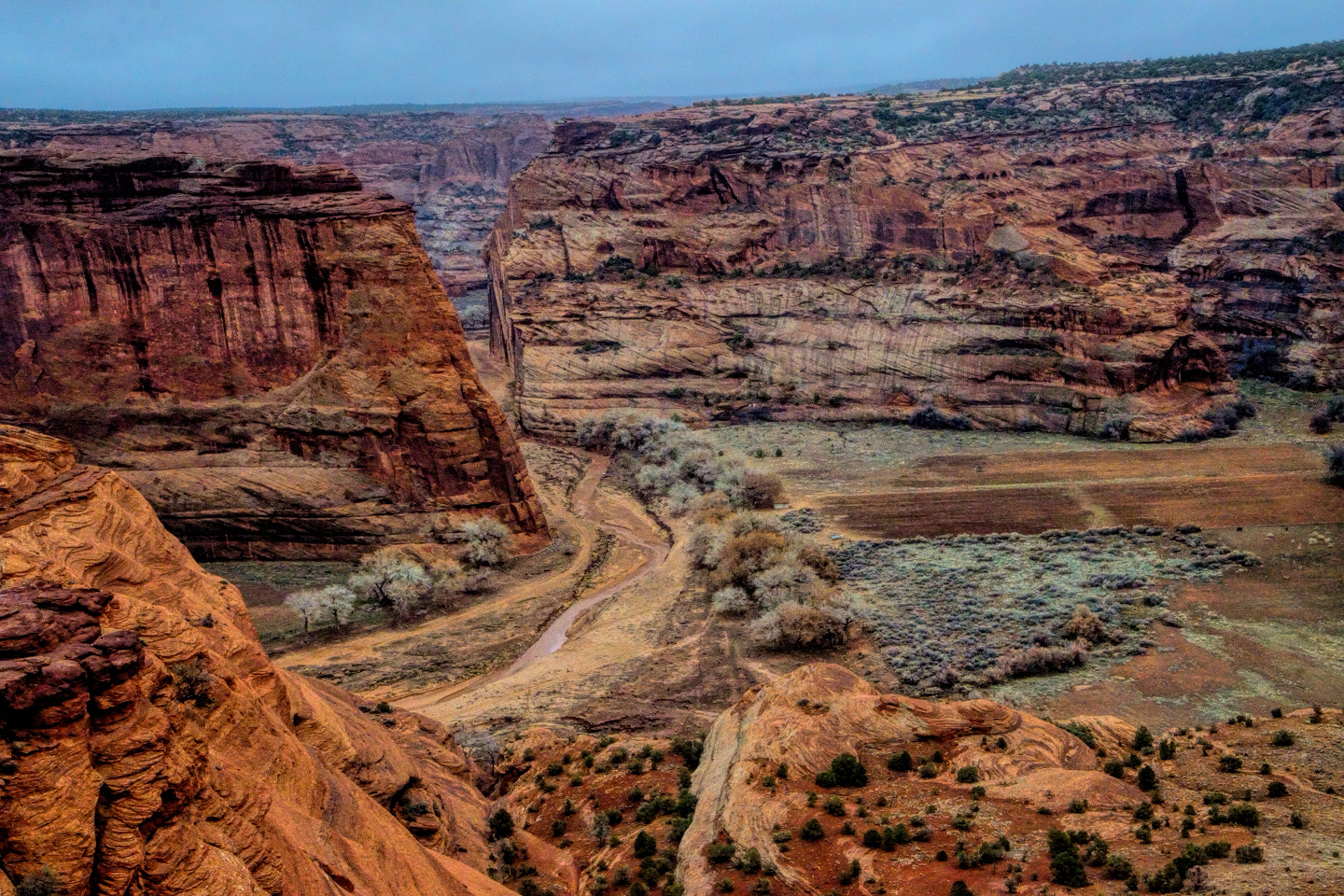
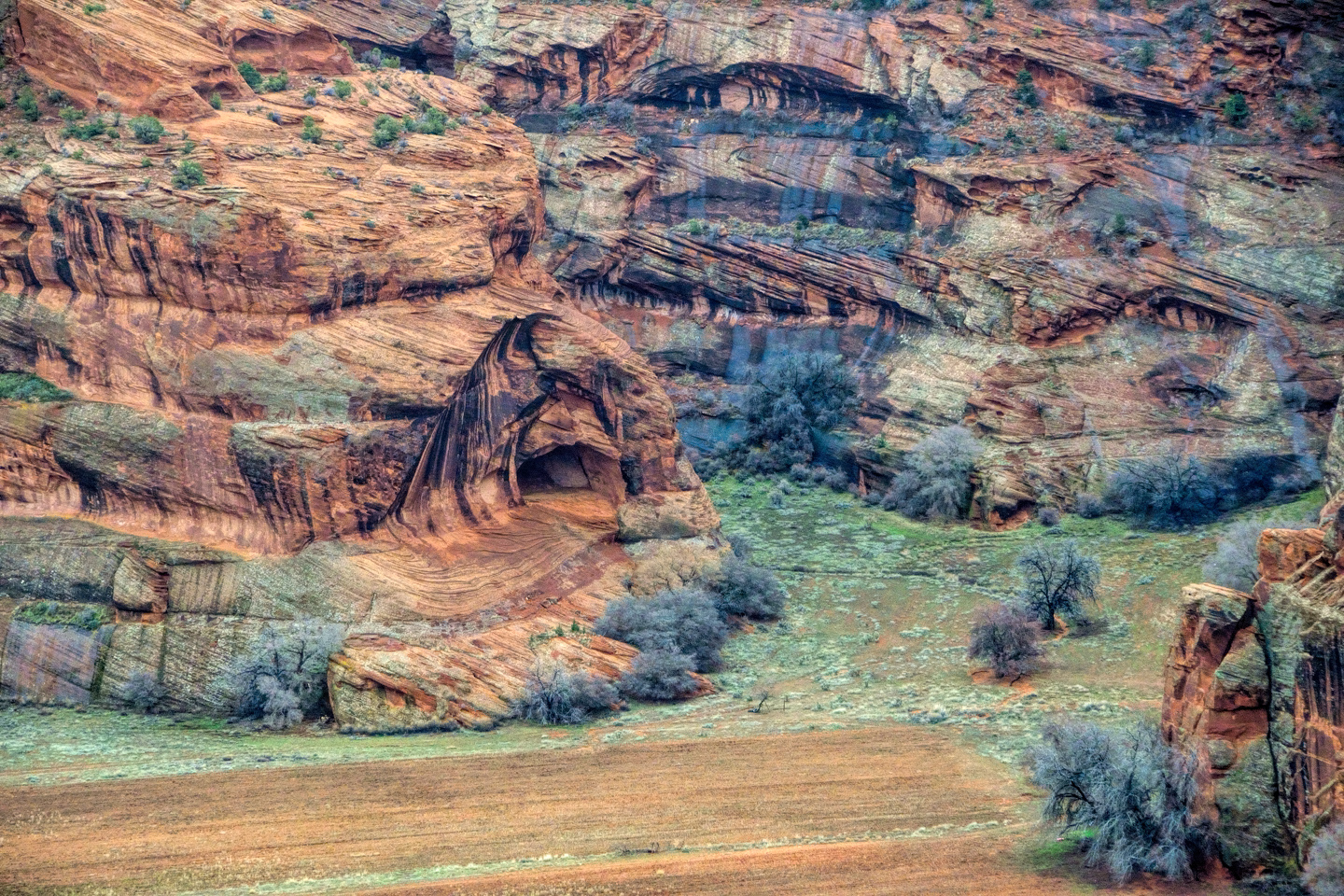
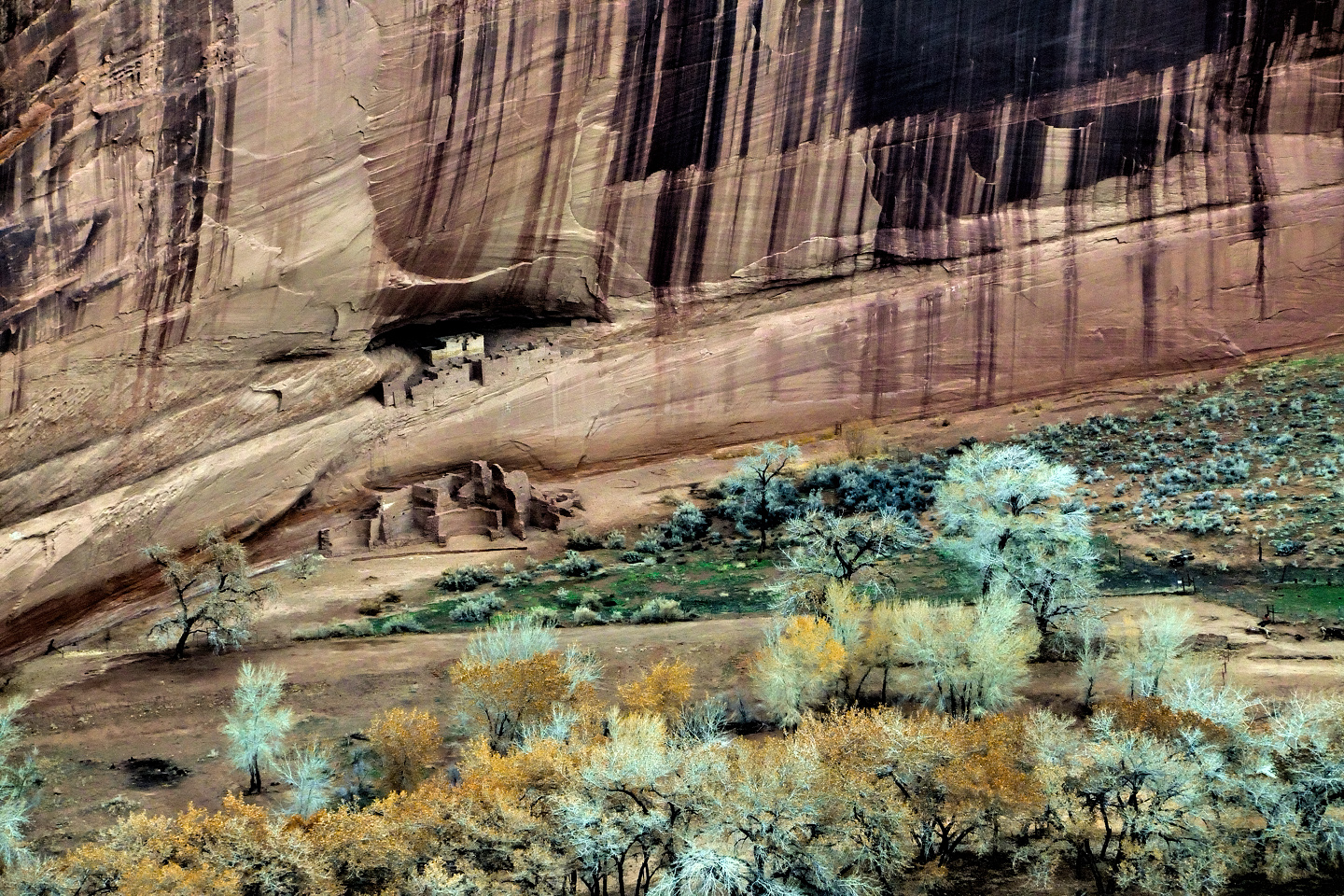
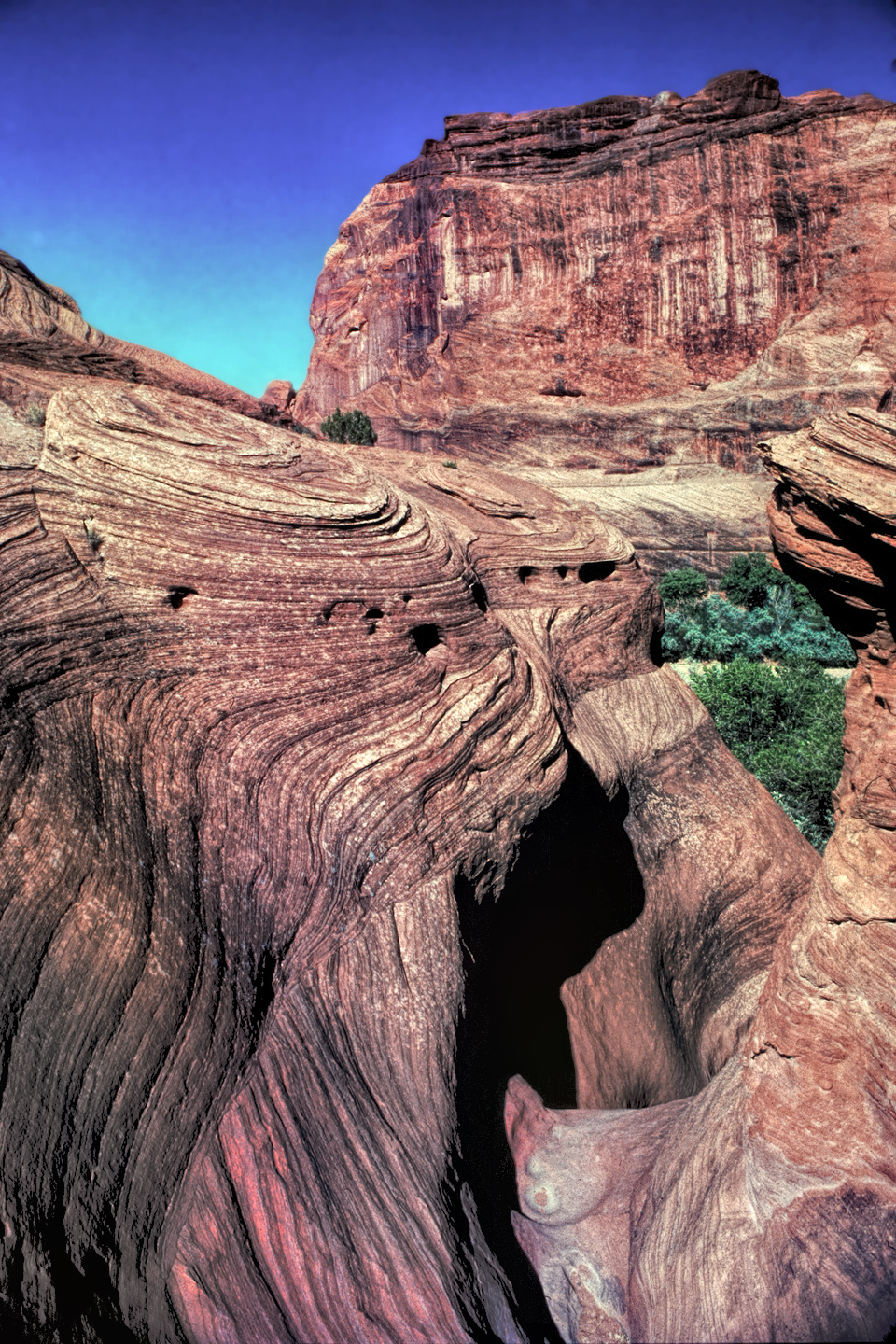
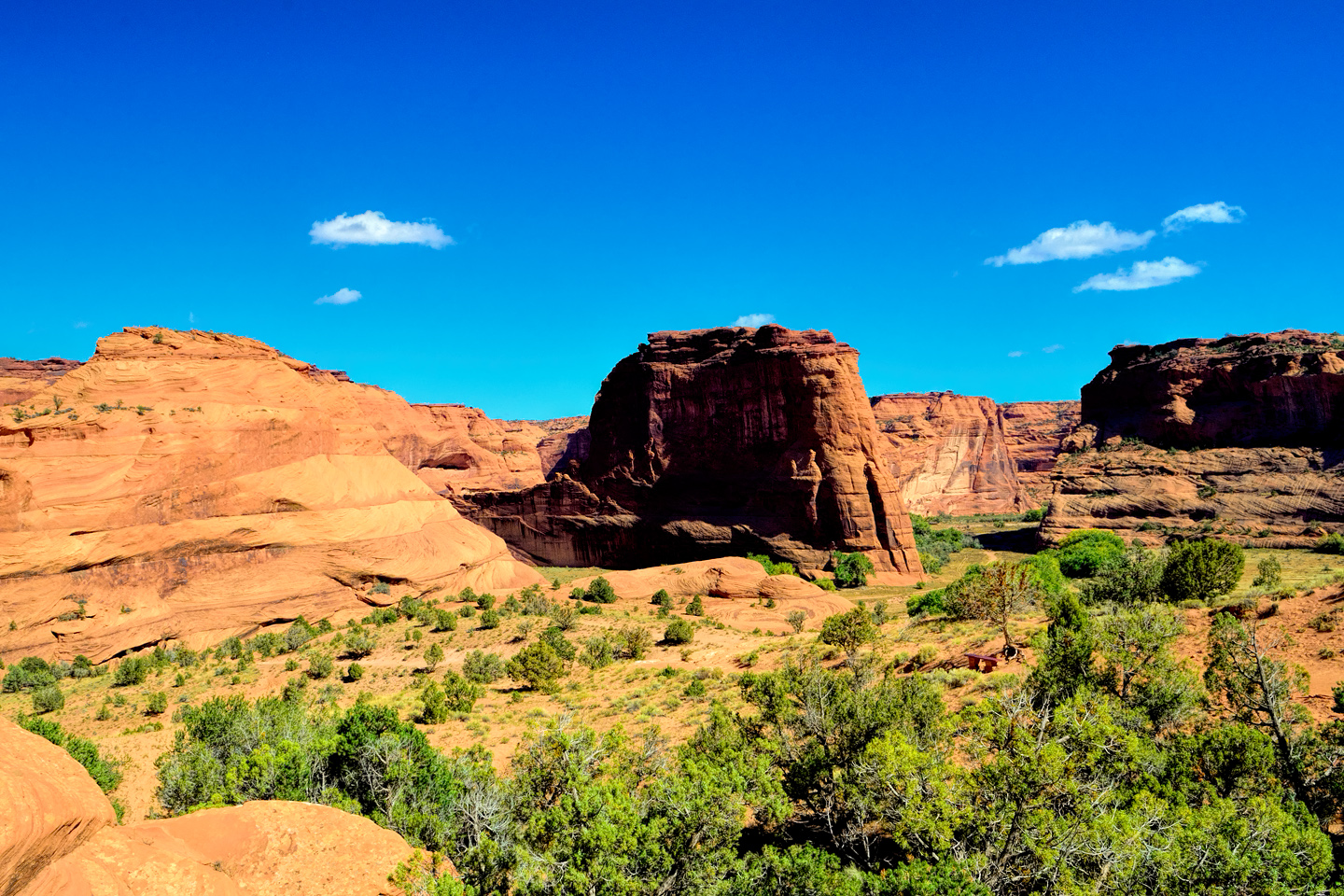
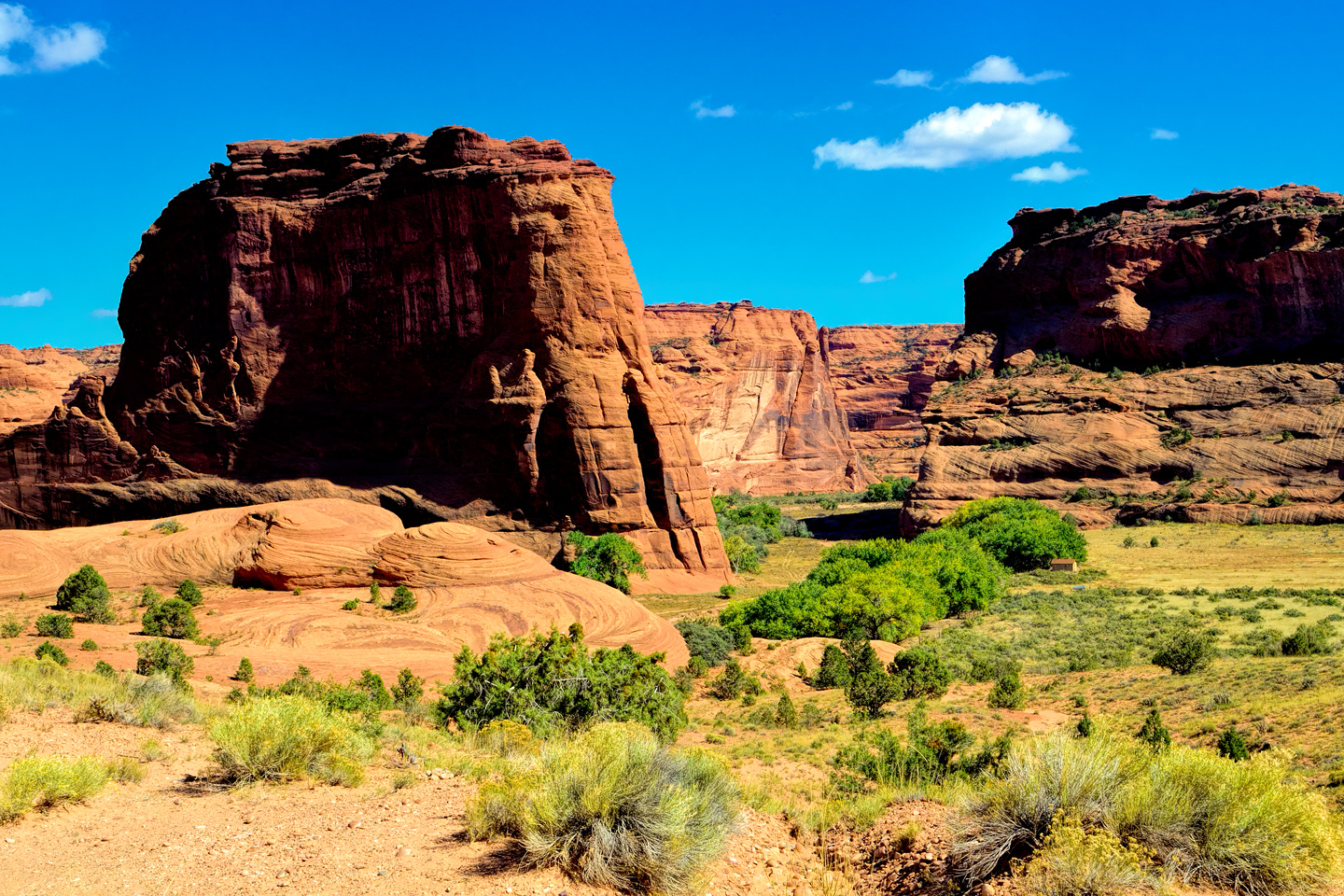
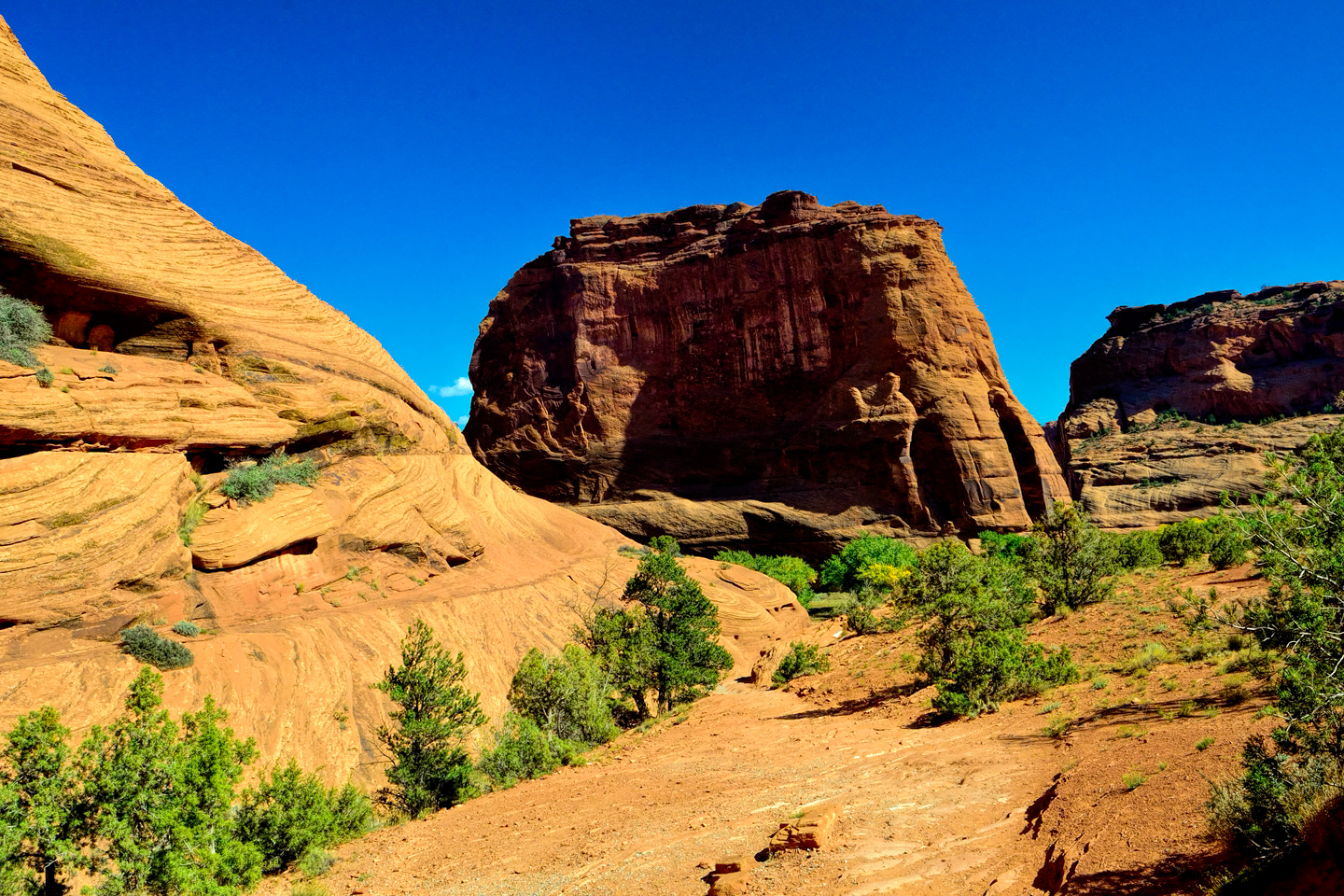
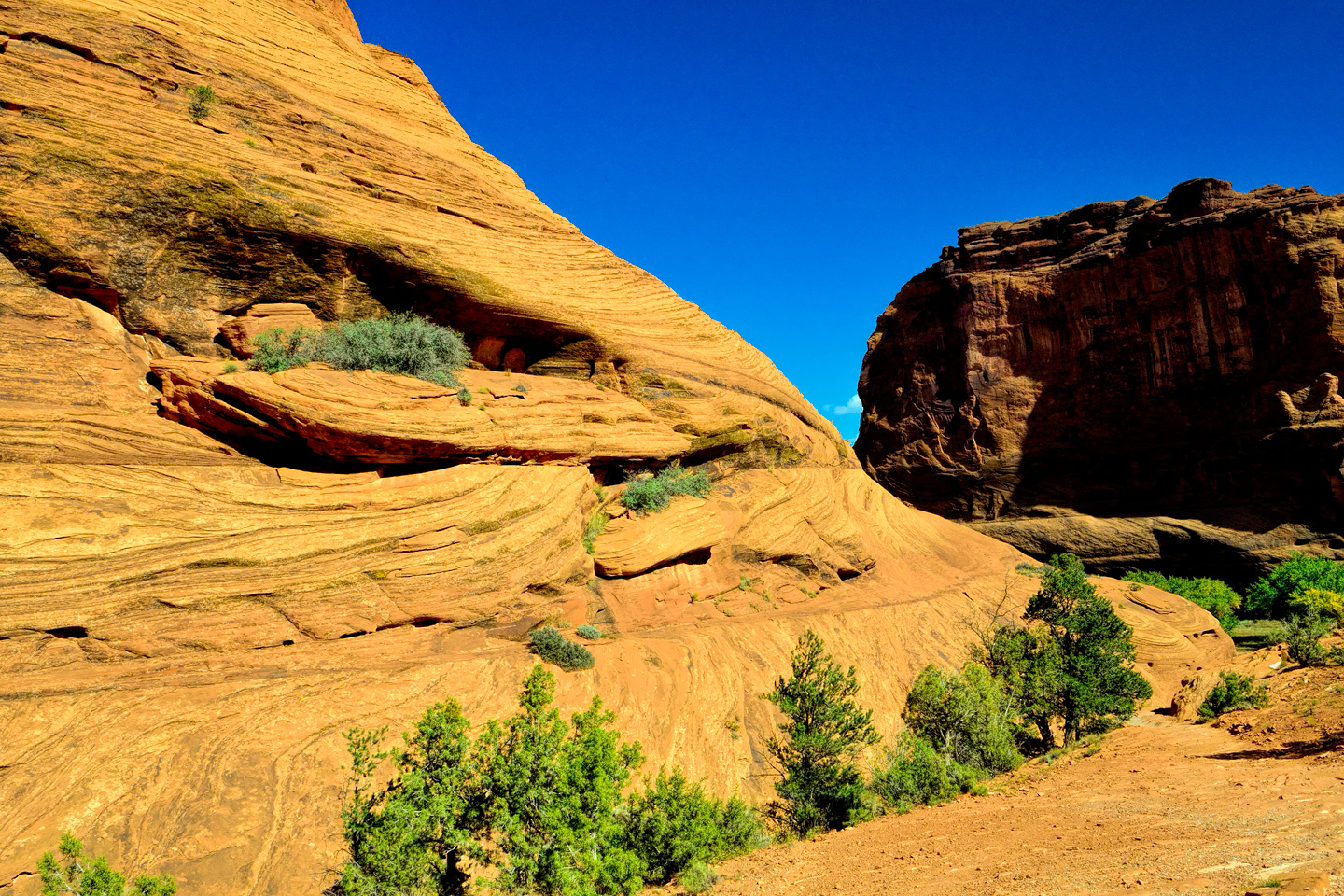
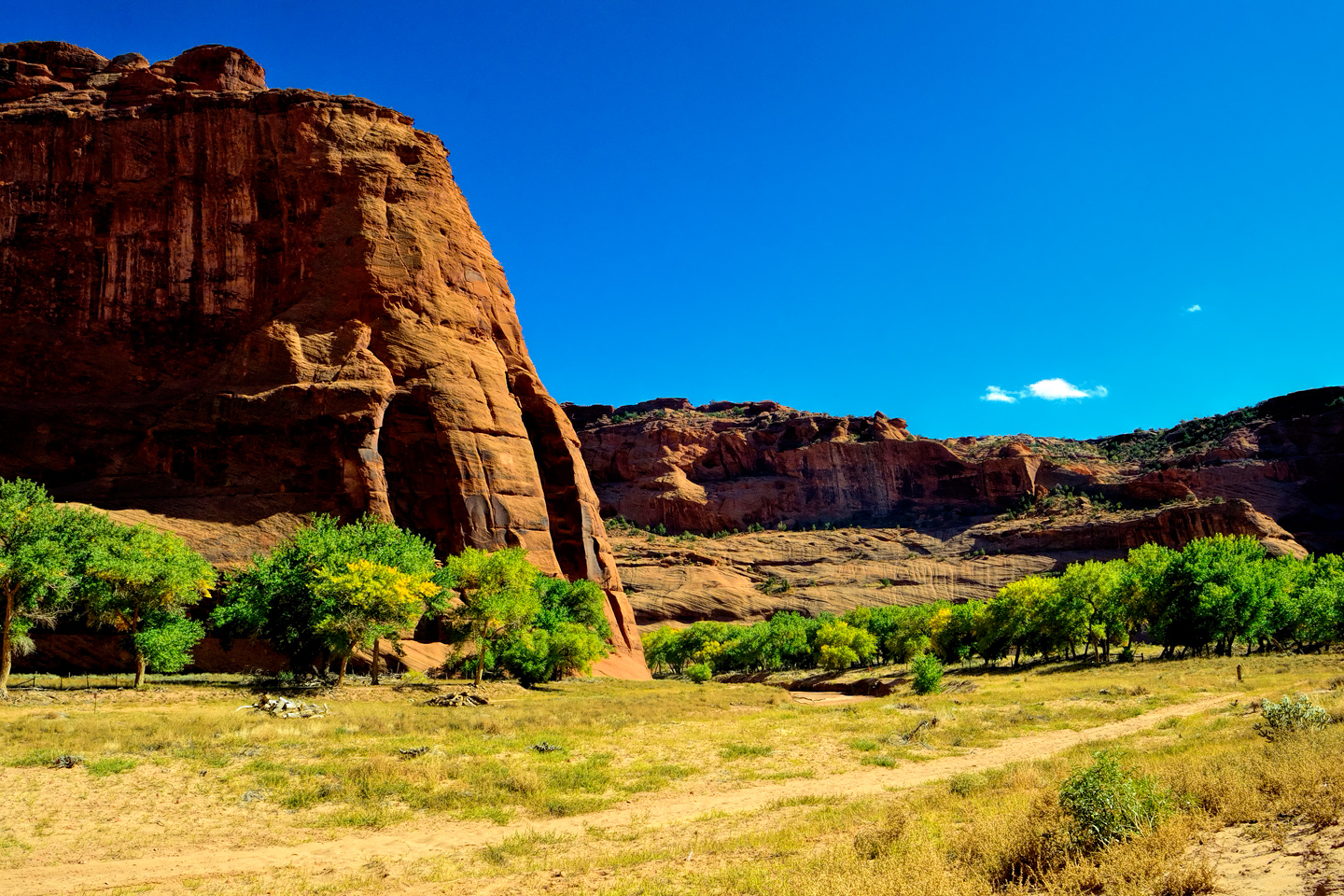
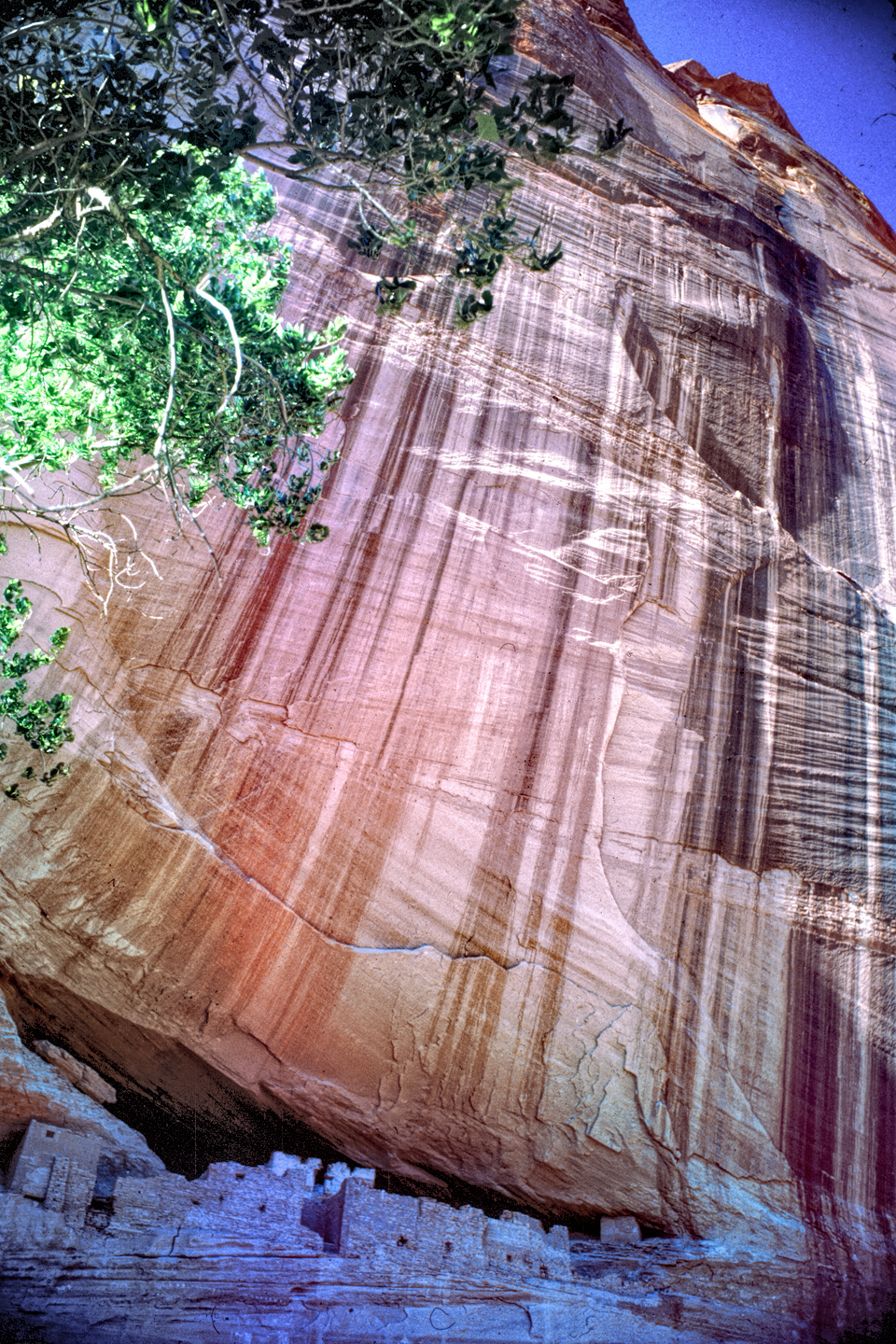
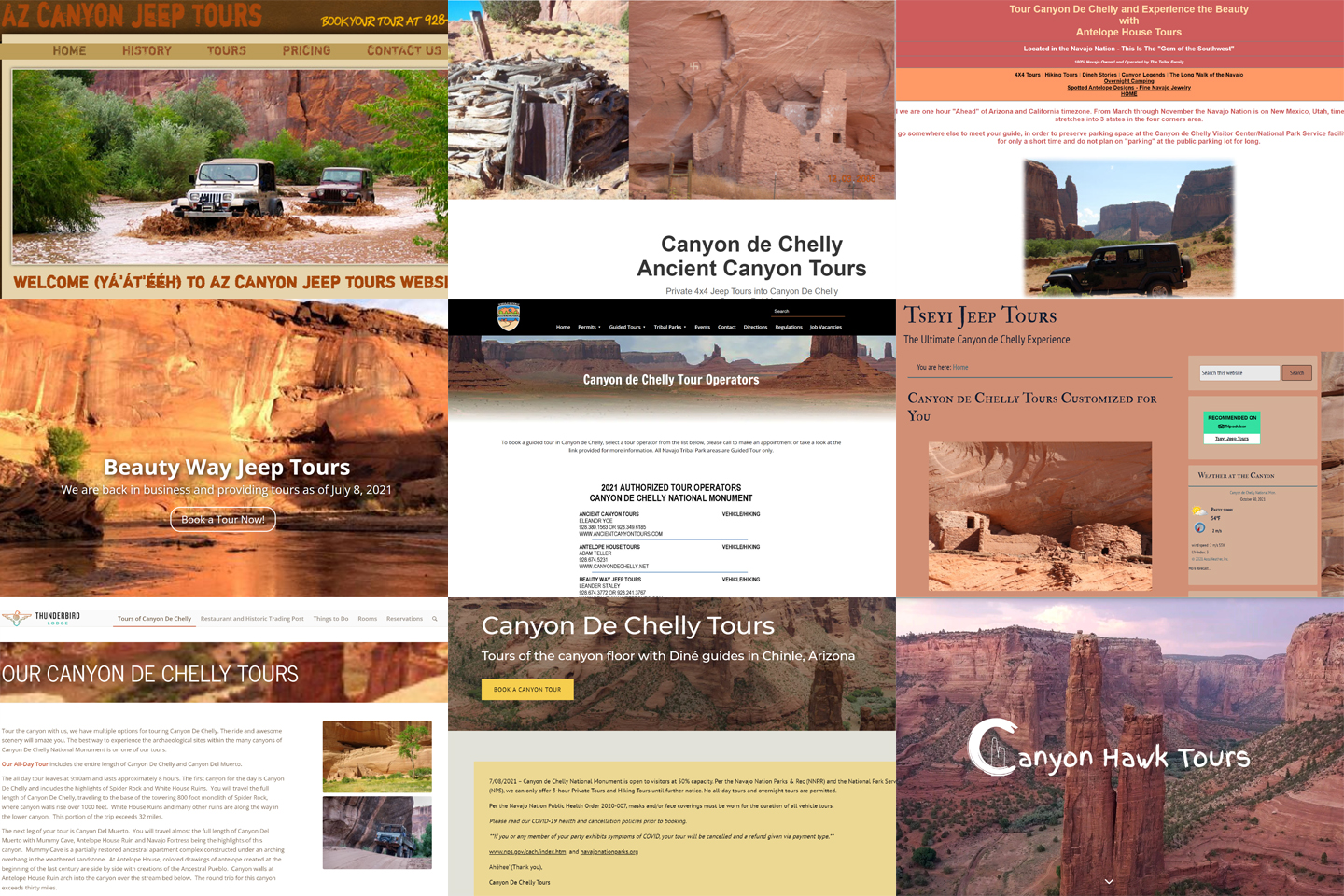
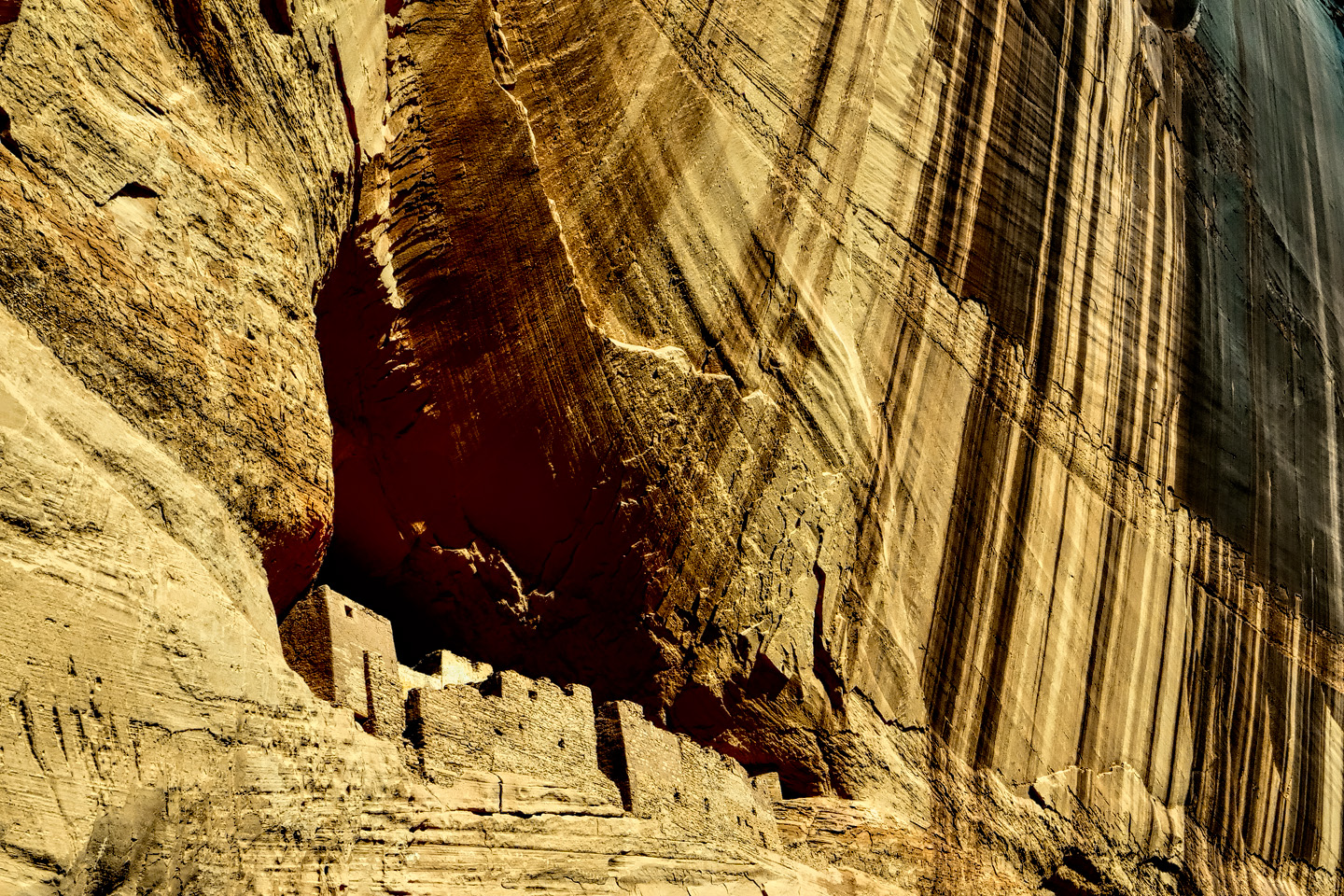
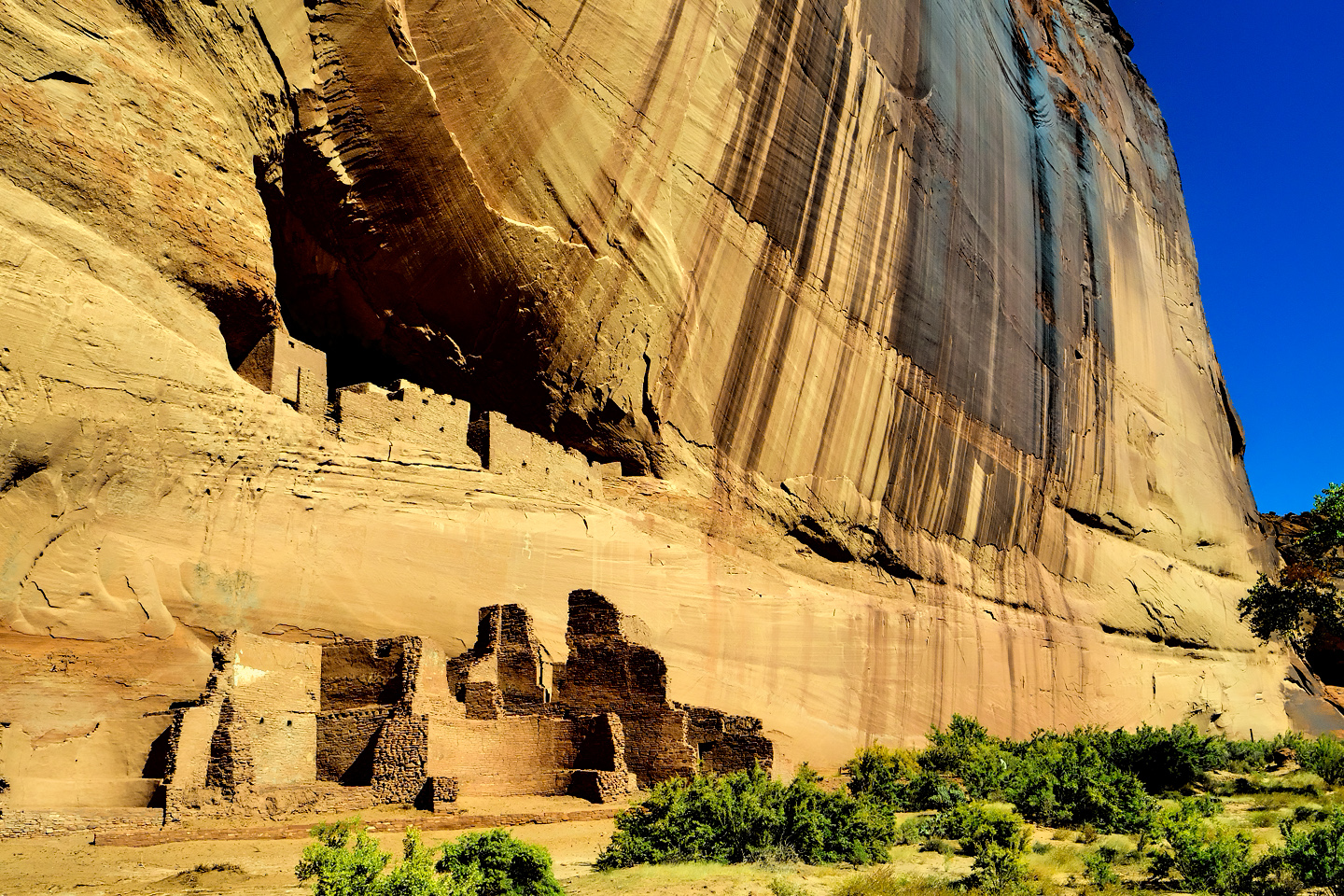
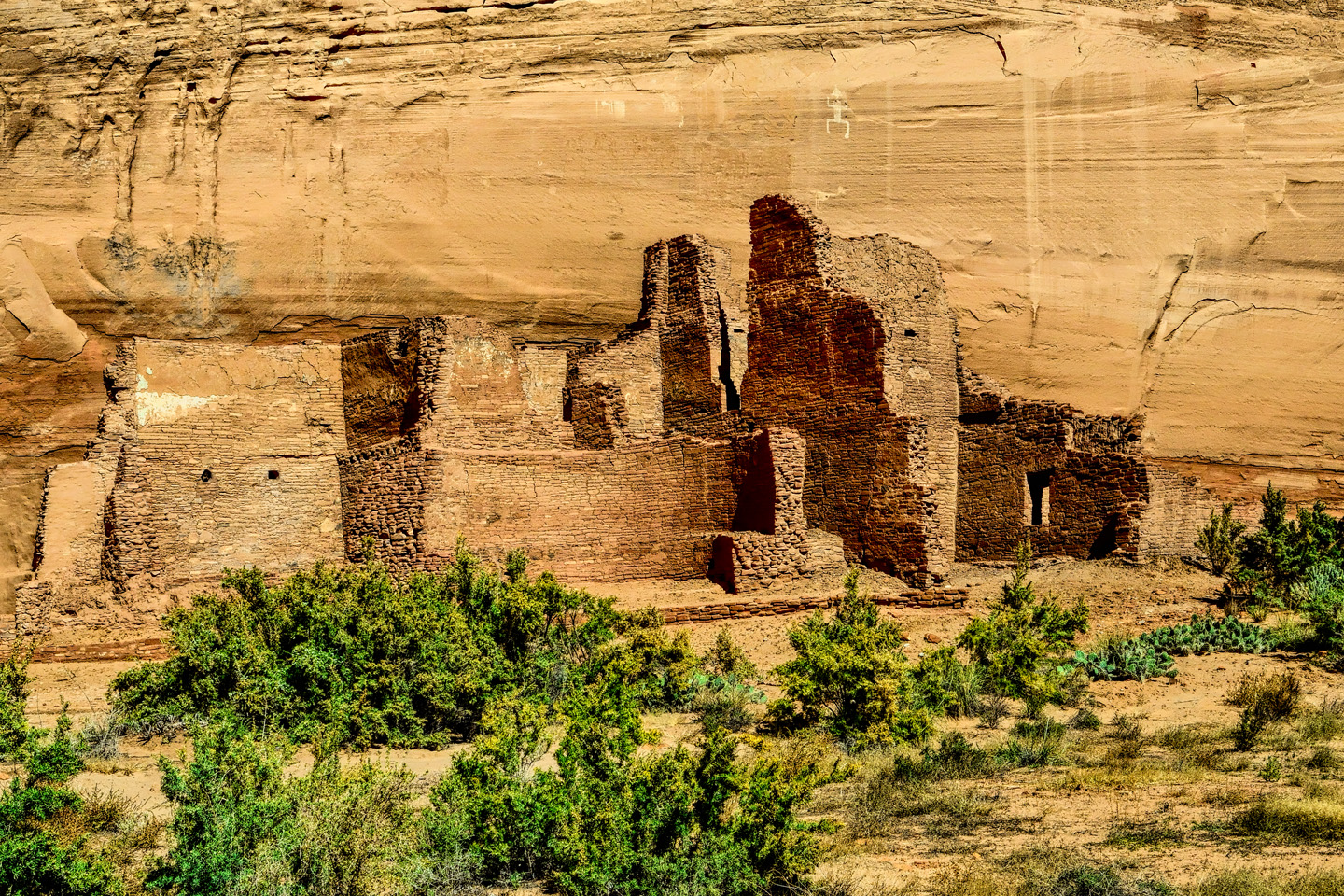
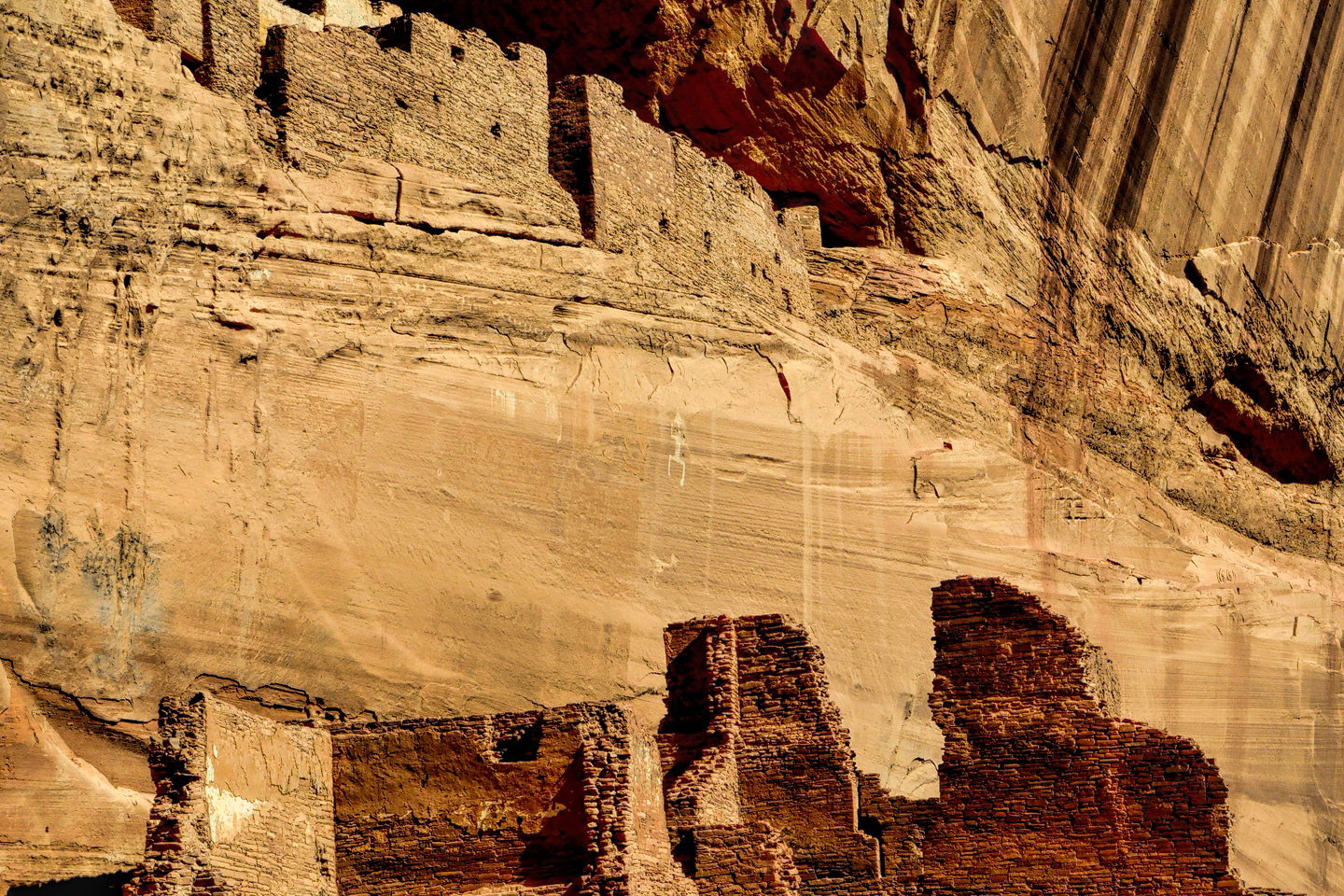
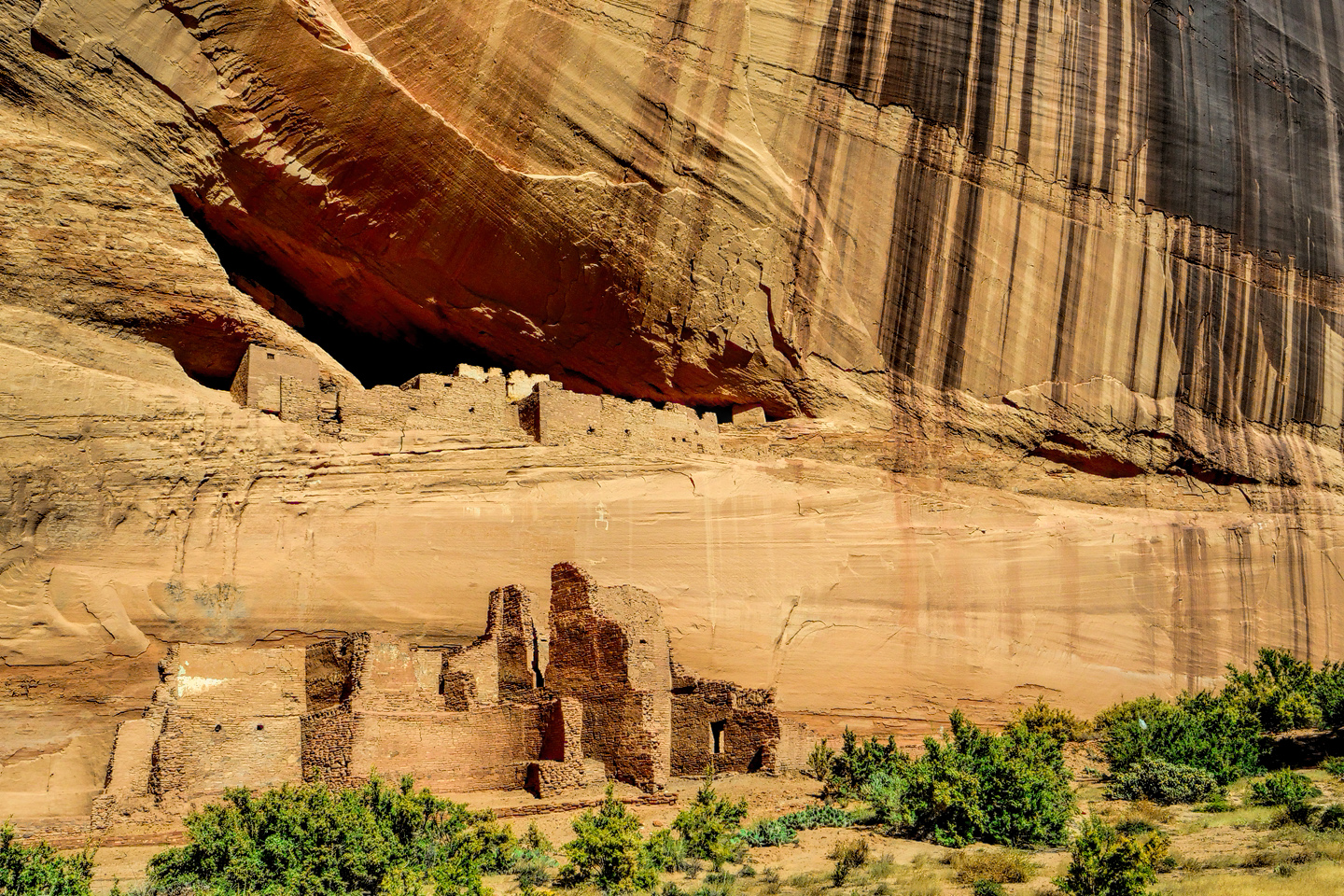
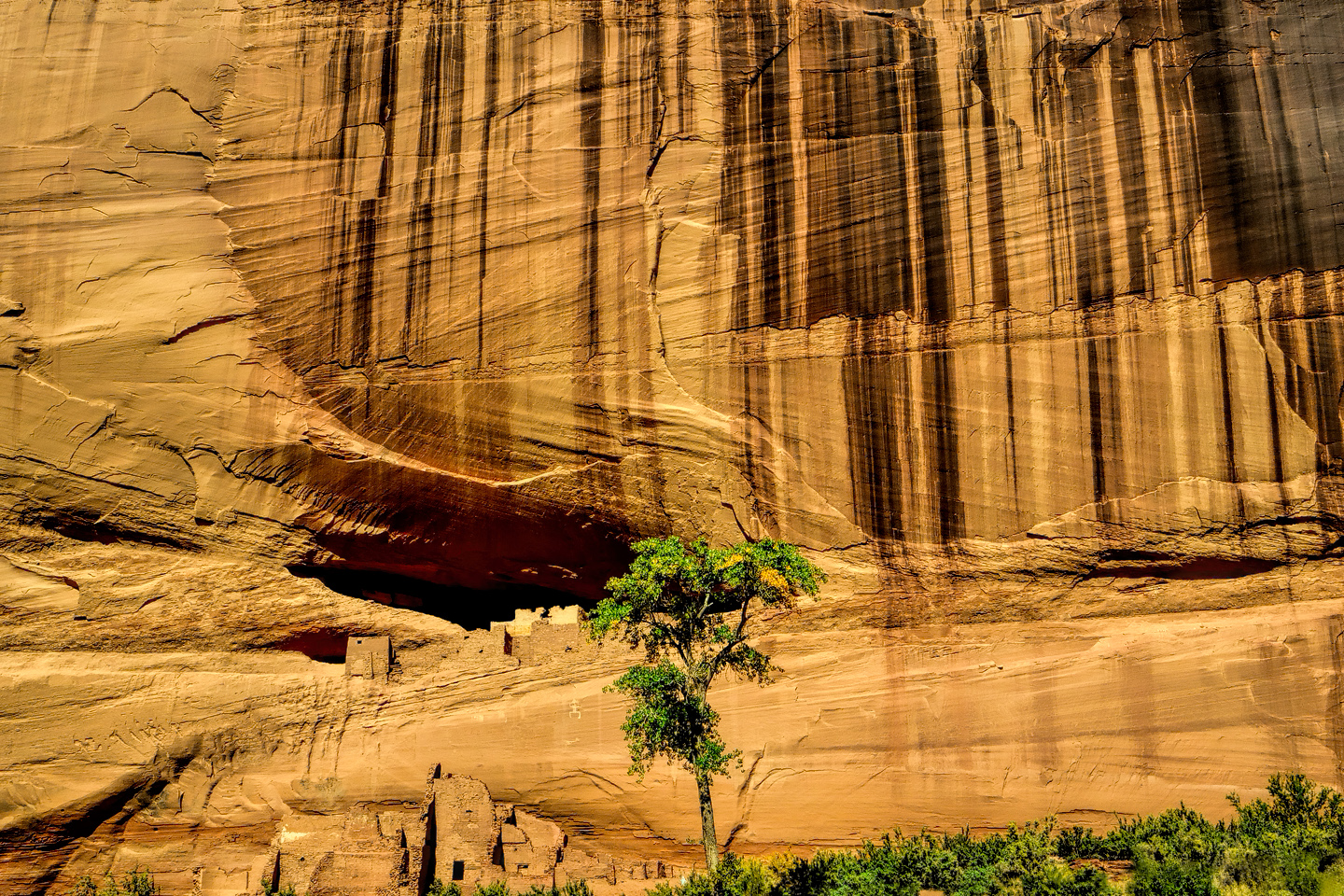
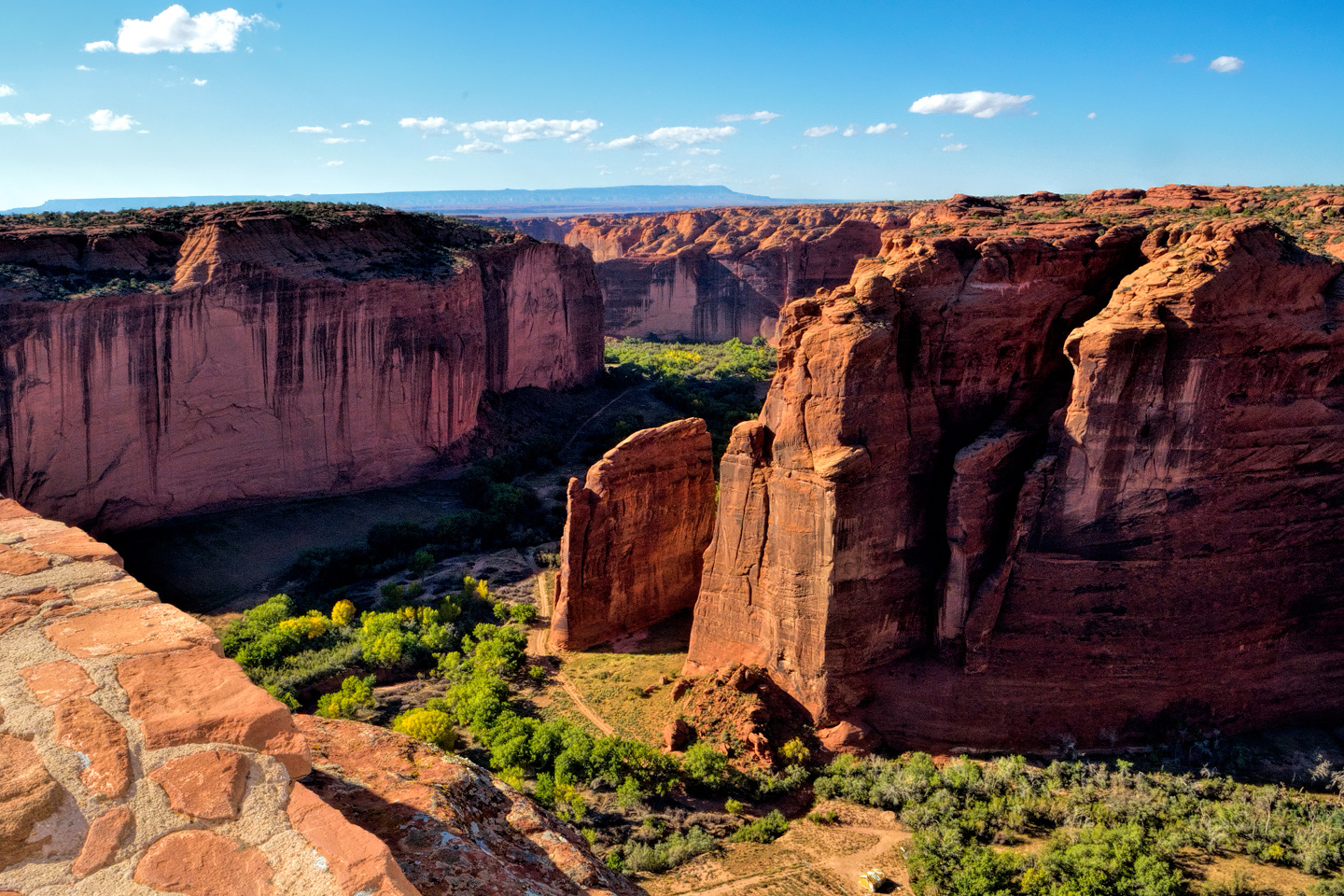
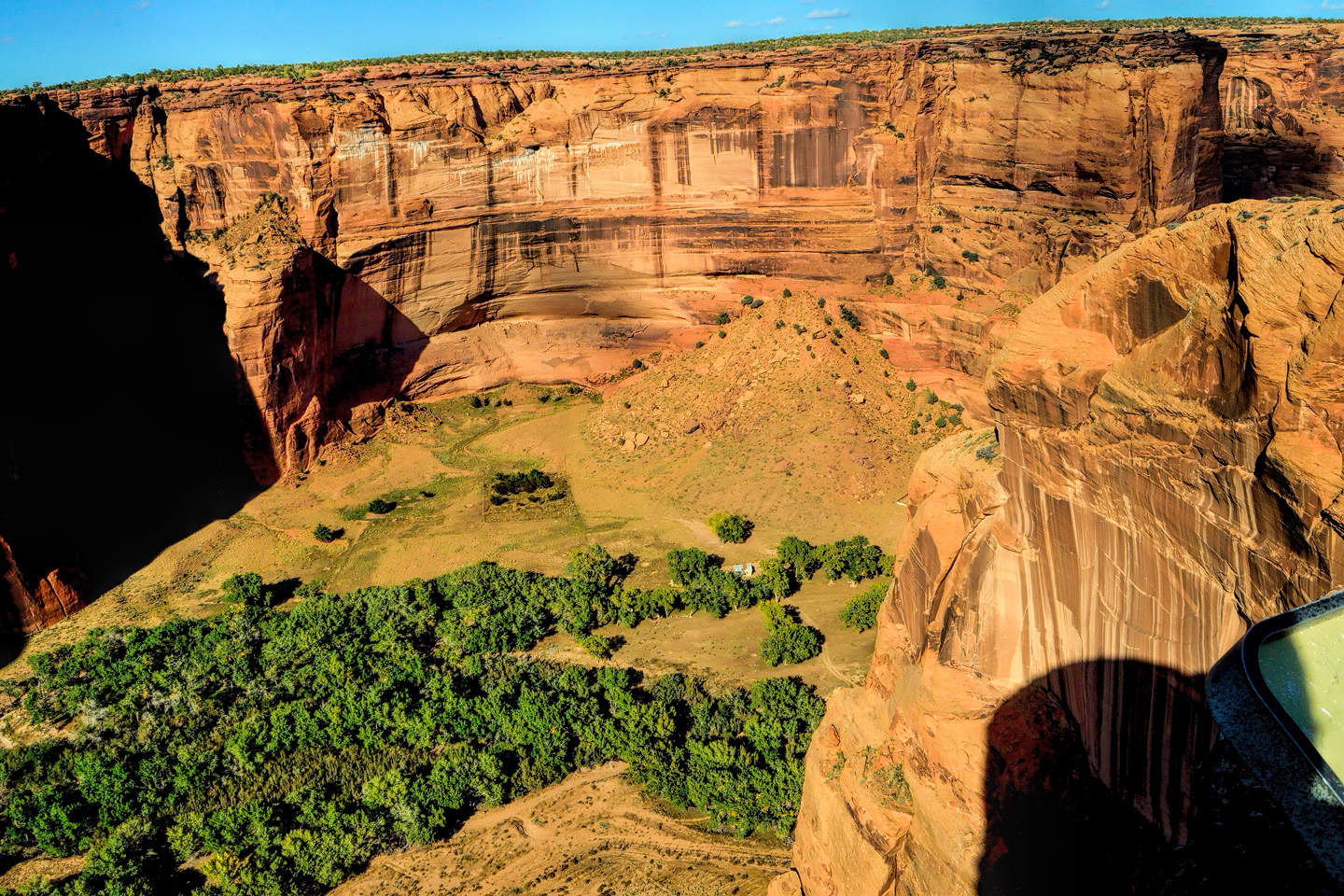
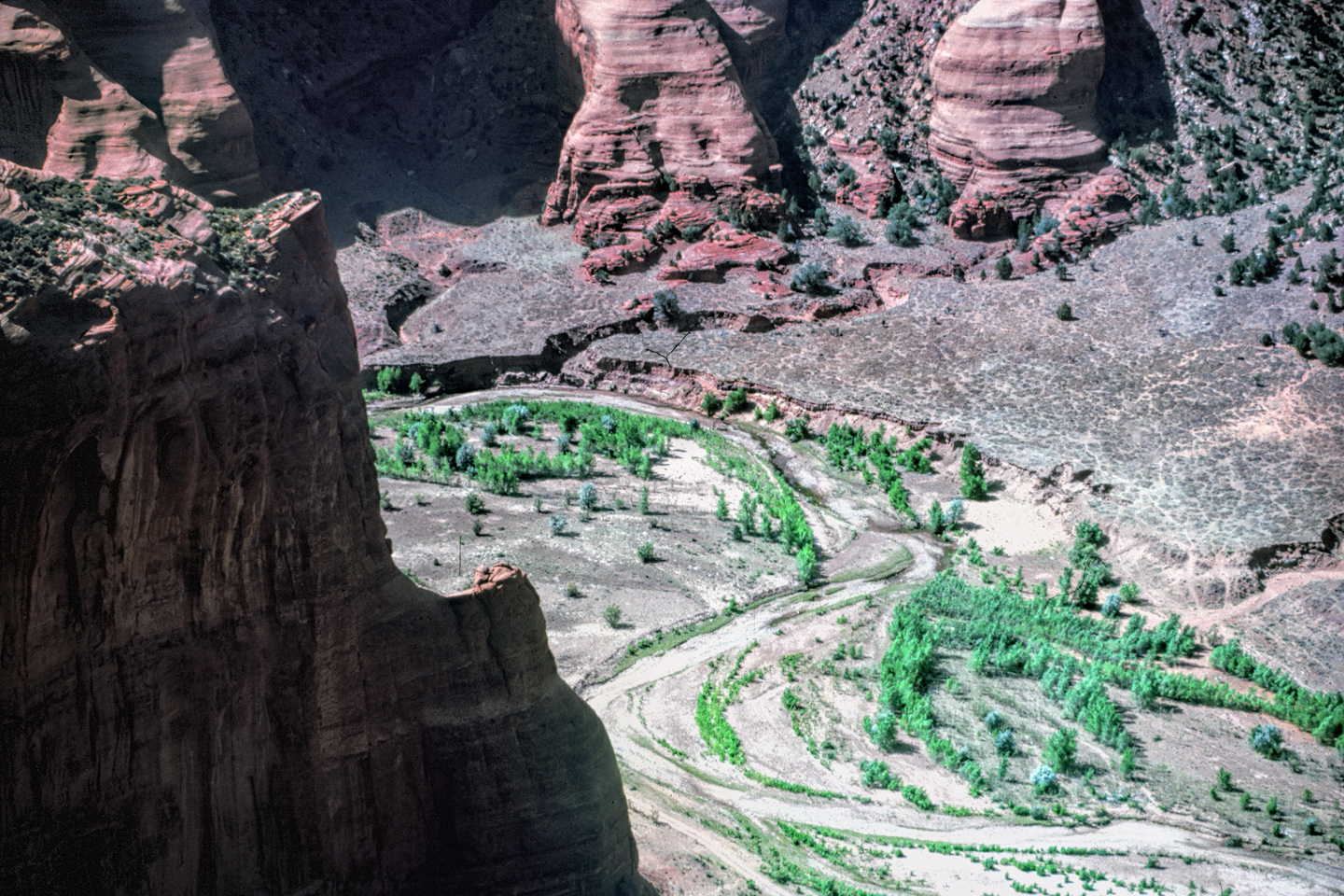
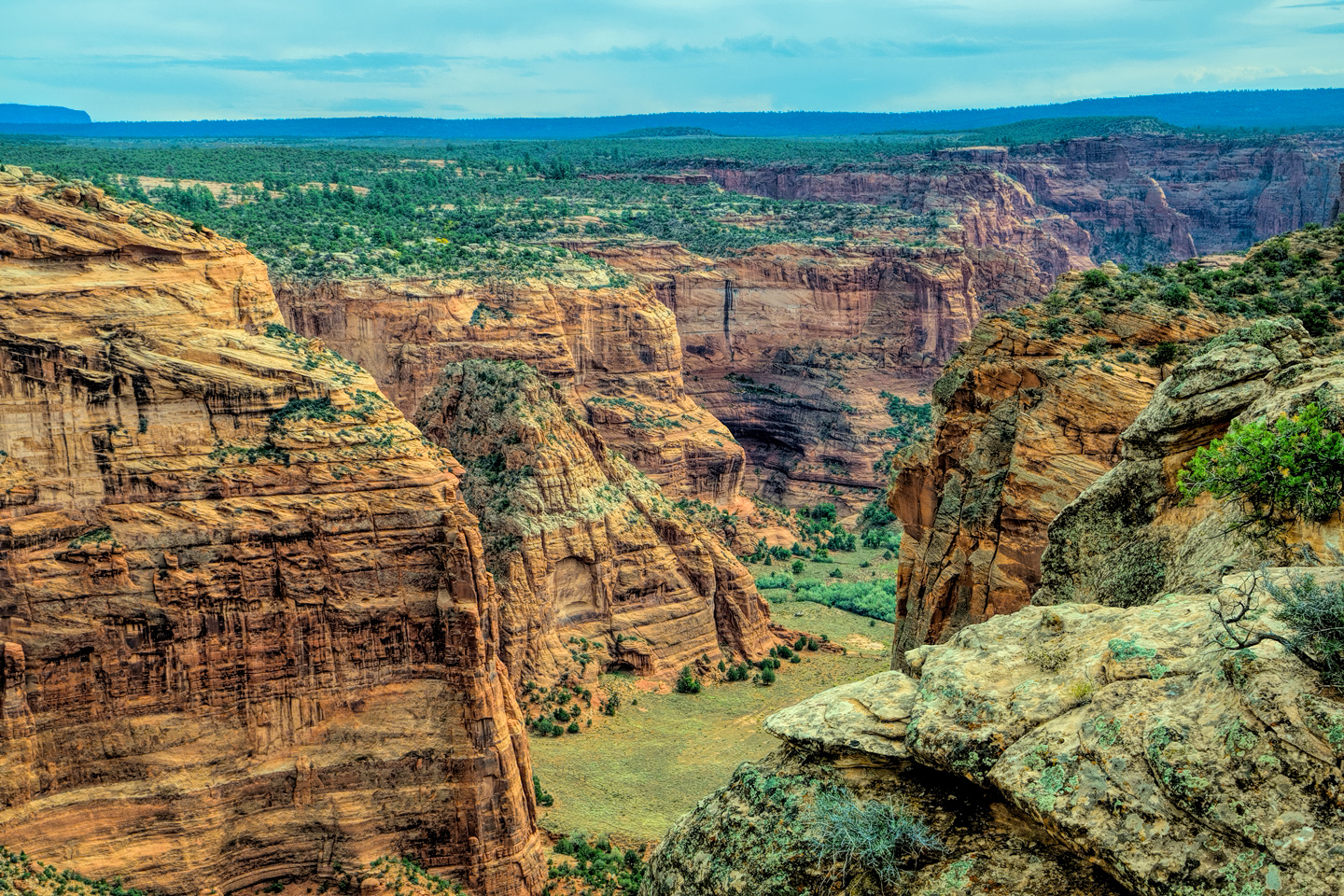
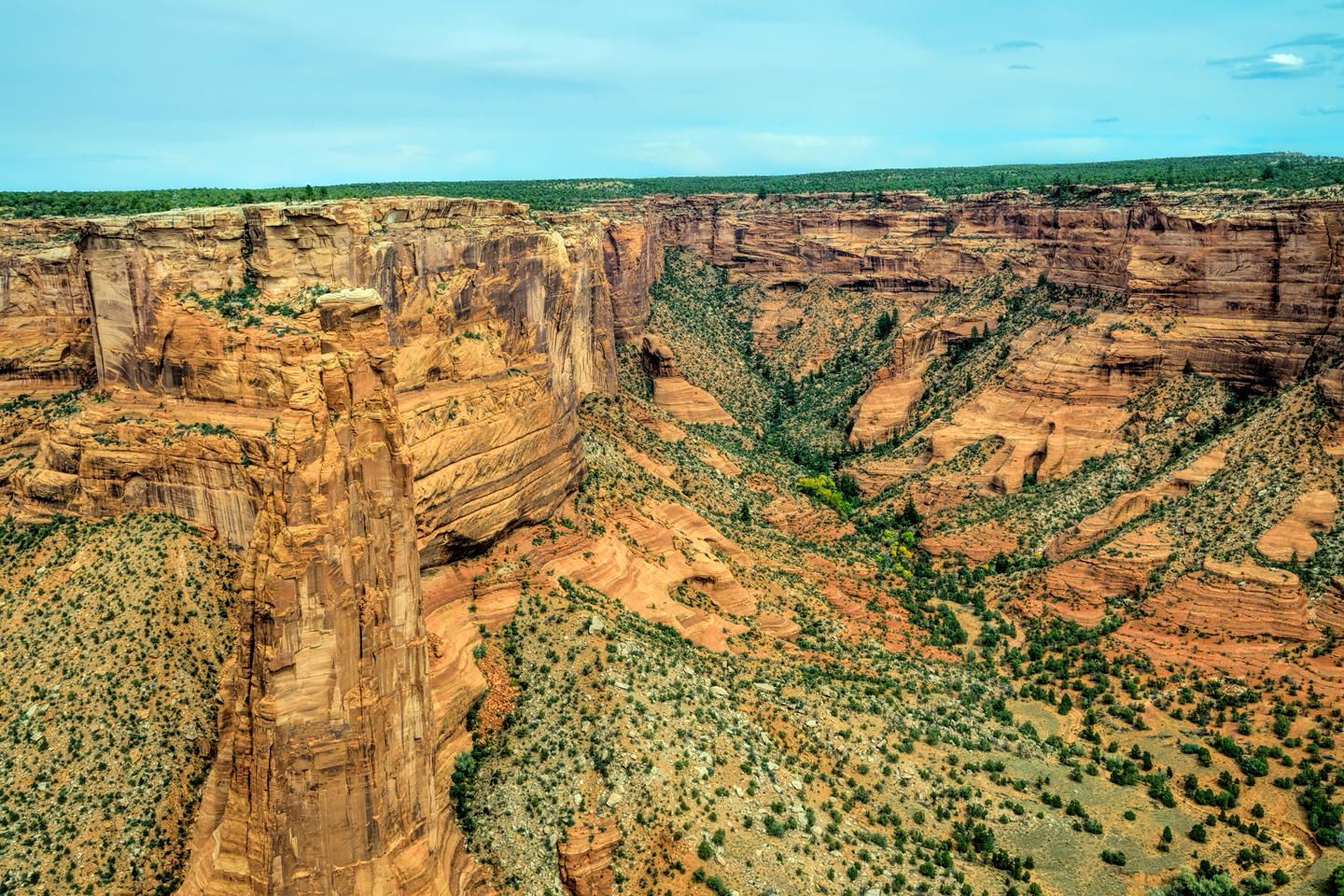
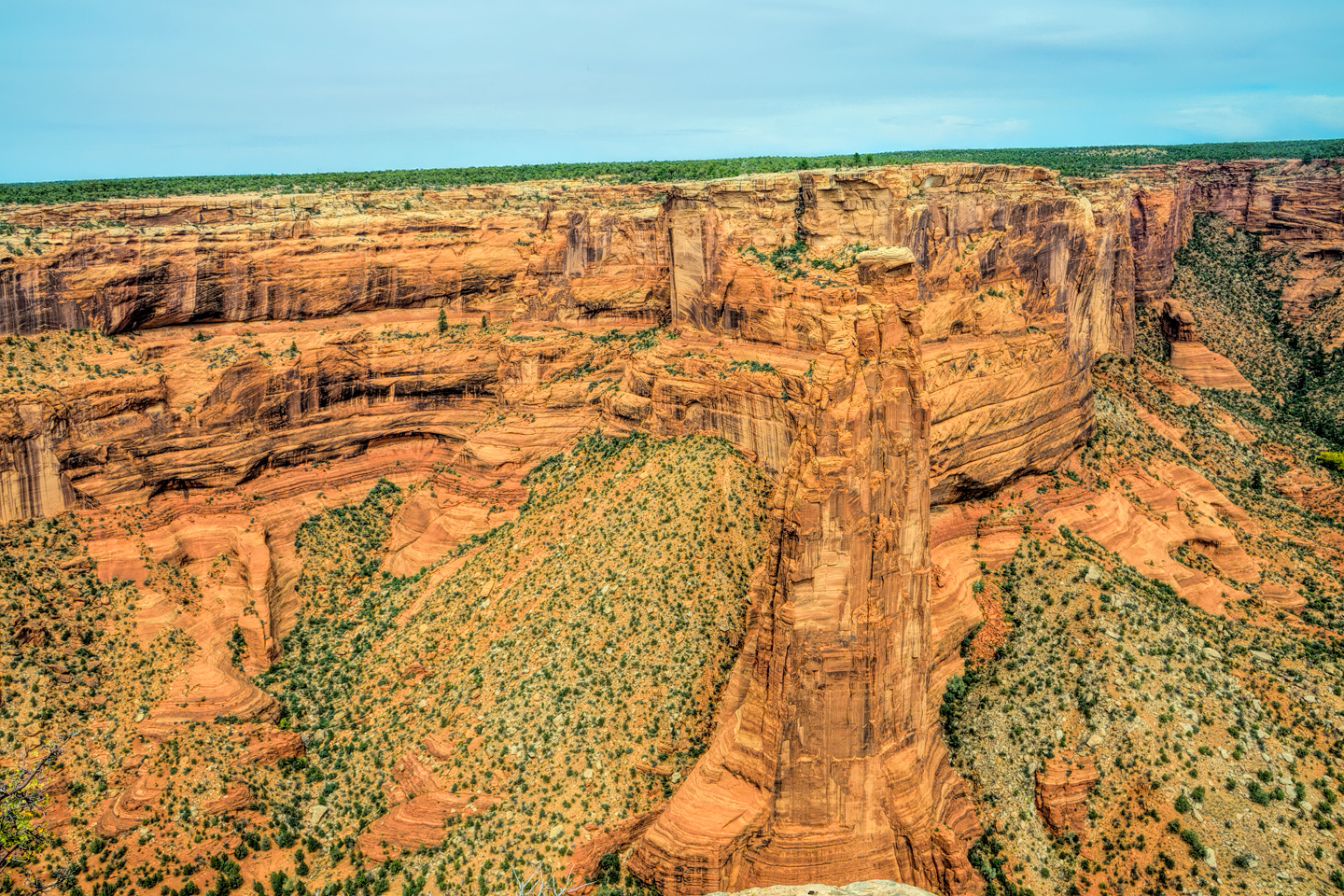
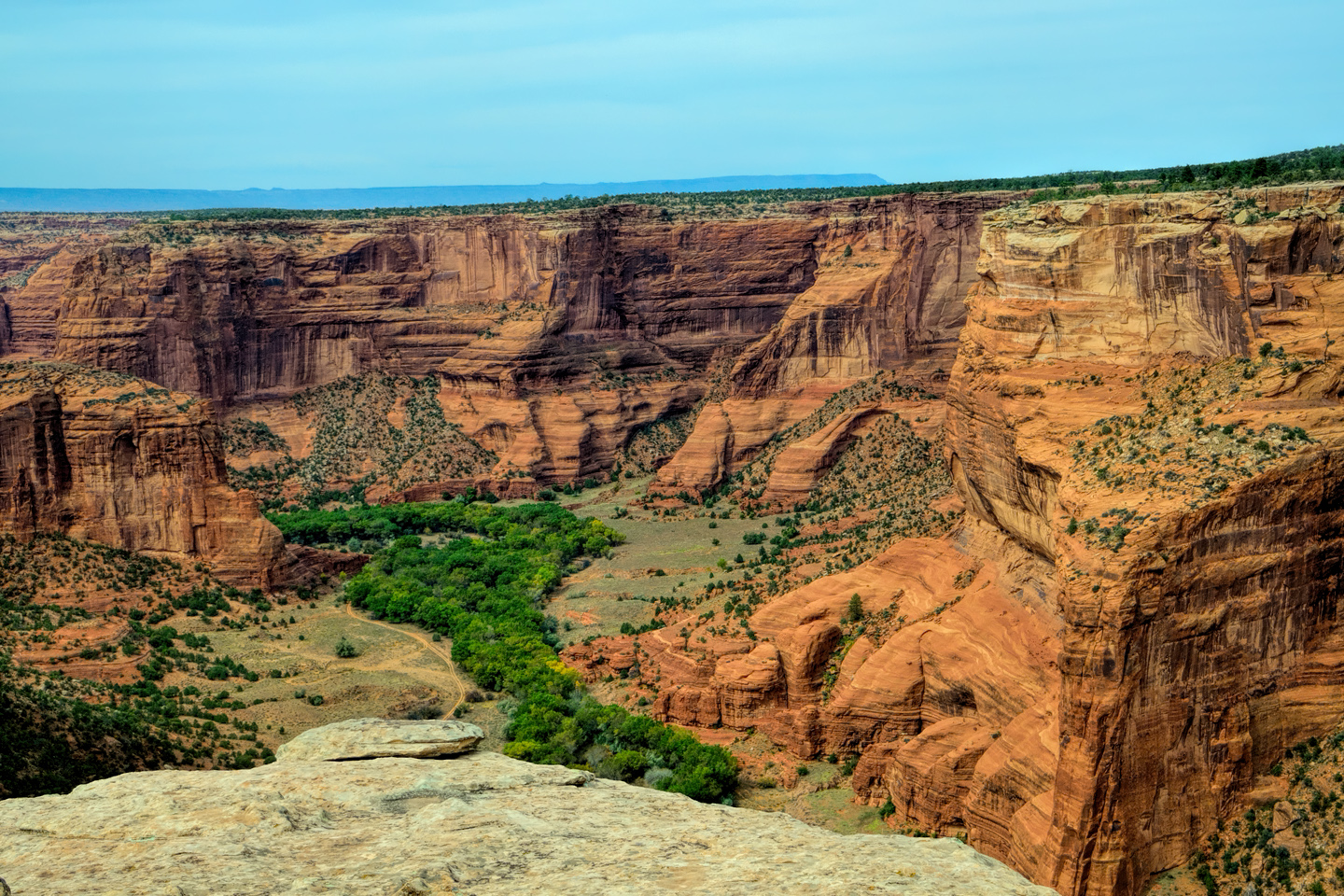
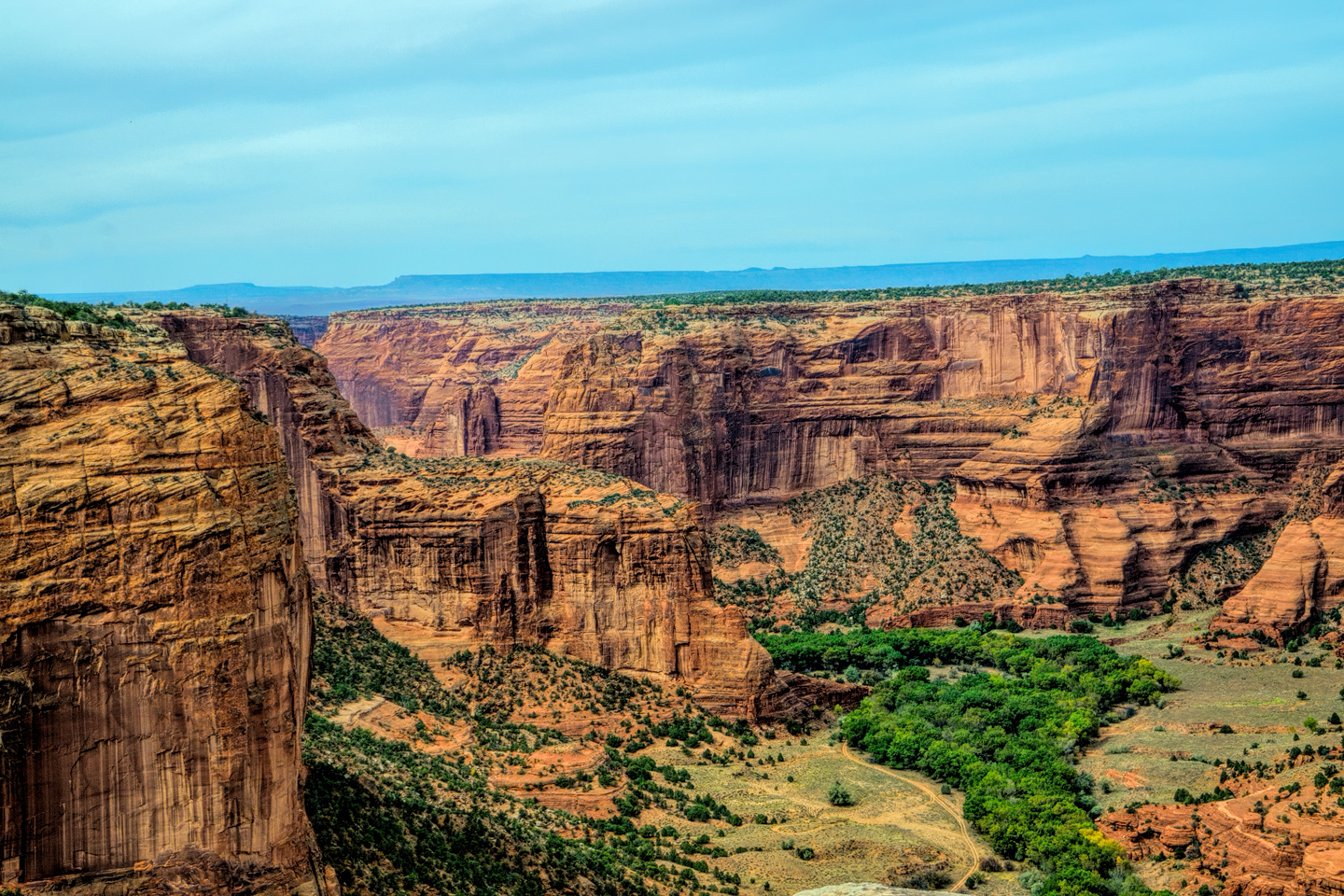
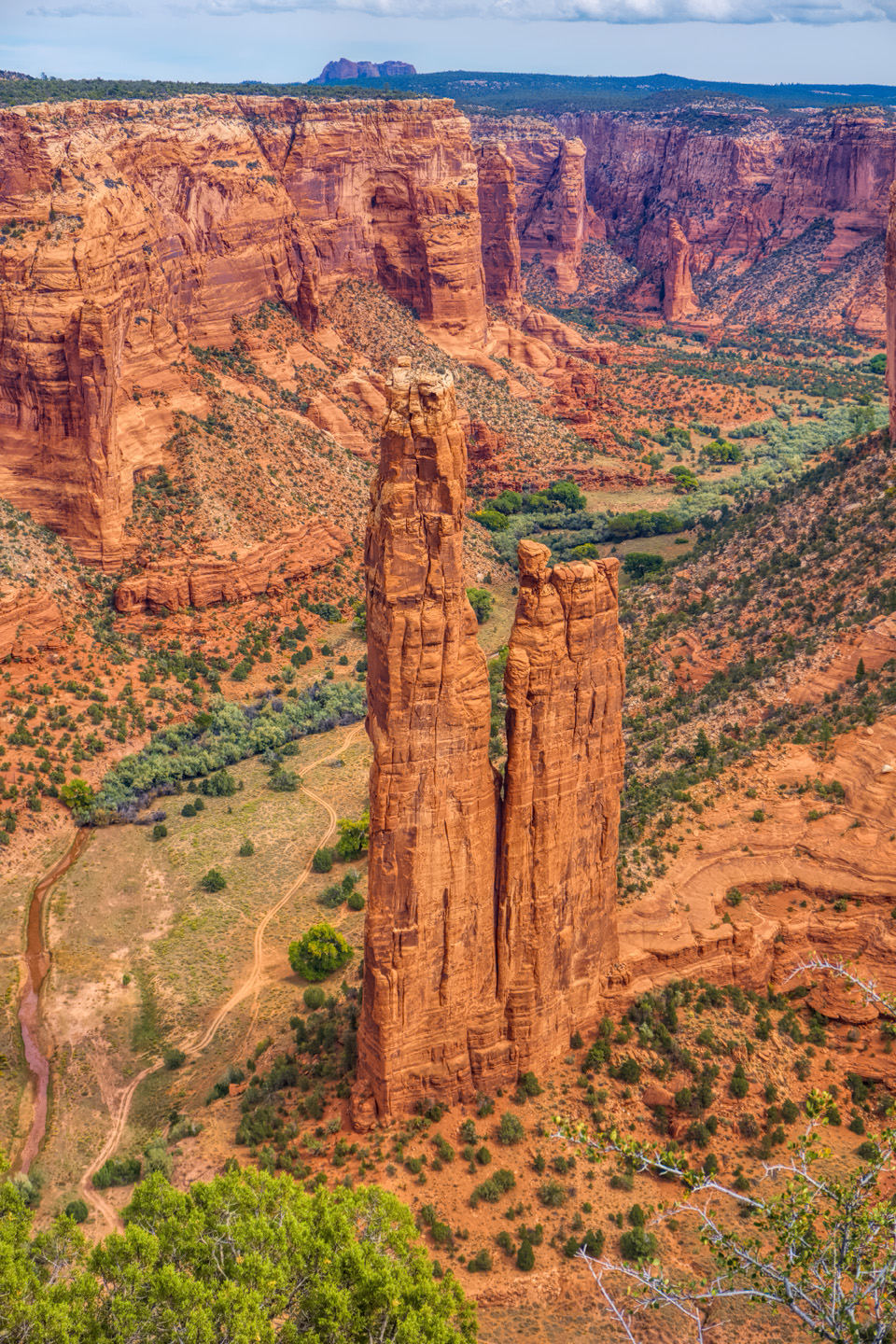
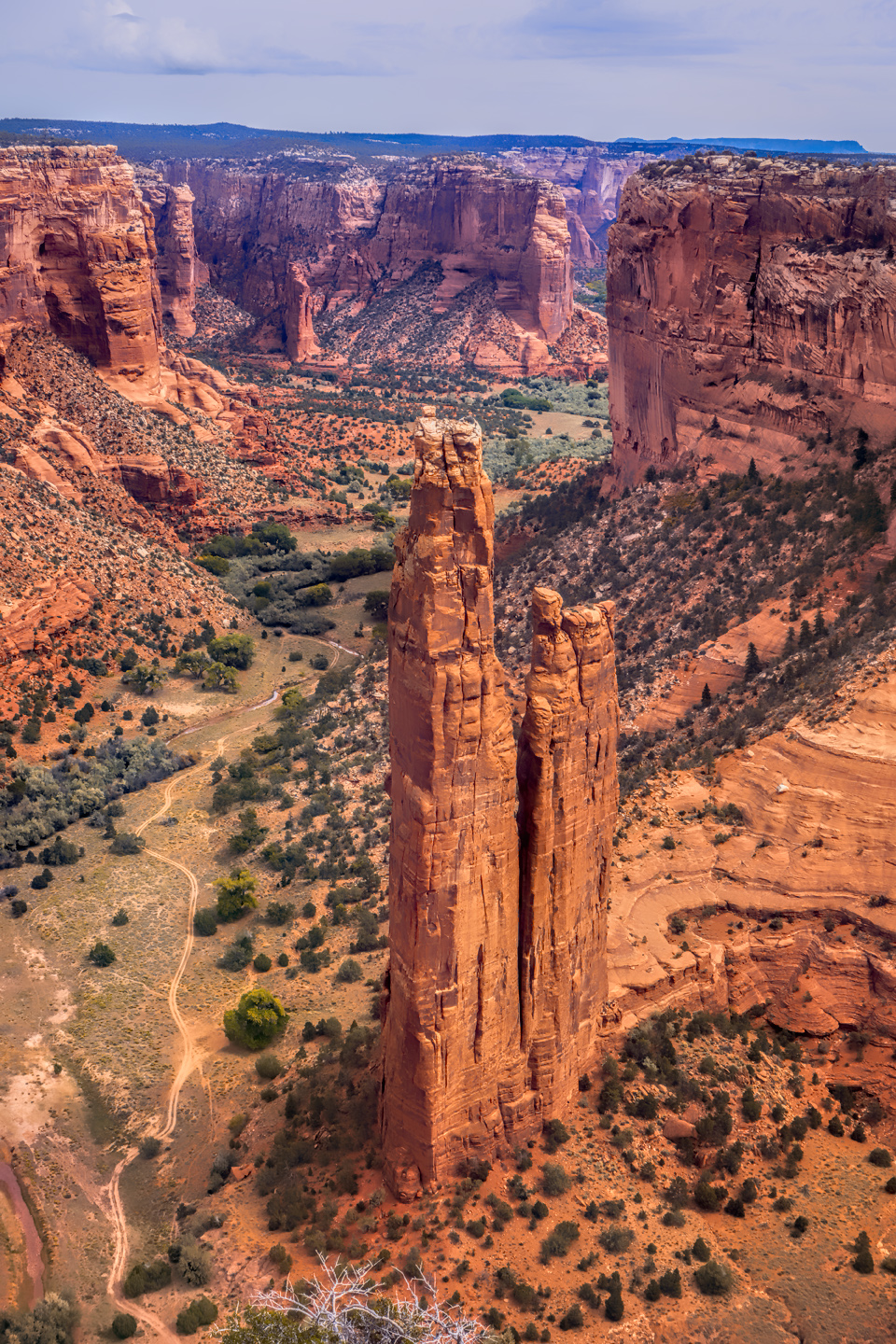
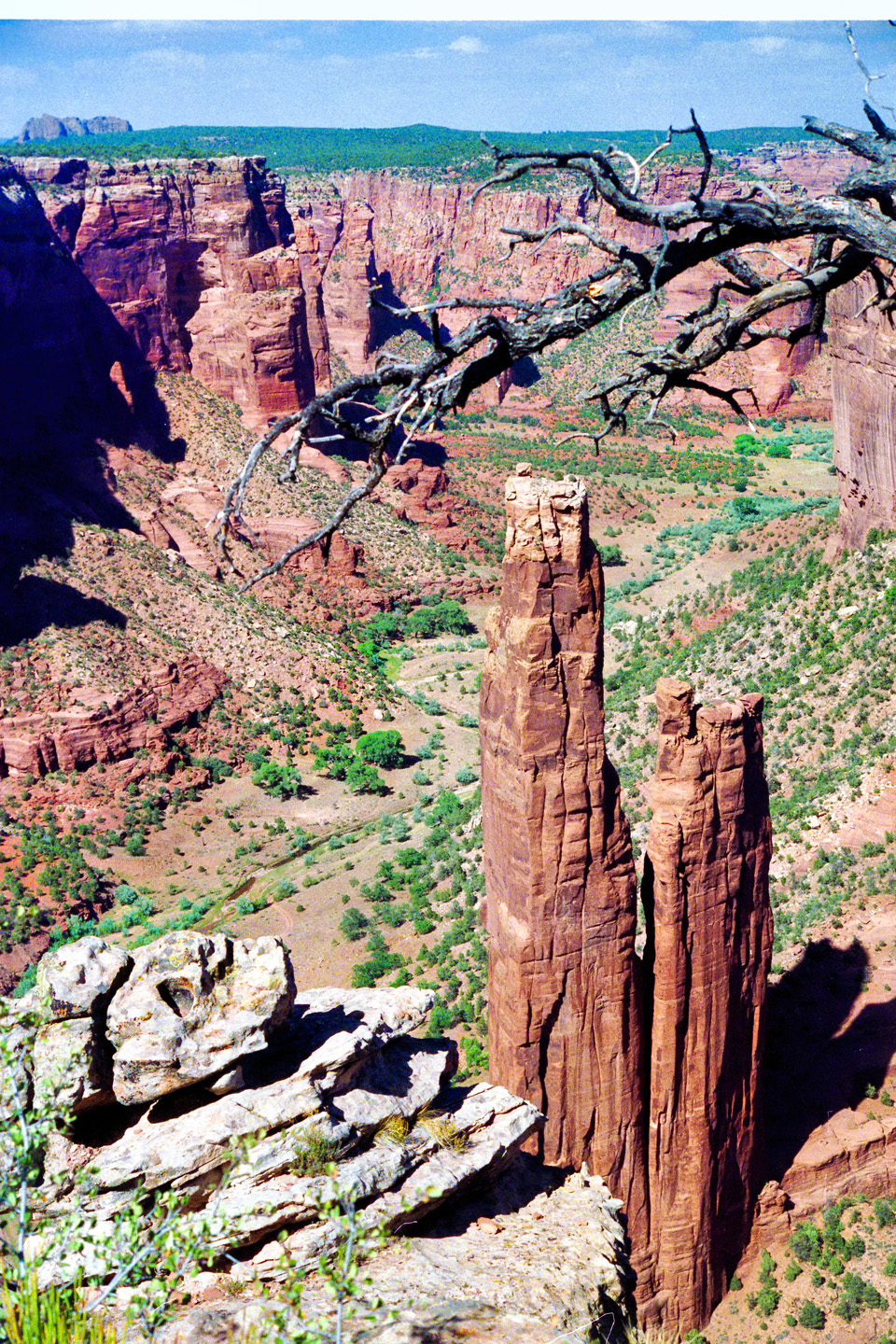
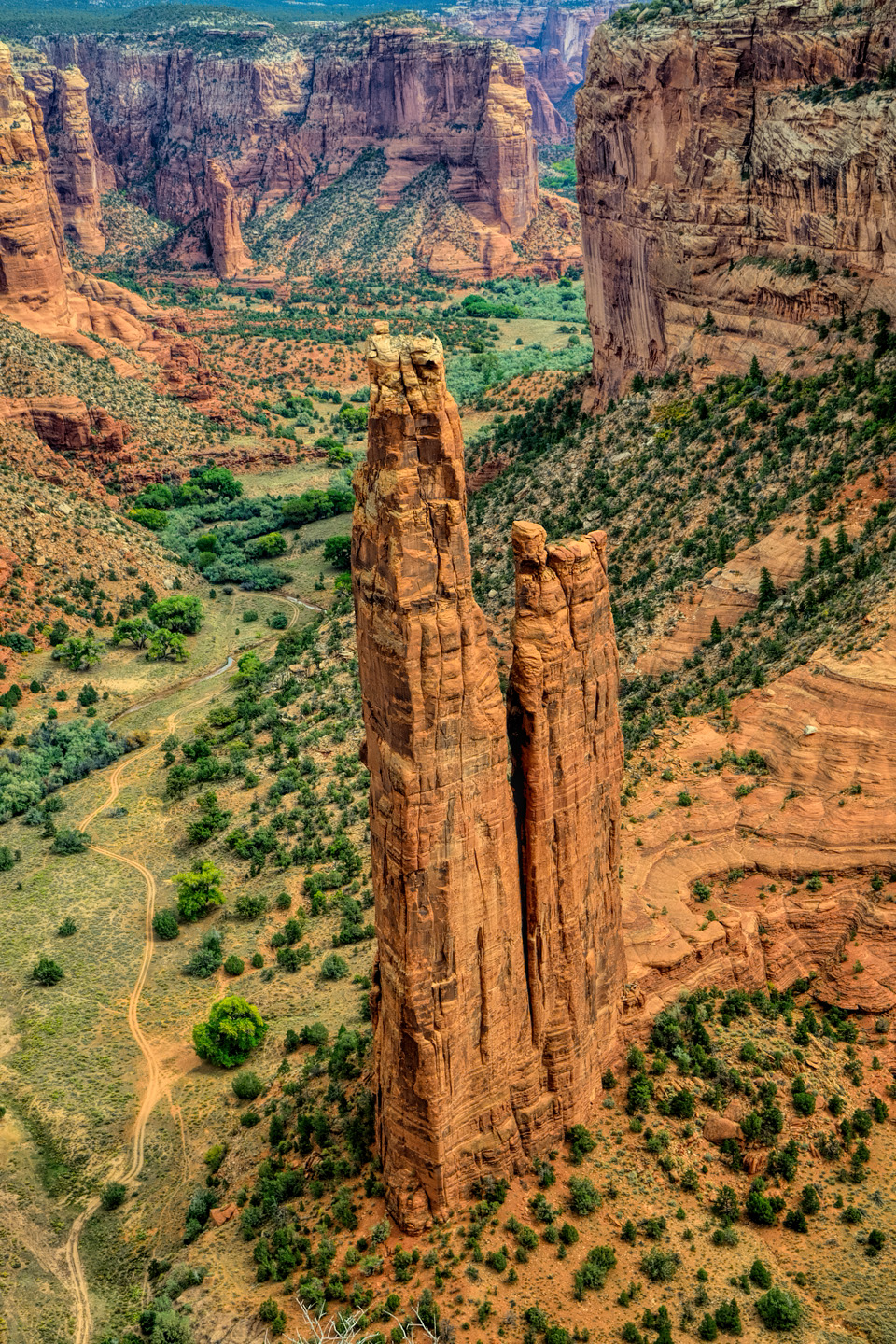
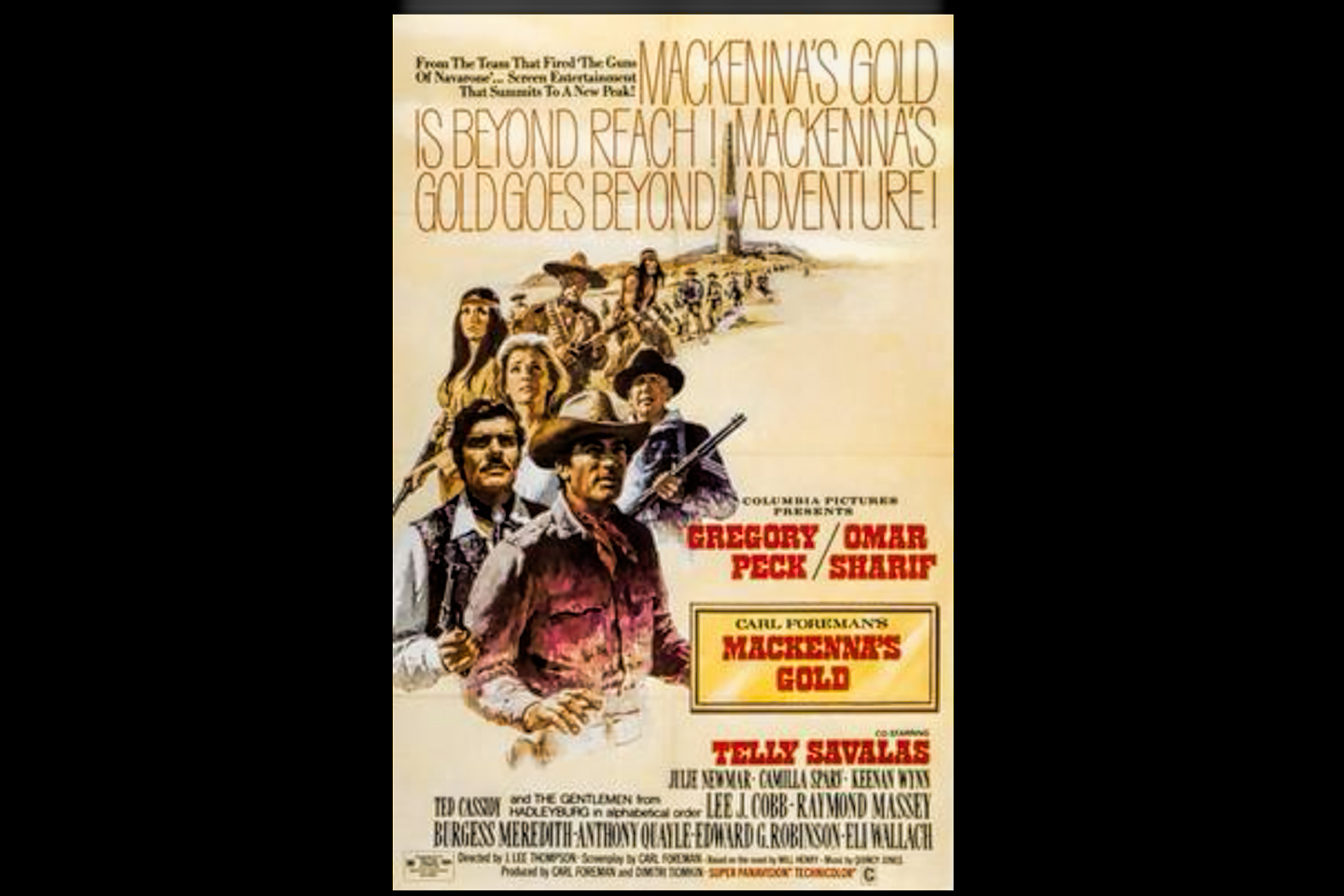
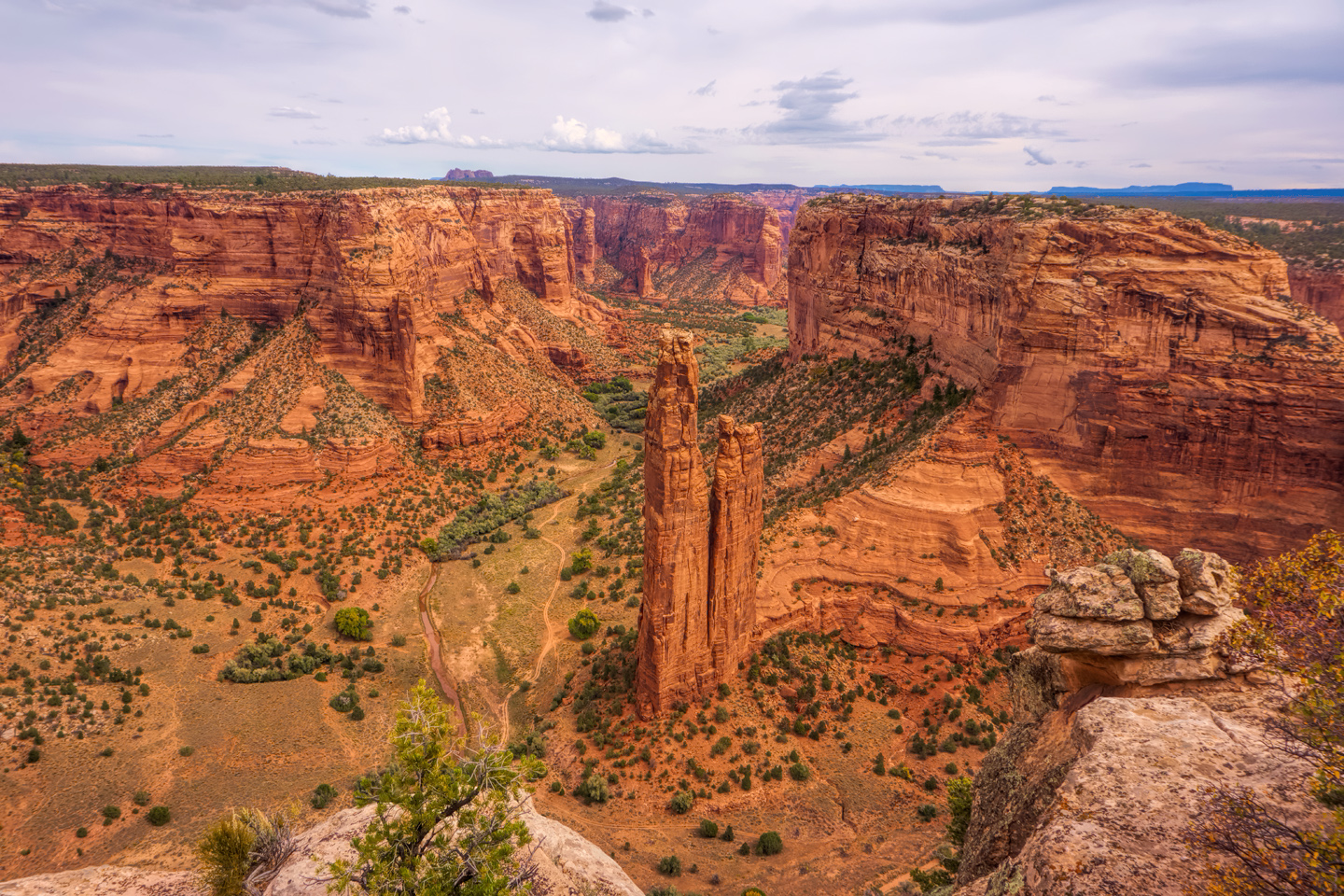
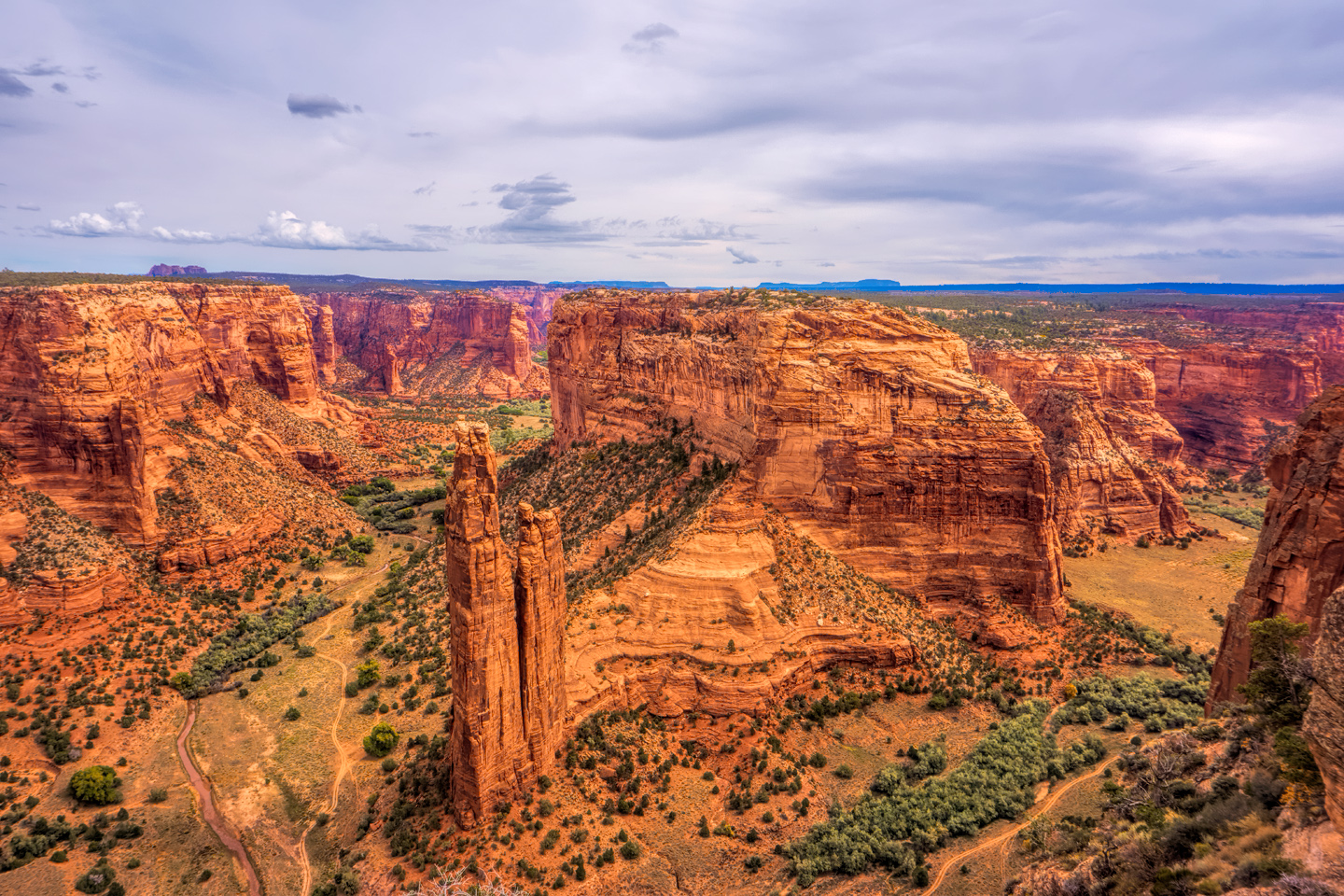
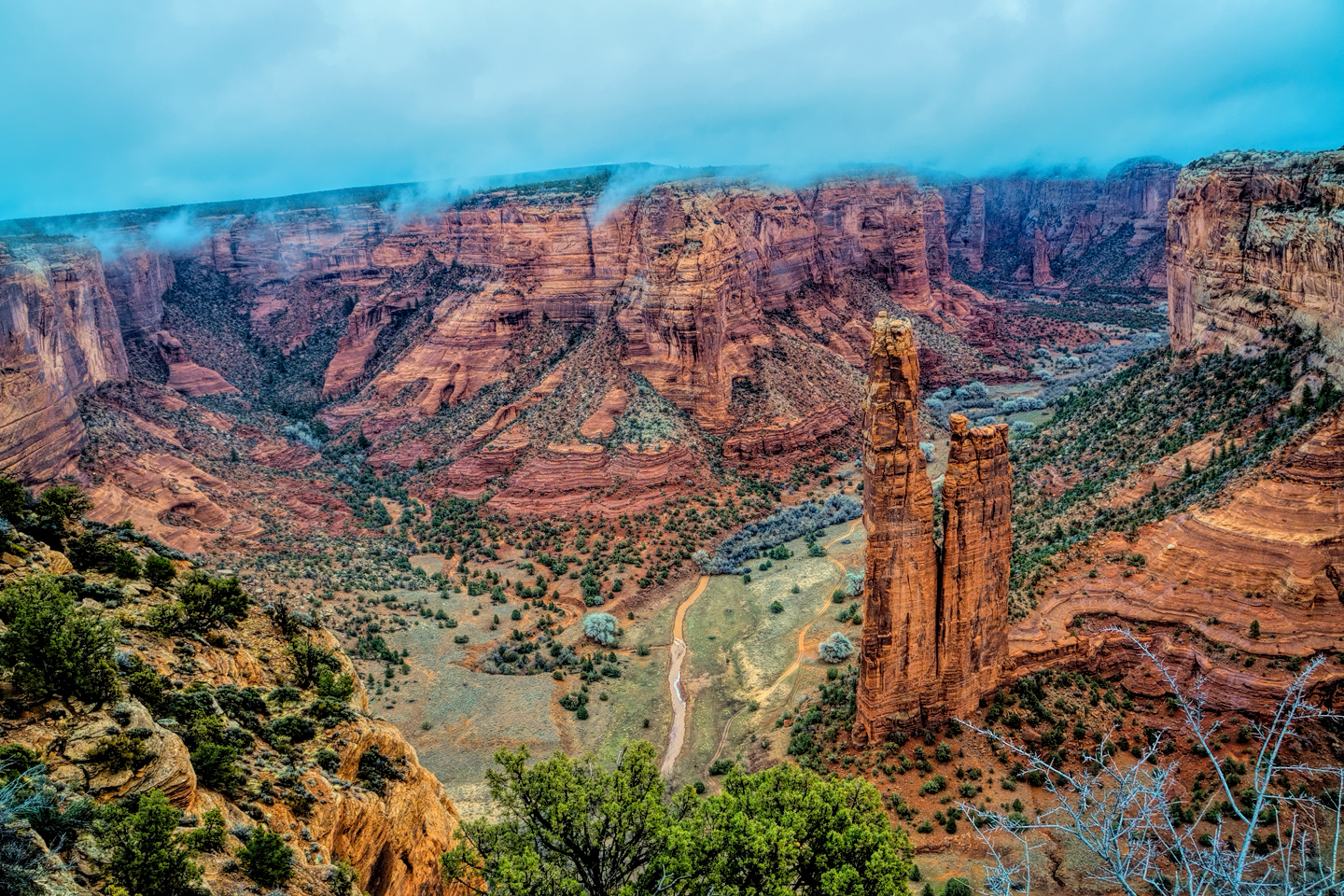
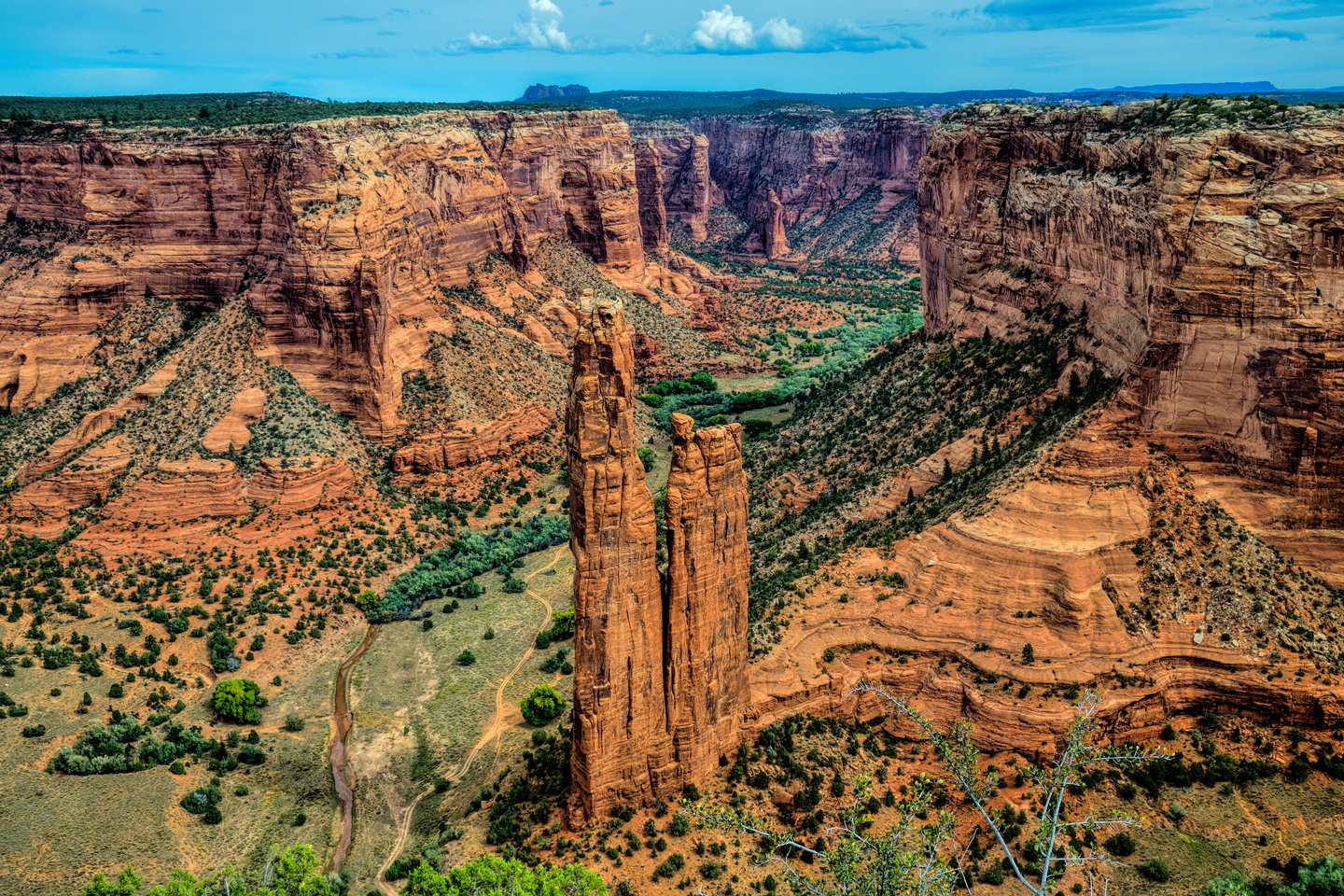
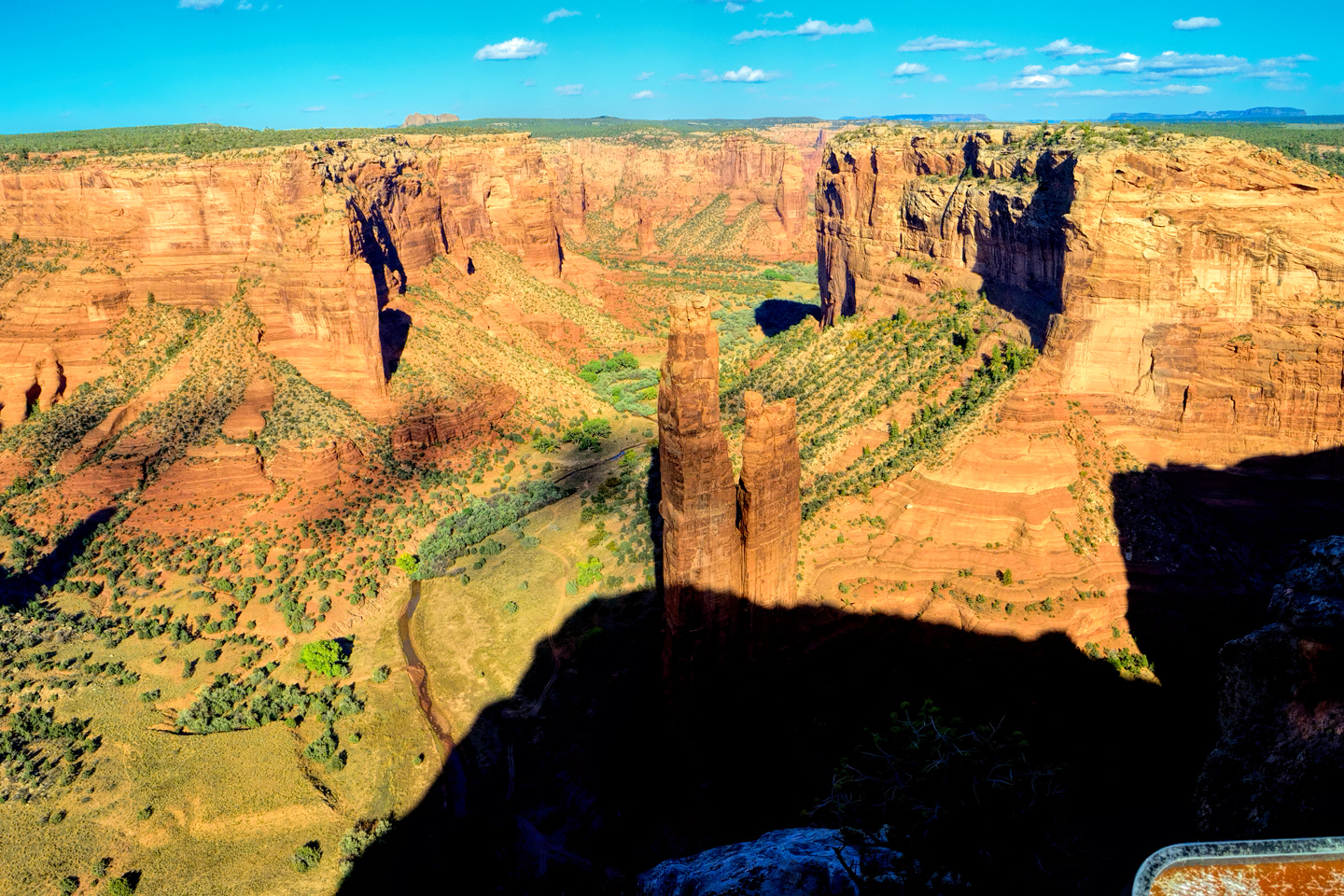
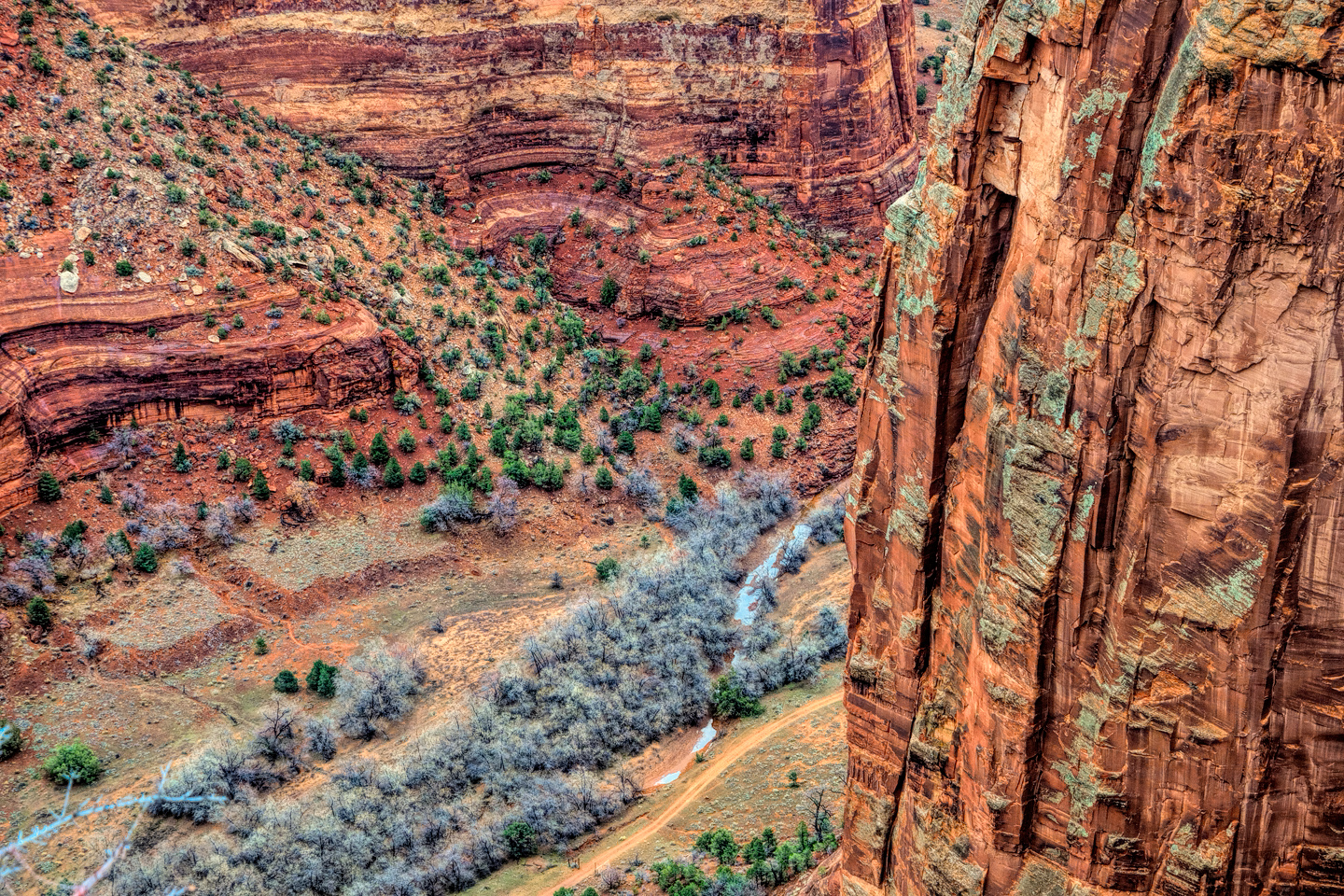
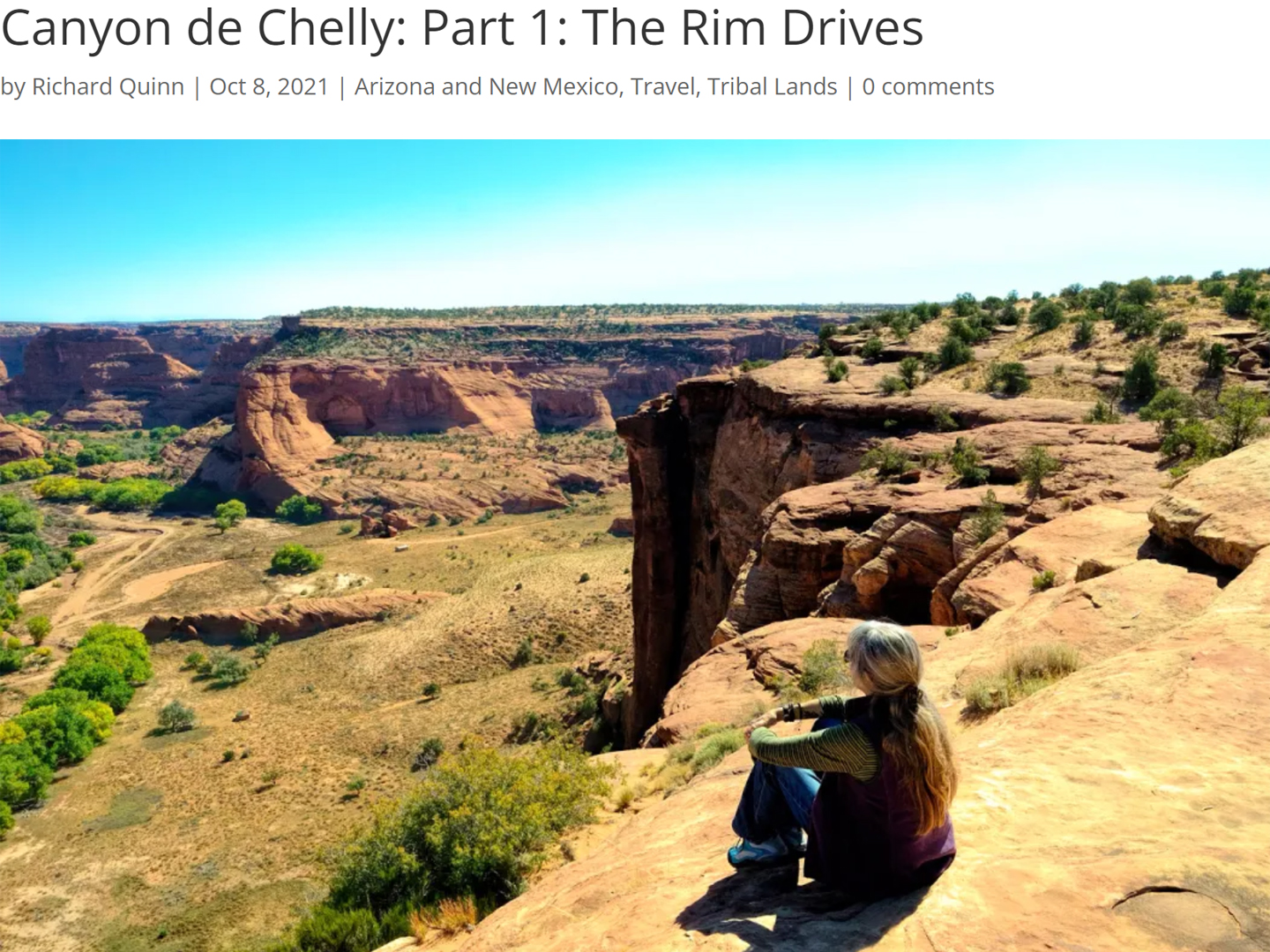
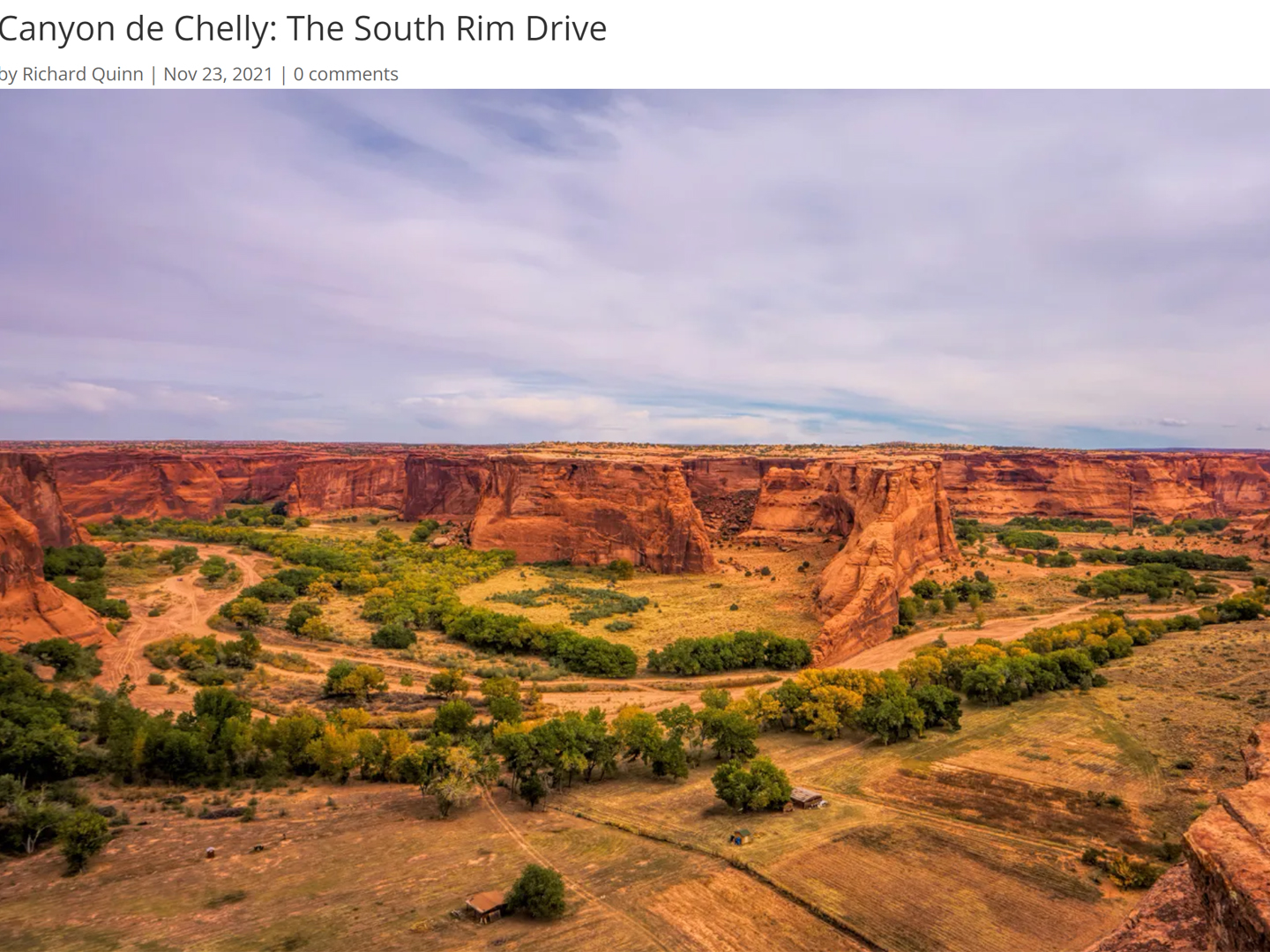
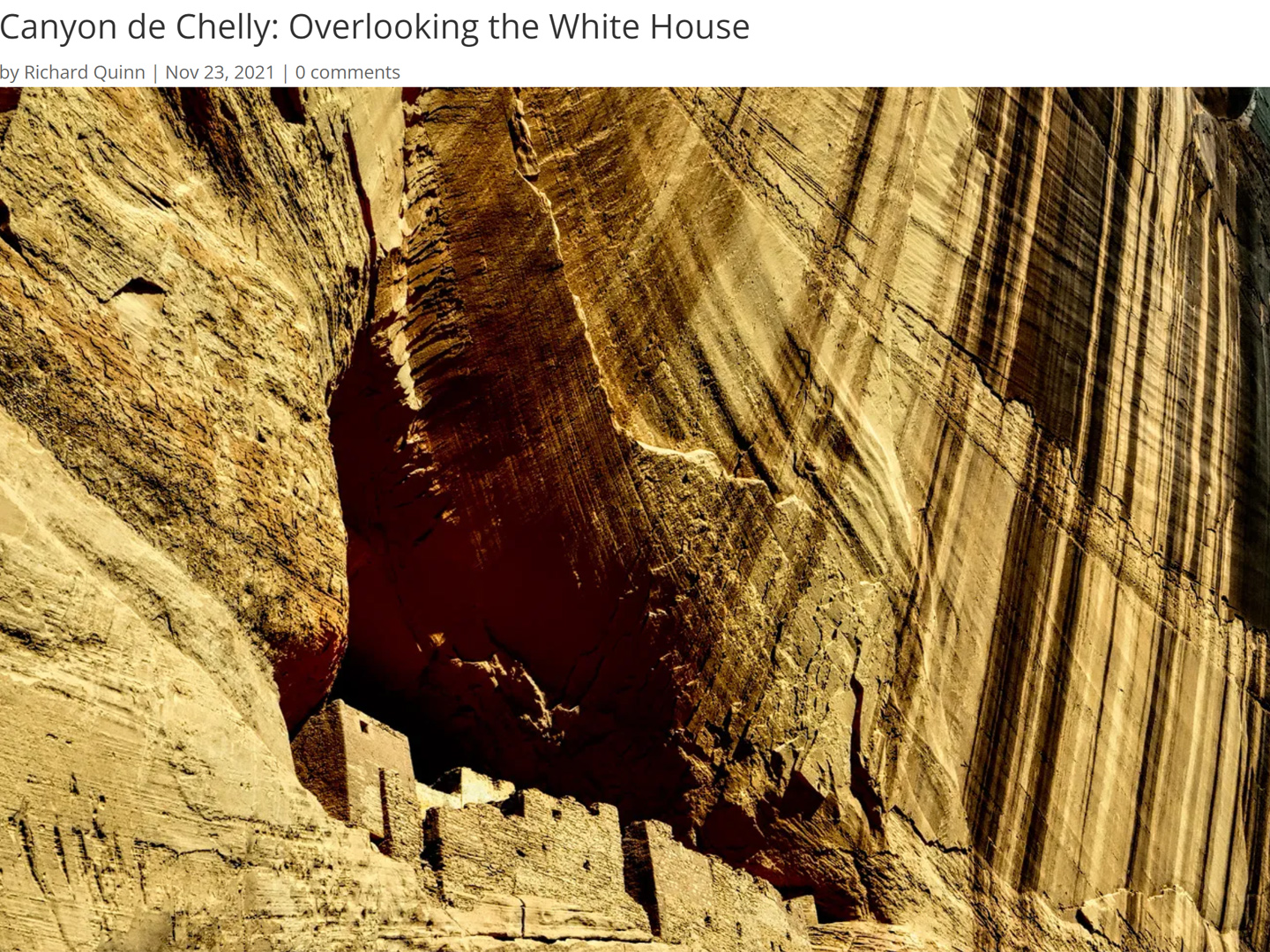
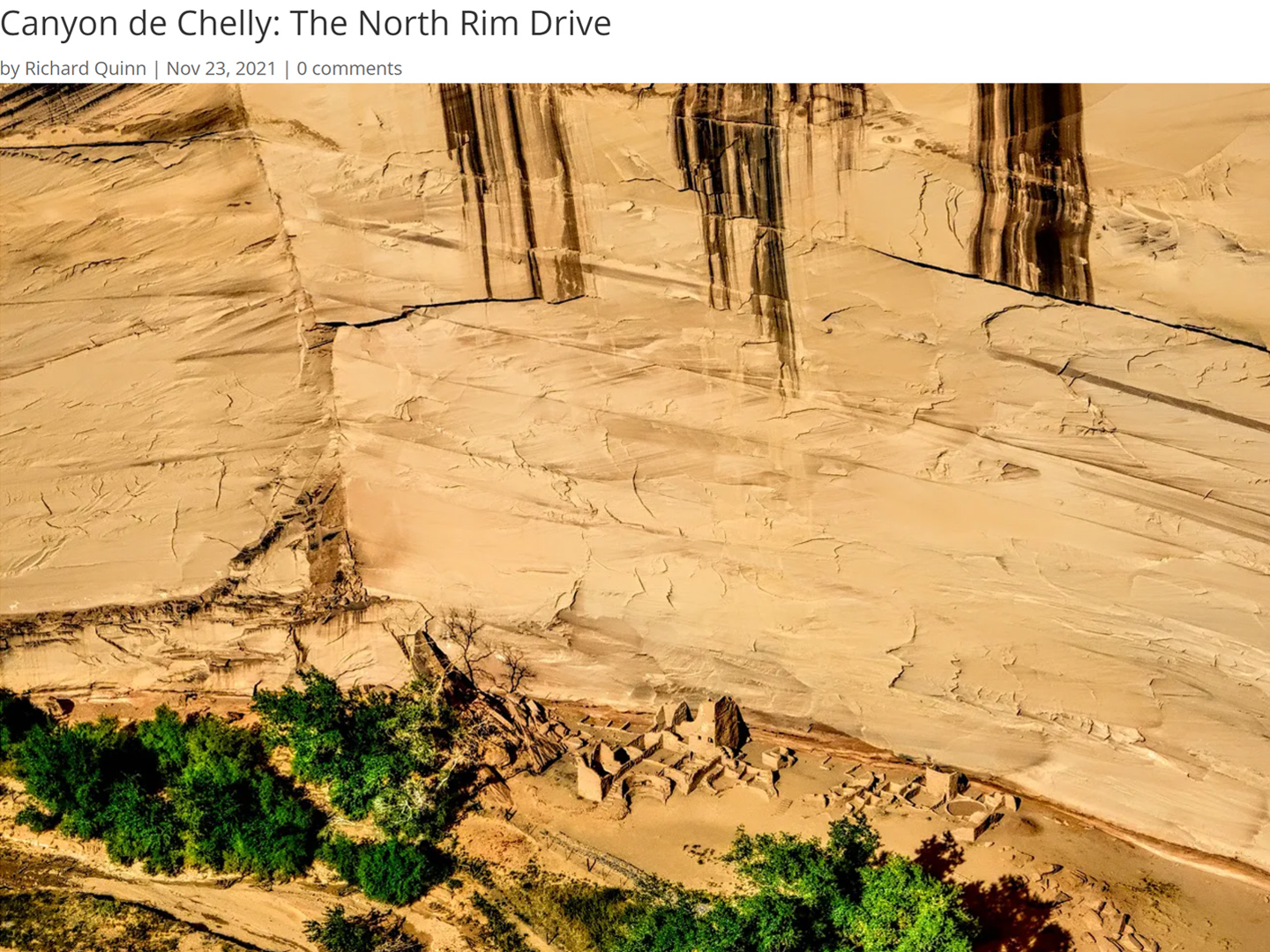
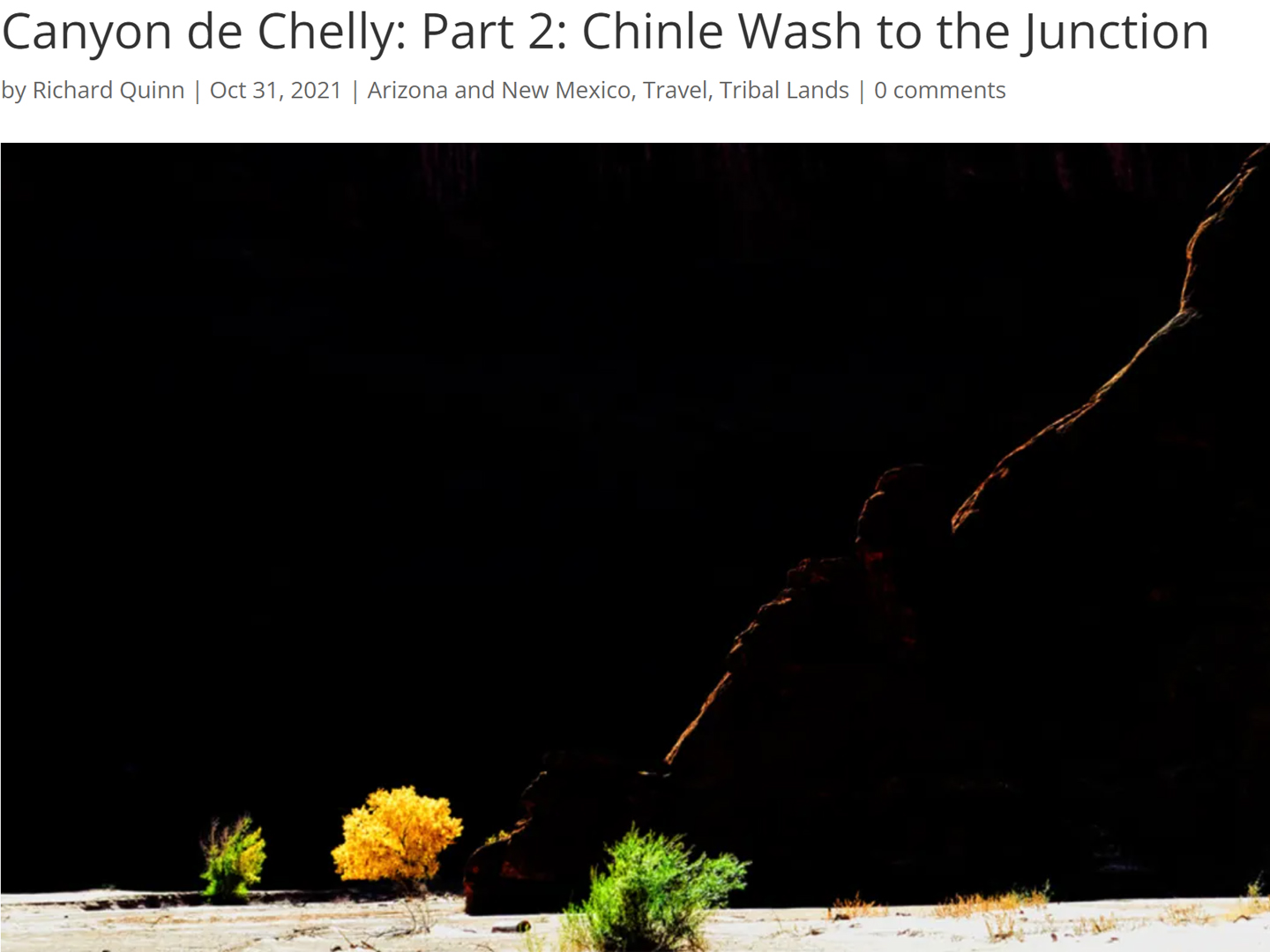
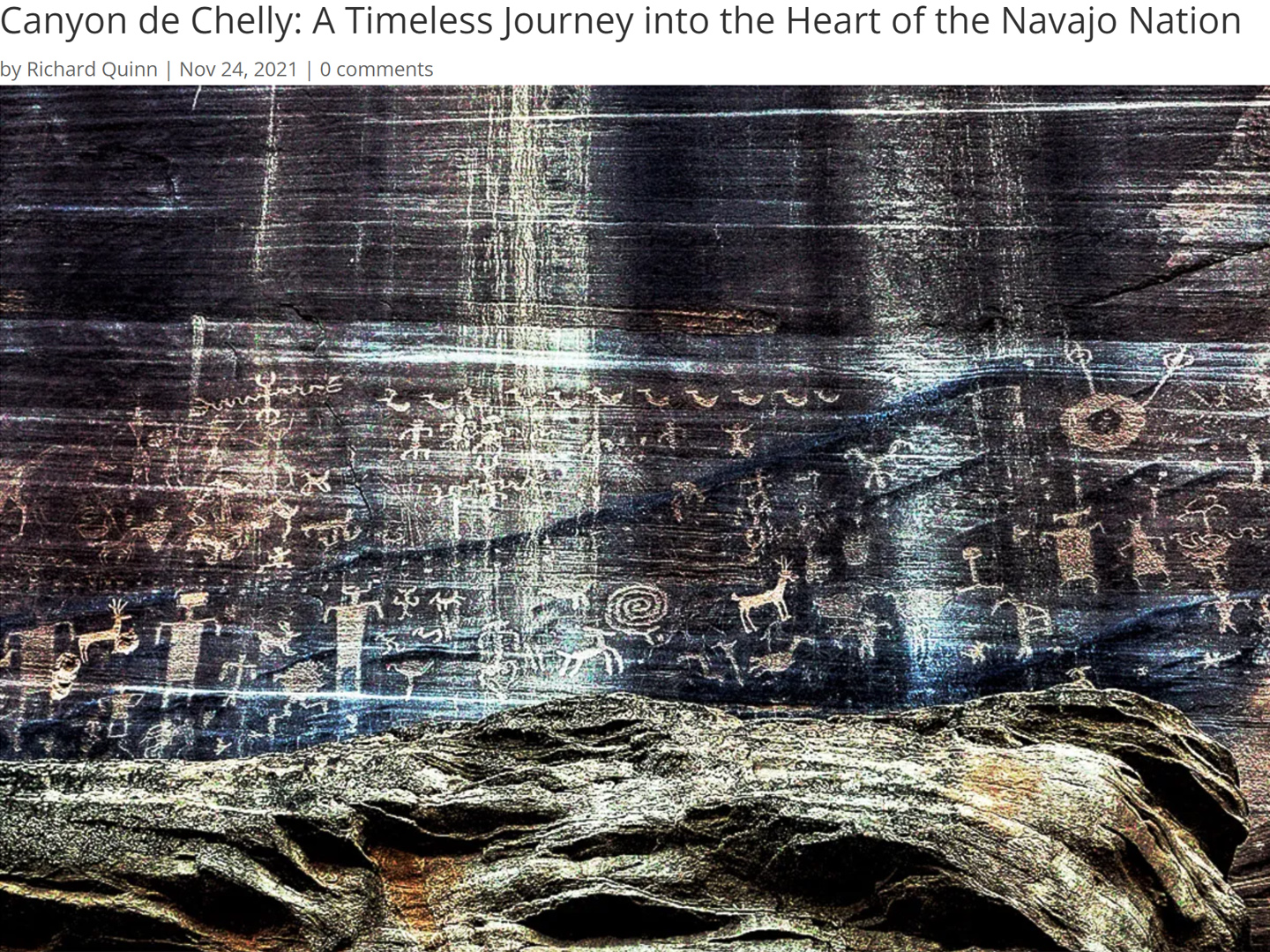
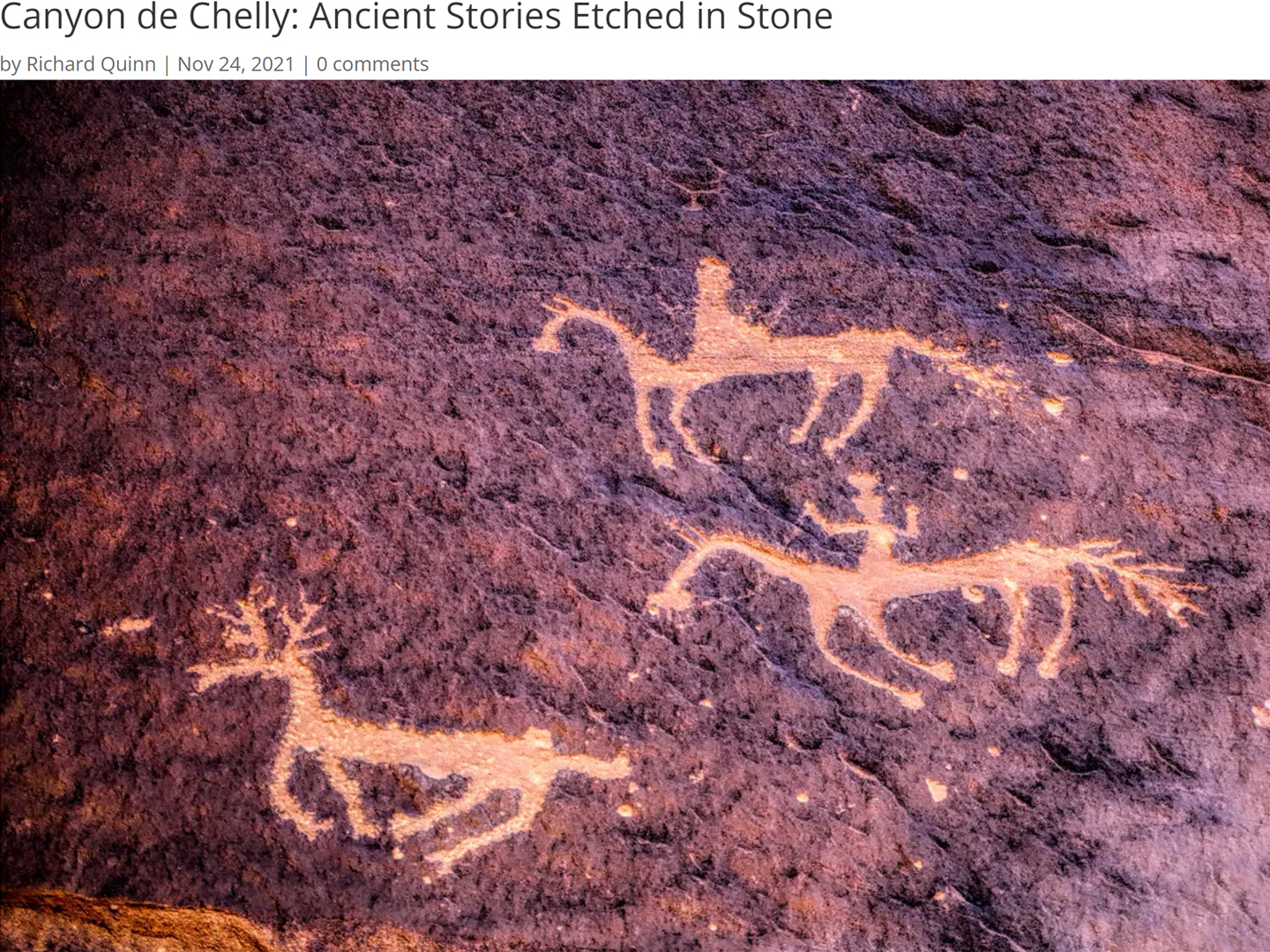
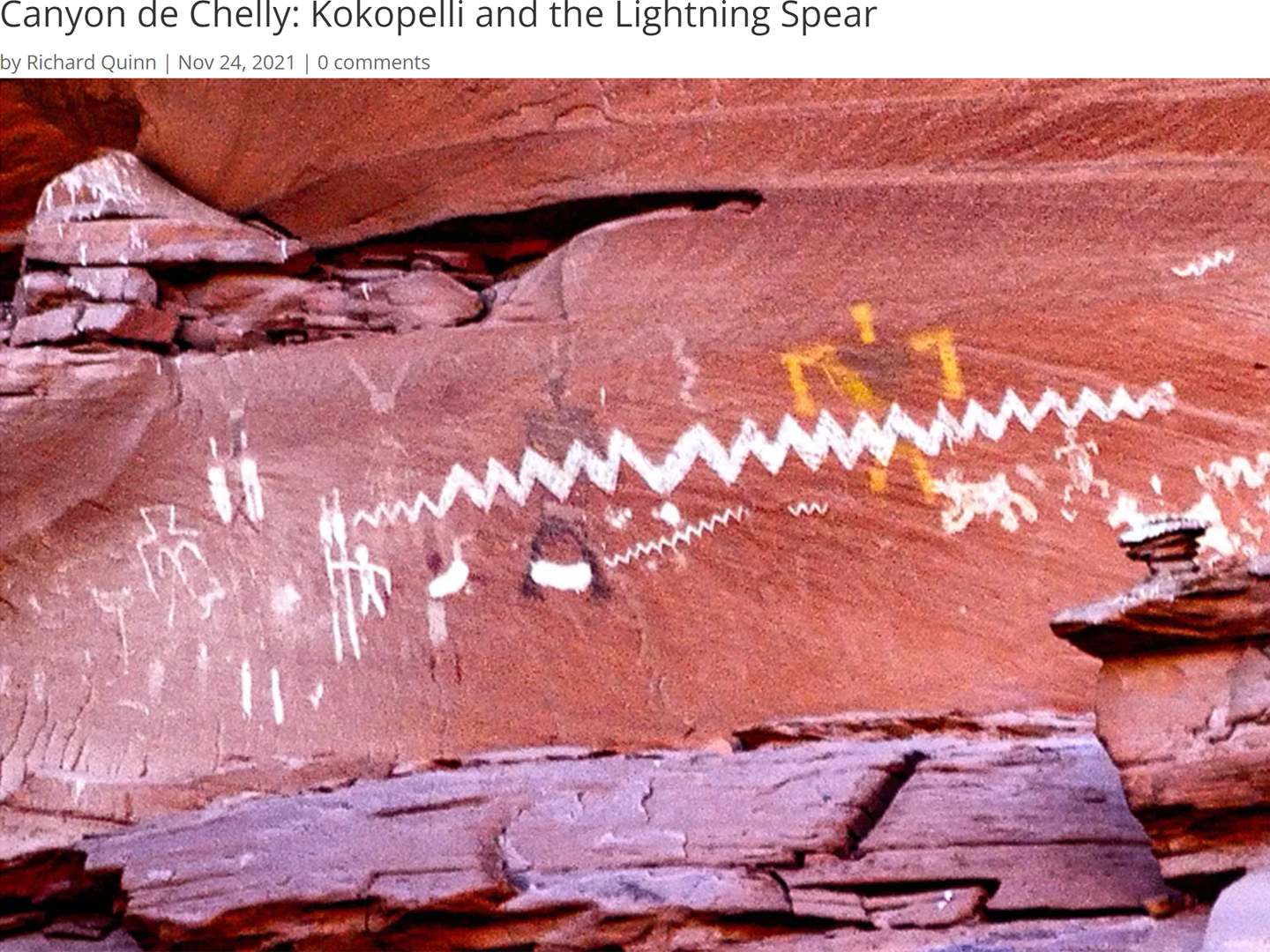
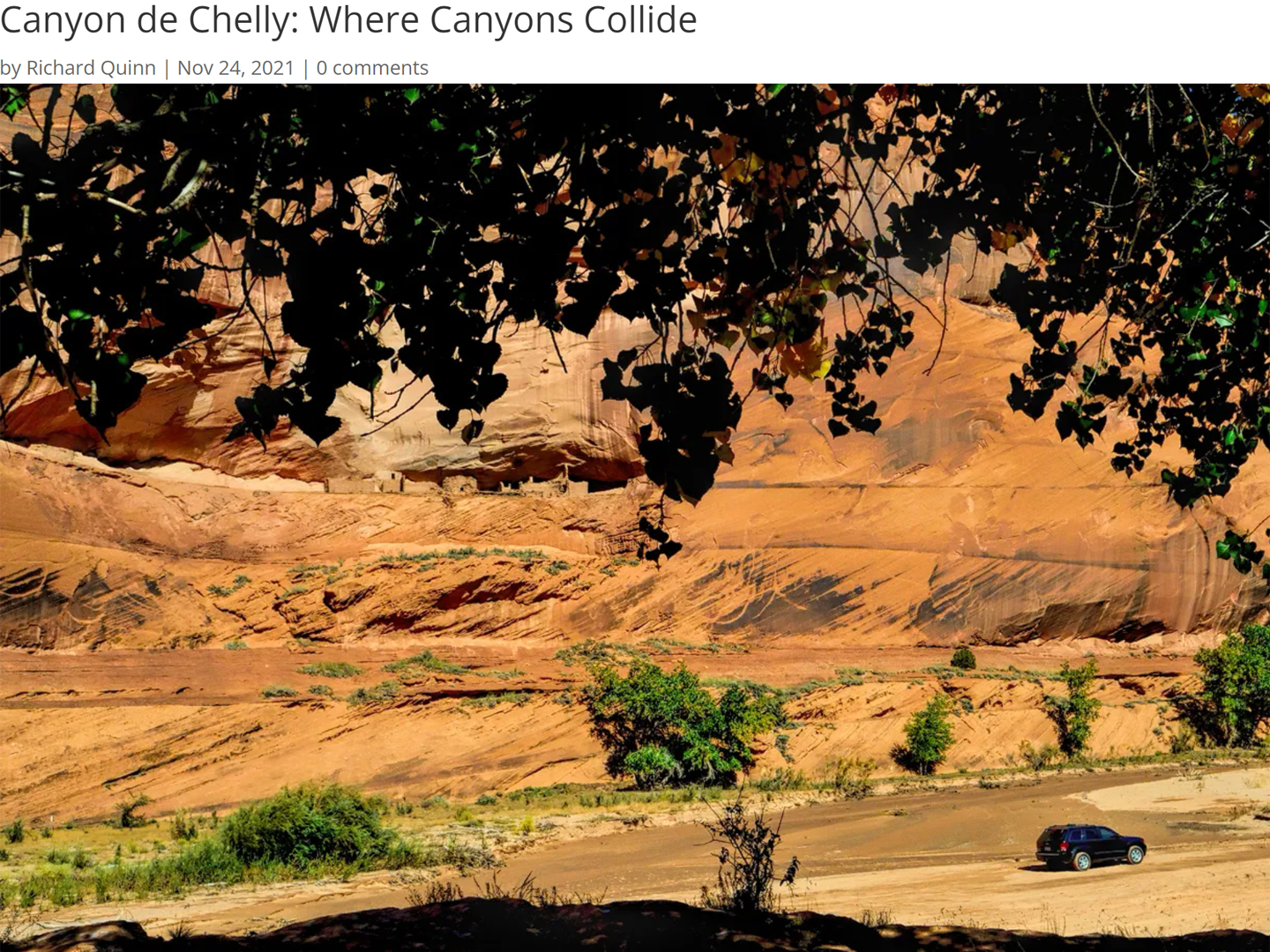
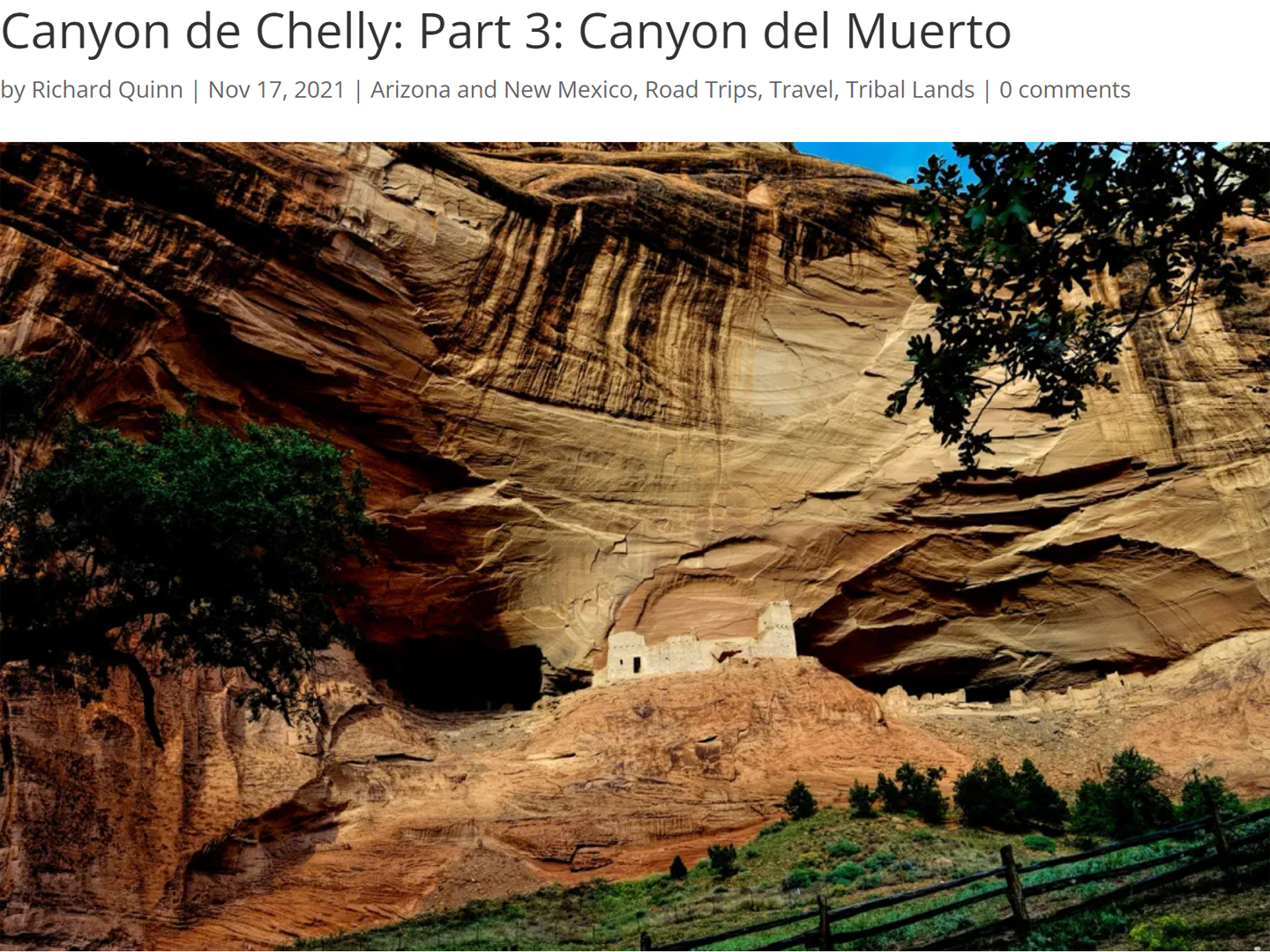
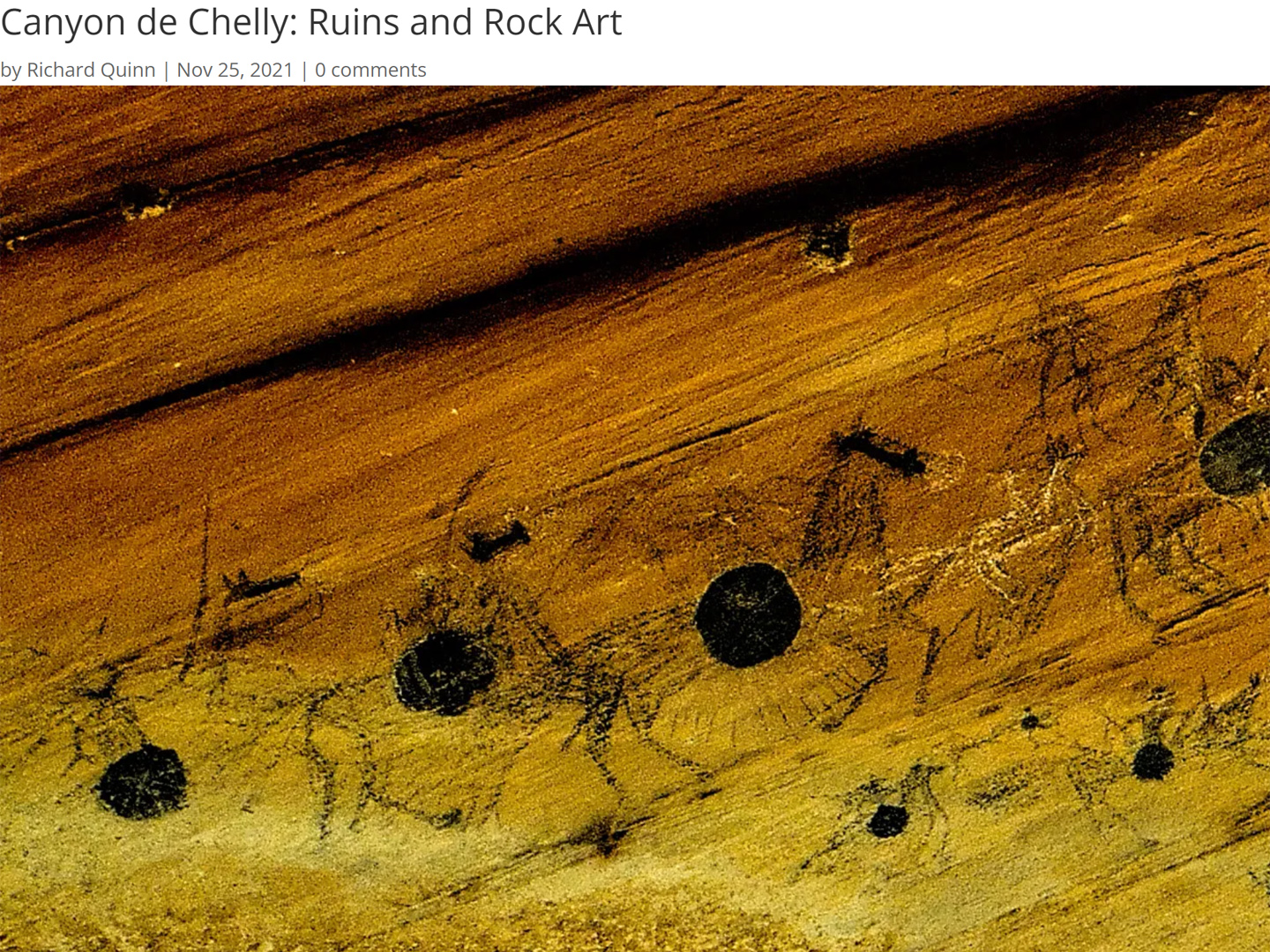
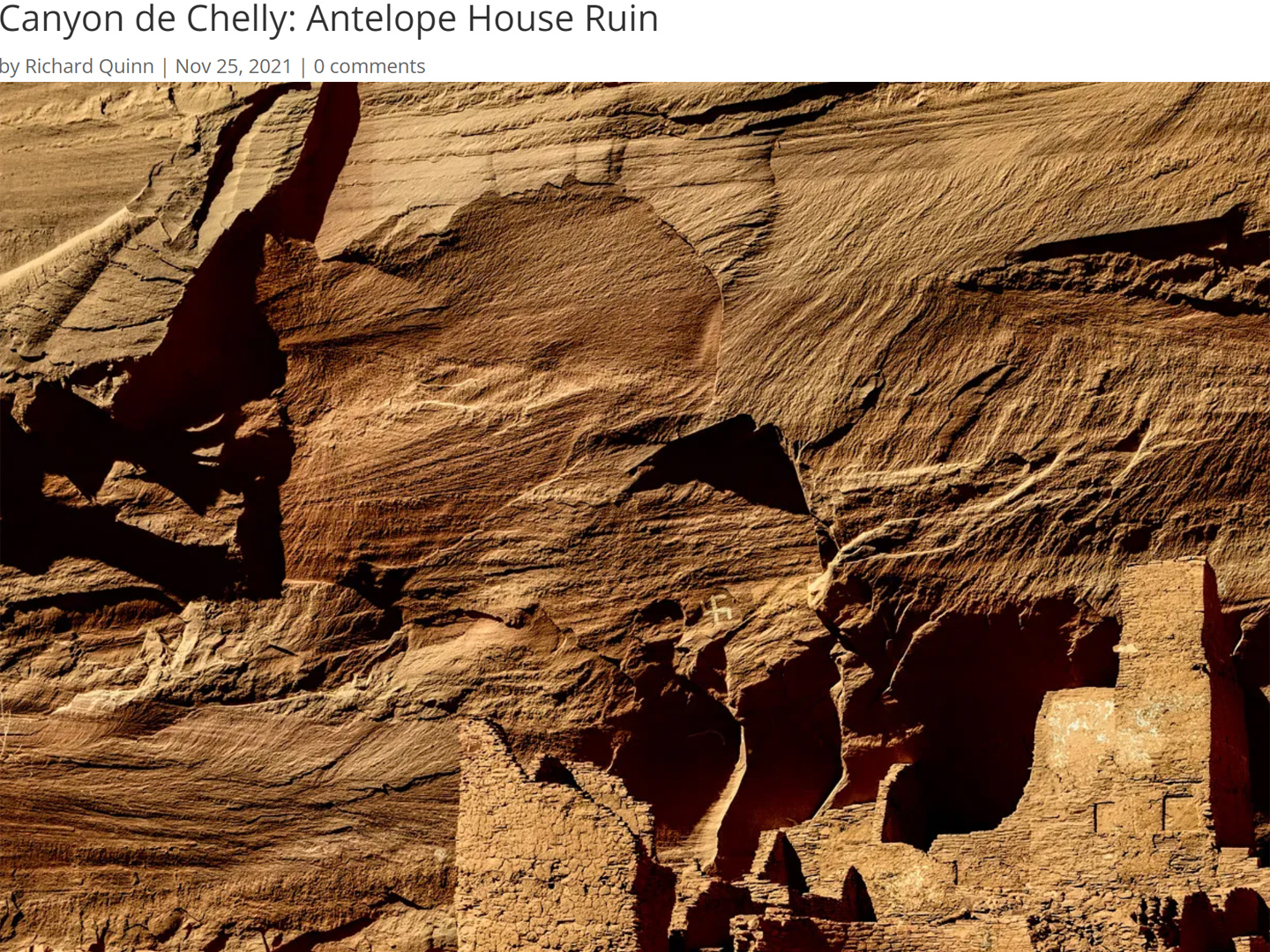
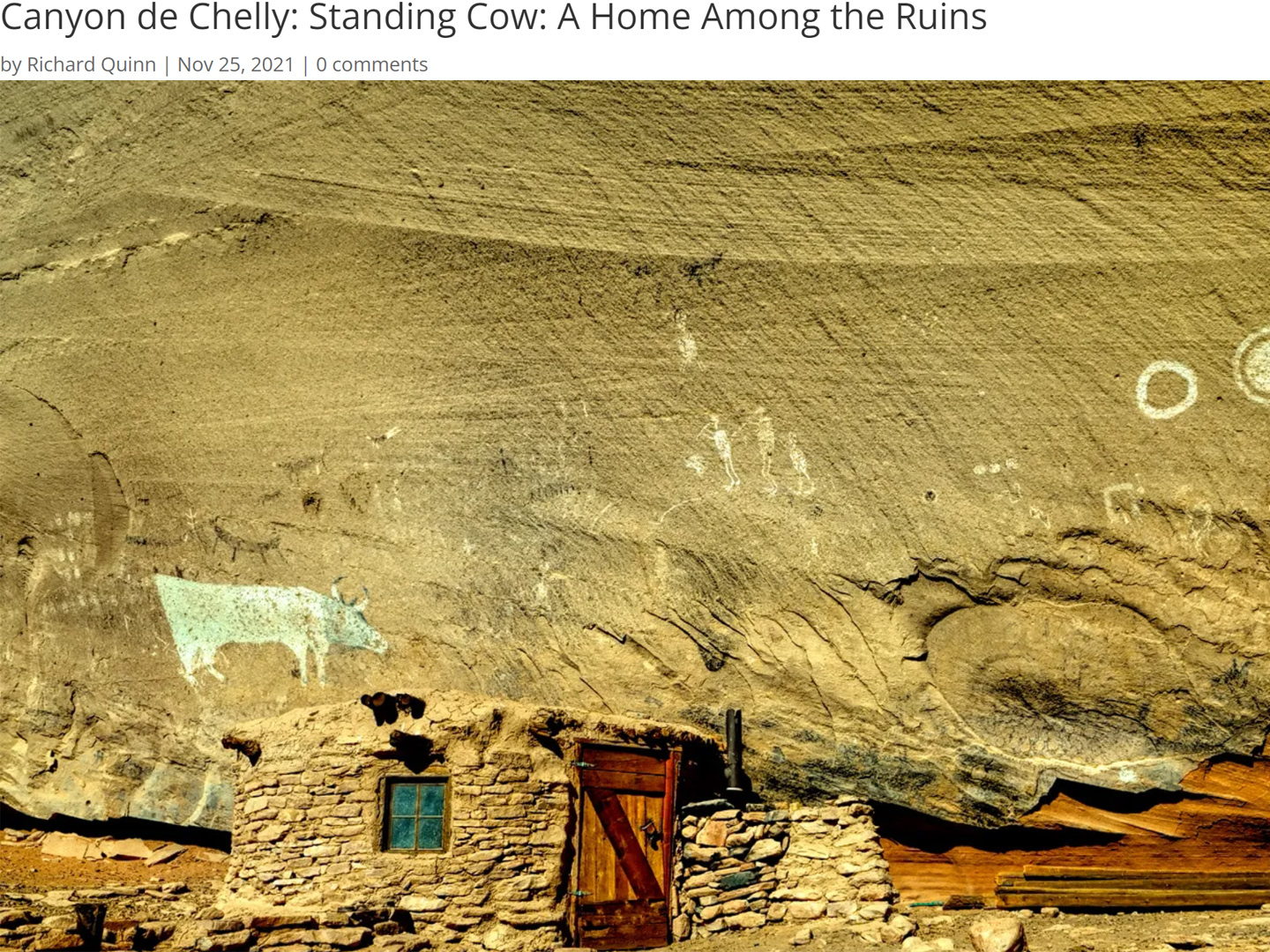
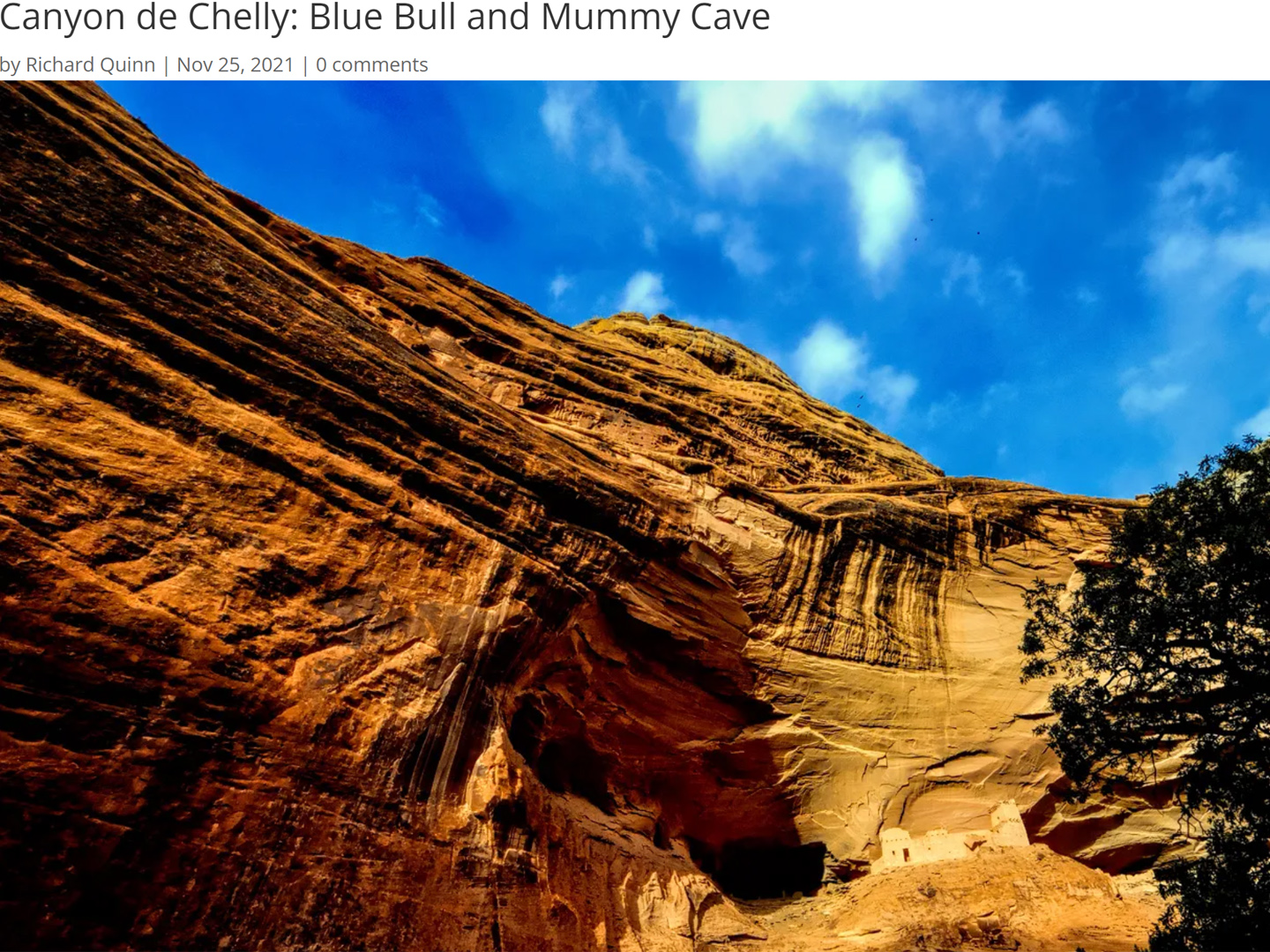
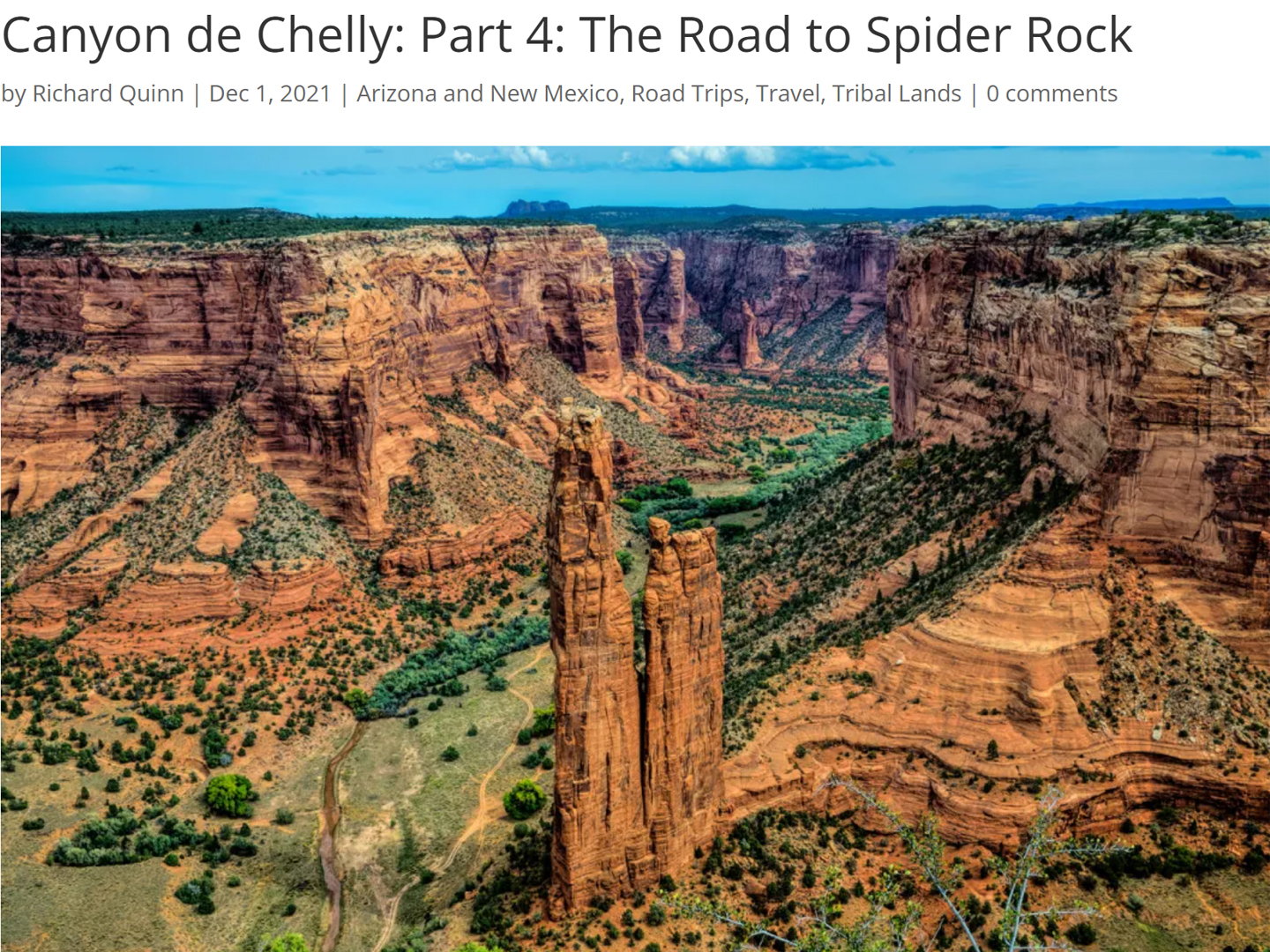
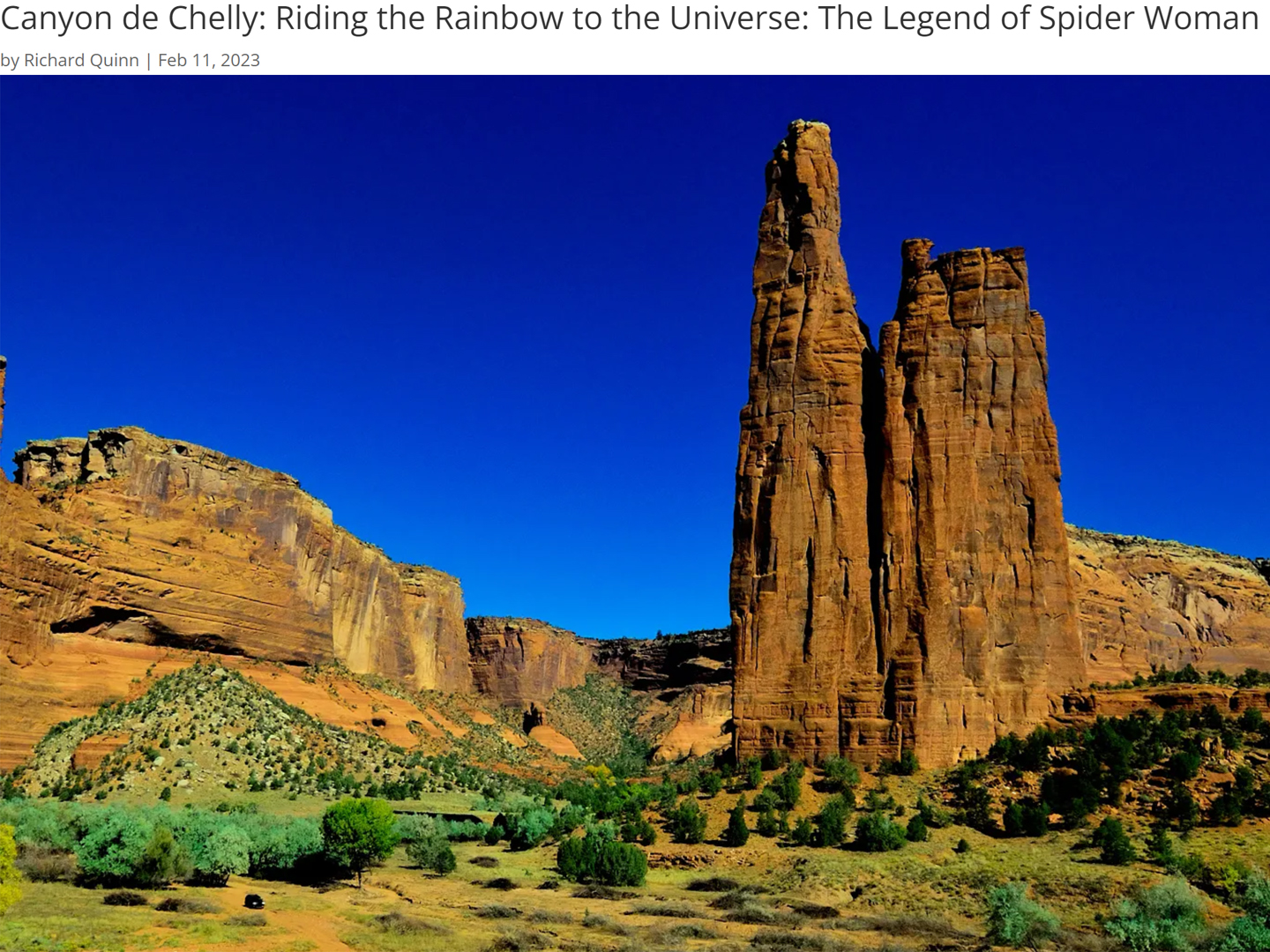
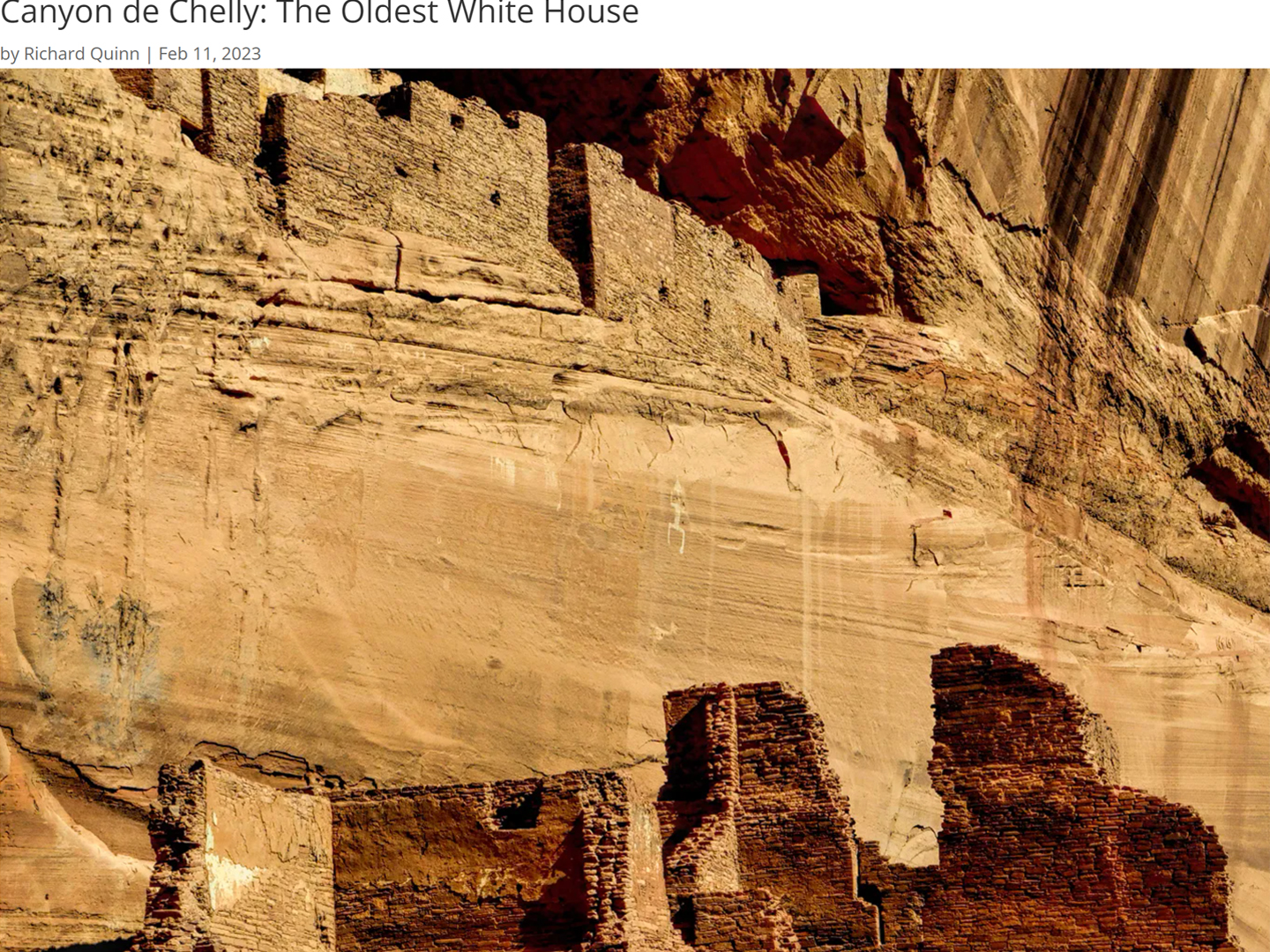
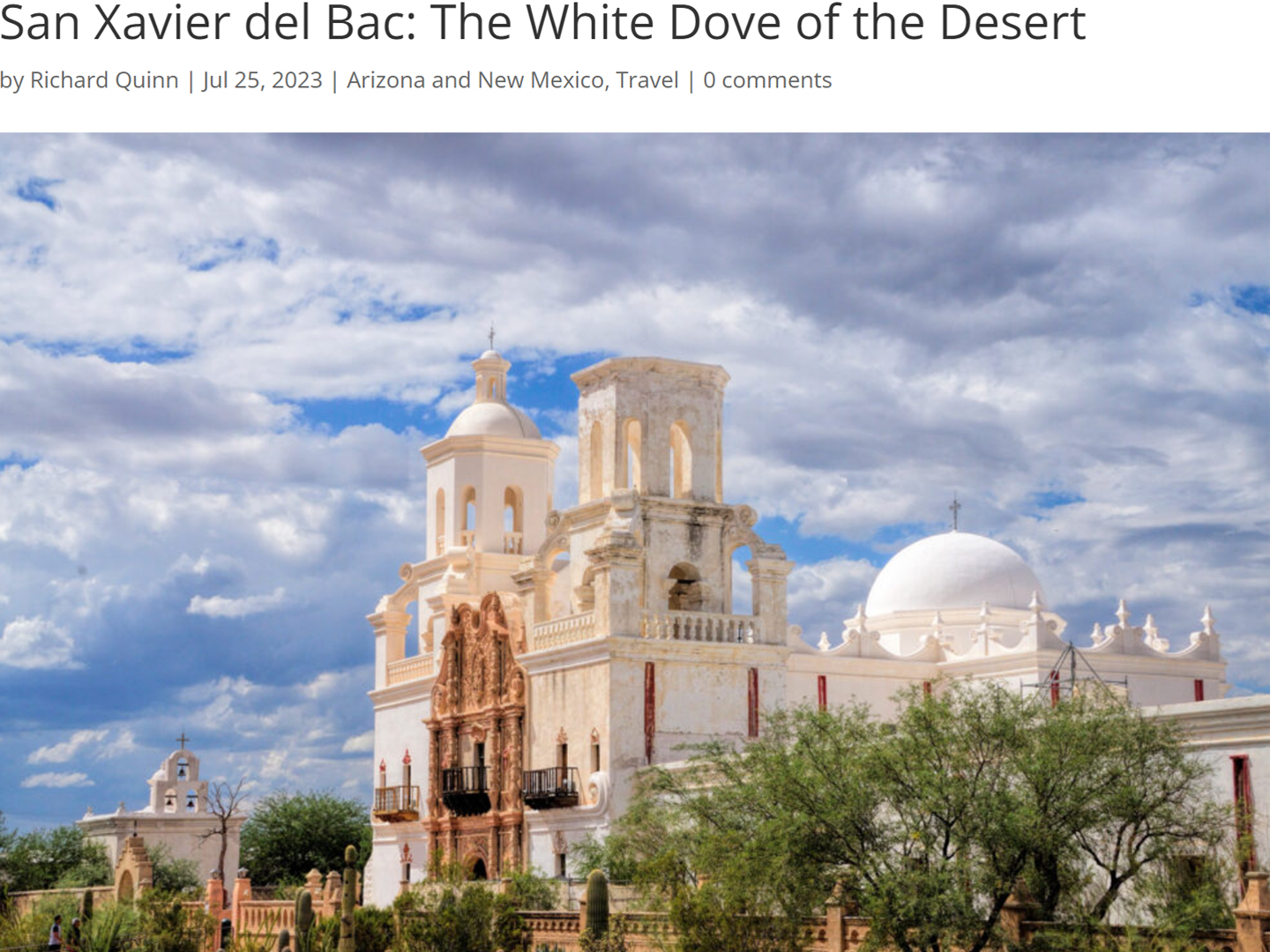
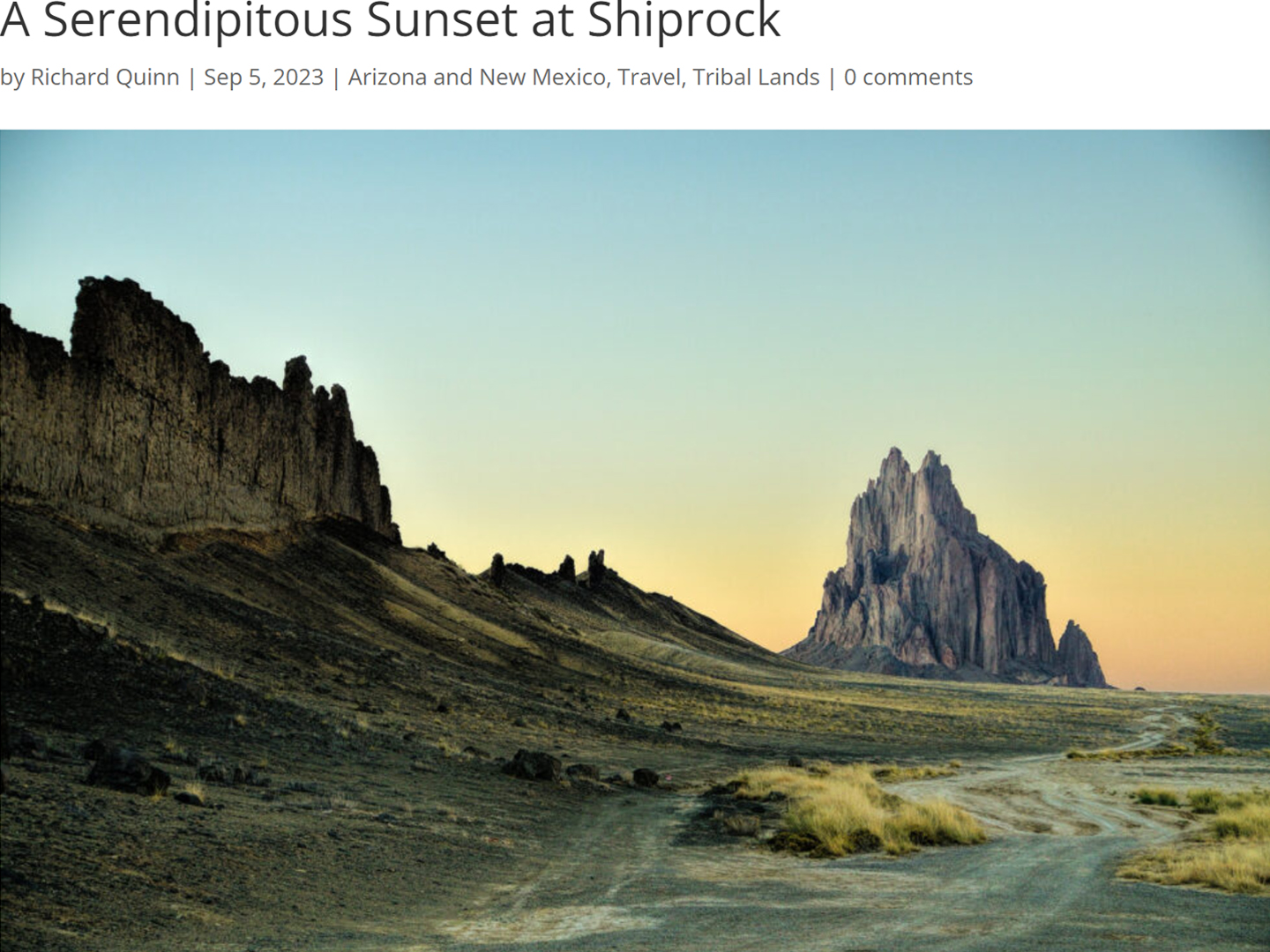


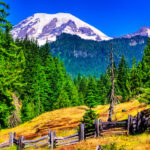
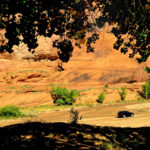
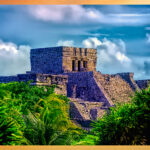
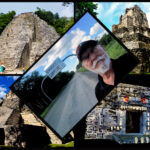
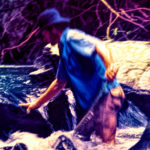
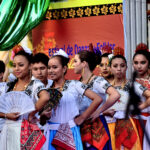
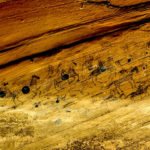
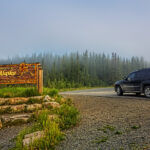
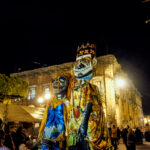
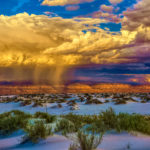
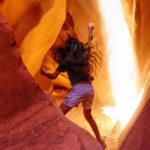
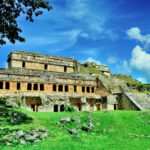
0 Comments